Shade Loving Shrubs: The Best Bushes To Plant Under Trees
Do you have a tree in your yard and don’t know what to do with the empty space underneath? Well, I’m here to tell you that there are plenty of shade loving shrubs that thrive under trees! In fact, many of them actually require those shady spots in order to grow well. So whether your landscape has full shade or partial shade, read on for some recommendations.
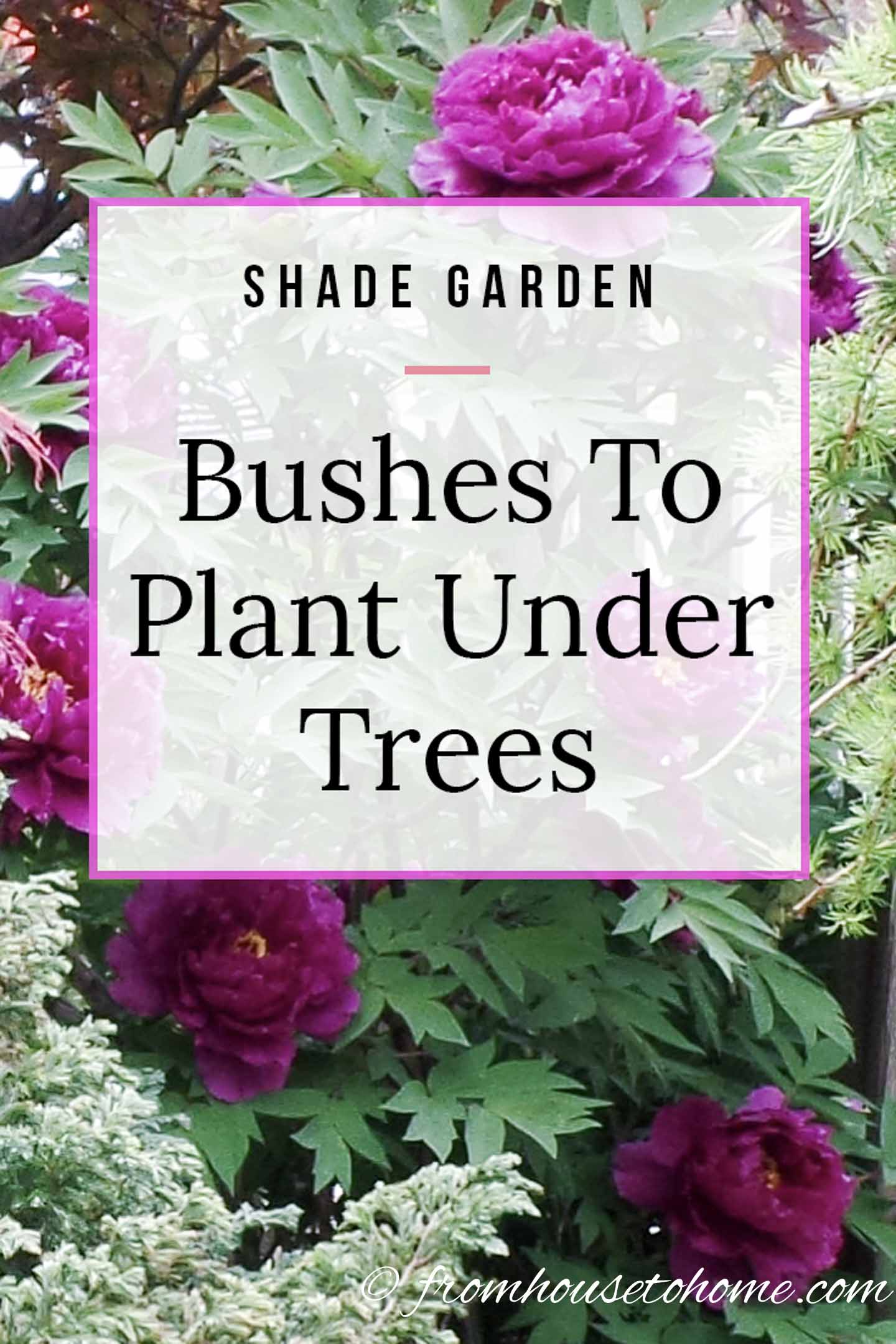
If you’re like me, you have a few trees in your yard and are always looking for plants that will thrive under their shady conditions.
The space between taller trees and low growing perennials lends itself to an array of blooming bushes and interesting foliage plants.
In fact, by growing a variety of shade tolerant shrubs, this shady area is the ideal place for plants that provide all-season interest.
I rely on the glorious flowers of rhododendrons, azalea and mountain laurel in the spring, the magnificence of hydrangeas in the summer, Japanese maple foliage in autumn, and evergreen foliage and bark in the winter.
And those are just a few of the available options. Keep reading to find the best shrubs for shade that you can plant under trees.
Flowering shrubs
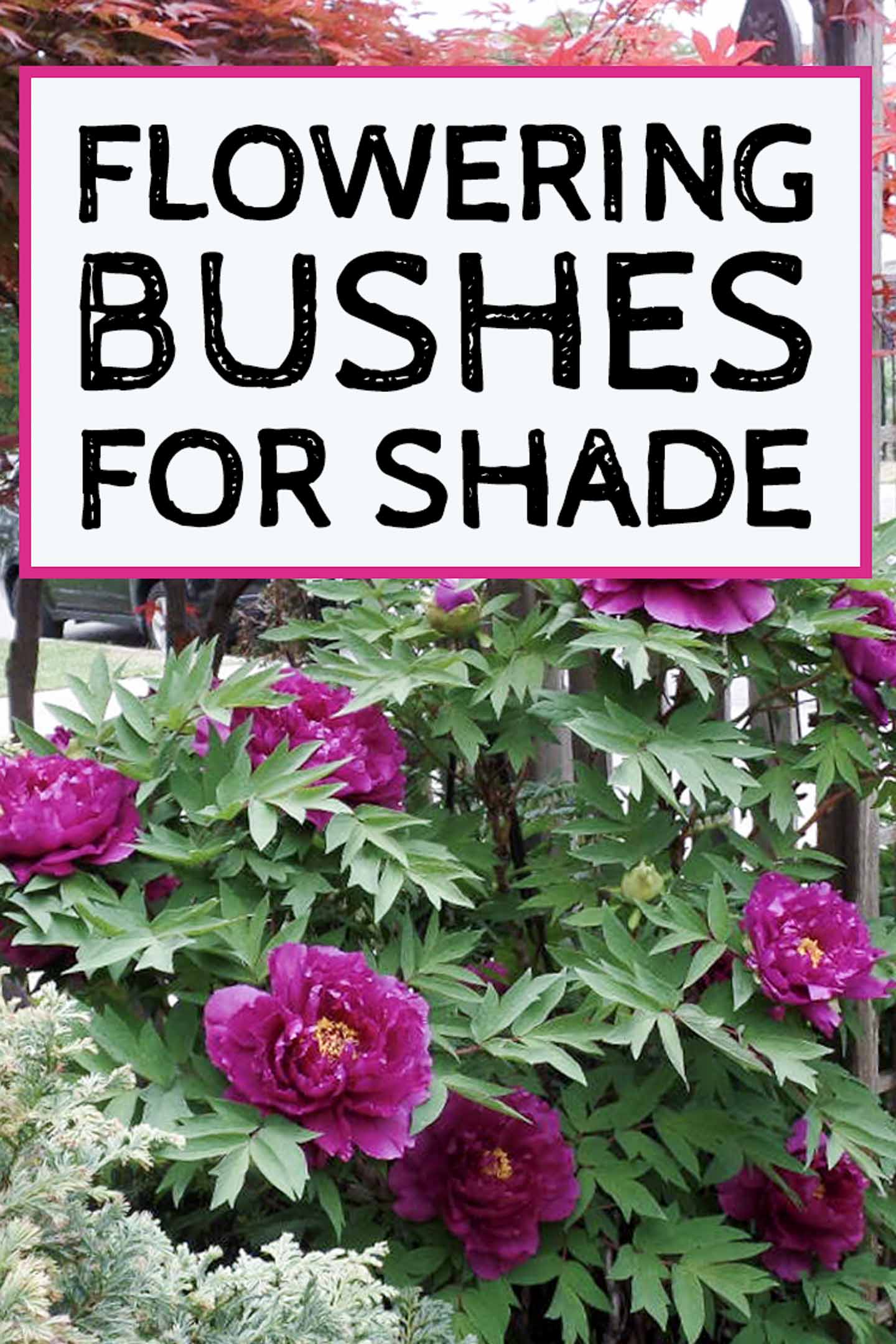
When I’m planting in the shade, I’m always looking for ways to add some color that brightens it up a little.
So I love shrubs for shade gardens that have beautiful blooms.
Luckily there are more of them than you might think! Here are some of my favorite flowering shrubs for shade.
1 | Japanese Andromeda (Pieris Japonica)
This post may contain affiliate links. We make a small commission if you buy the products from these links (at no extra cost to you). As an Amazon Associate, I earn from qualifying purchases. But we only recommend products we would use ourselves. For more information, click here to see our disclosures.
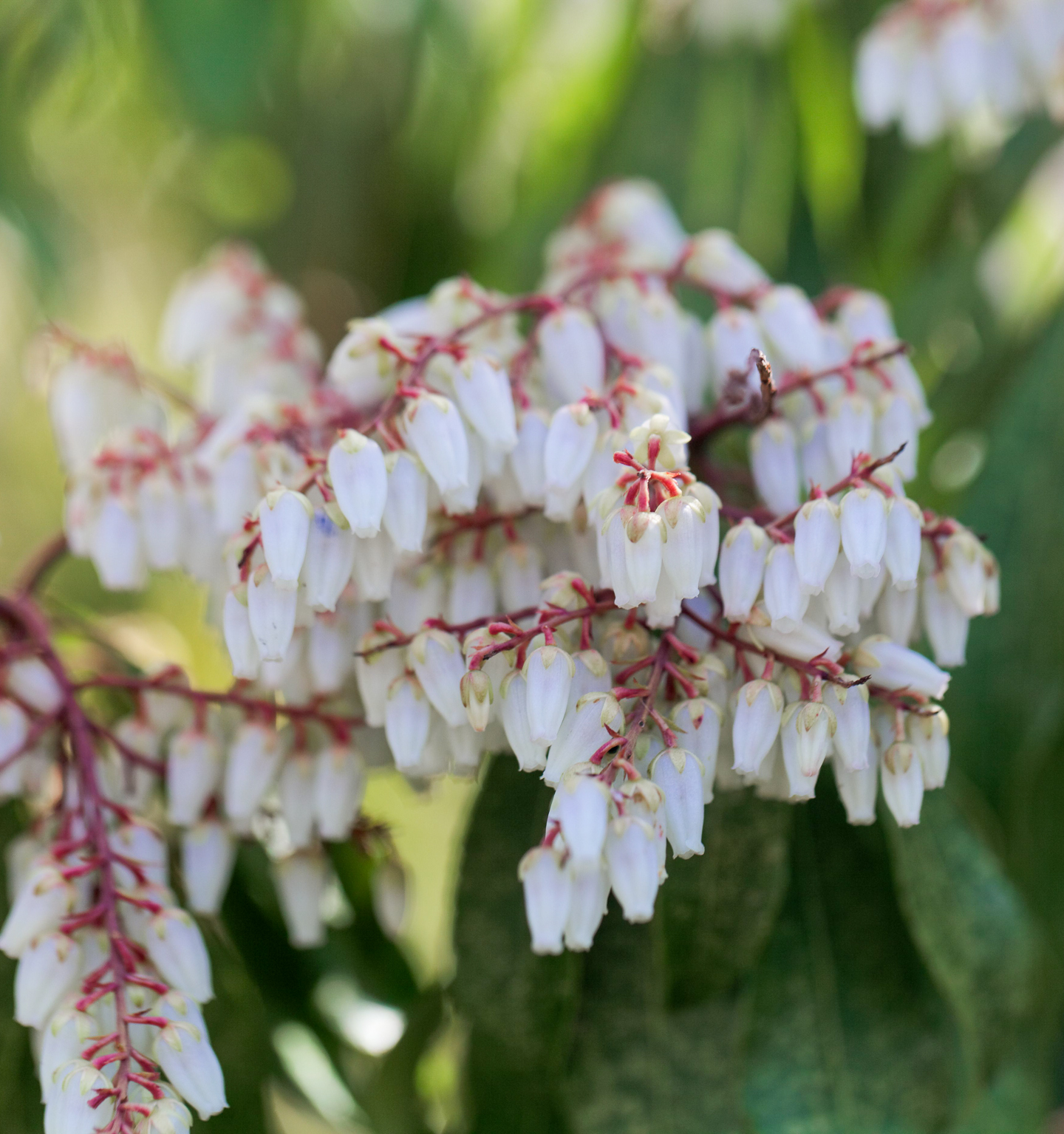
Zones: 5 to 8
Light: Shade to part shade
Bloom Time: Early spring
Height: 3′ to 10′ (depending on the variety)
Spread: 3′ to 10′
Pieris Japonica is a shade tolerant evergreen shrub with leaves that start out red, then change to pink and cream before becoming lime green.
It likes acidic, well drained soil which is characteristic of many of the shrubs that grow well in shade.
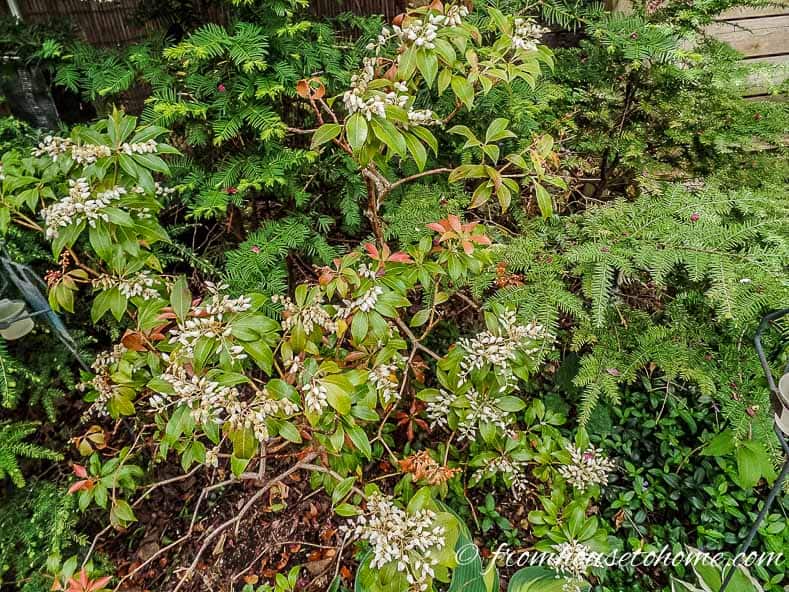
When planted with rhododendrons, azaleas and yews, the bright green leaves add contrast and interest to your garden all year.
In early spring, the stems are crowned with white or pink star-shaped clusters.
Learn more about growing Pieris Japonica HERE.
2 | Mountain Laurel (Kalmia latifolia)
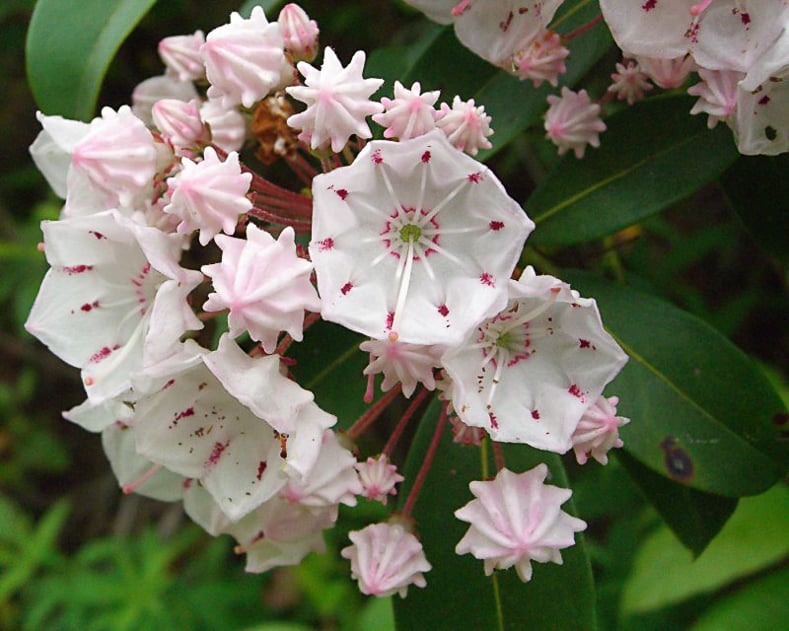
Zones: 3 – 11
Light: Full shade to part sun
Bloom Time: Late Spring to Early Summer
Height: 3′ to 12′ tall (depending on the variety)
Spread: 3′ to 12′ tall
Another fabulous late spring/early summer bloomer is the Mountain Laurel (Kalmia latifolia).
It is another one of the evergreens for shade that prefers acidic soil, sheltered conditions, and mulch for moisture retention.
The pink blooms take your breath away with their beauty.
Learn more about growing Mountain Laurel.
3 | Rhododendron

Zones: 4 to 9
Light: Shade to part shade
Bloom Time: Spring
Height: 3′ to 12′ (depending on the variety)
Spread: 3′ to 12′
As long as the soil conditions are acidic and regular moisture is provided, rhododendrons are the perfect flowering shrub for the mid-story. They thrive in the dappled shade under trees, but can grow in full or part shade.
Rhododendrons need shelter from winds and the sun, and require little or no pruning.
Mulch is important to protect the shallow roots and replace nutrients in the soil.
I like the contrast in shape of the broadleaf evergreen leaves among the needled yews.
Rhododendron’s range of colors and spring bloom times provide a succession of fabulous blossom from April to June.
When the early Rhododendrons are covered in magenta or fuchsia flowers, my heart sings and my soul recovers from the blight of winter.
Get some tips on growing Rhododendrons.
Buy them (including the purple one) HERE.*
4 | Azalea
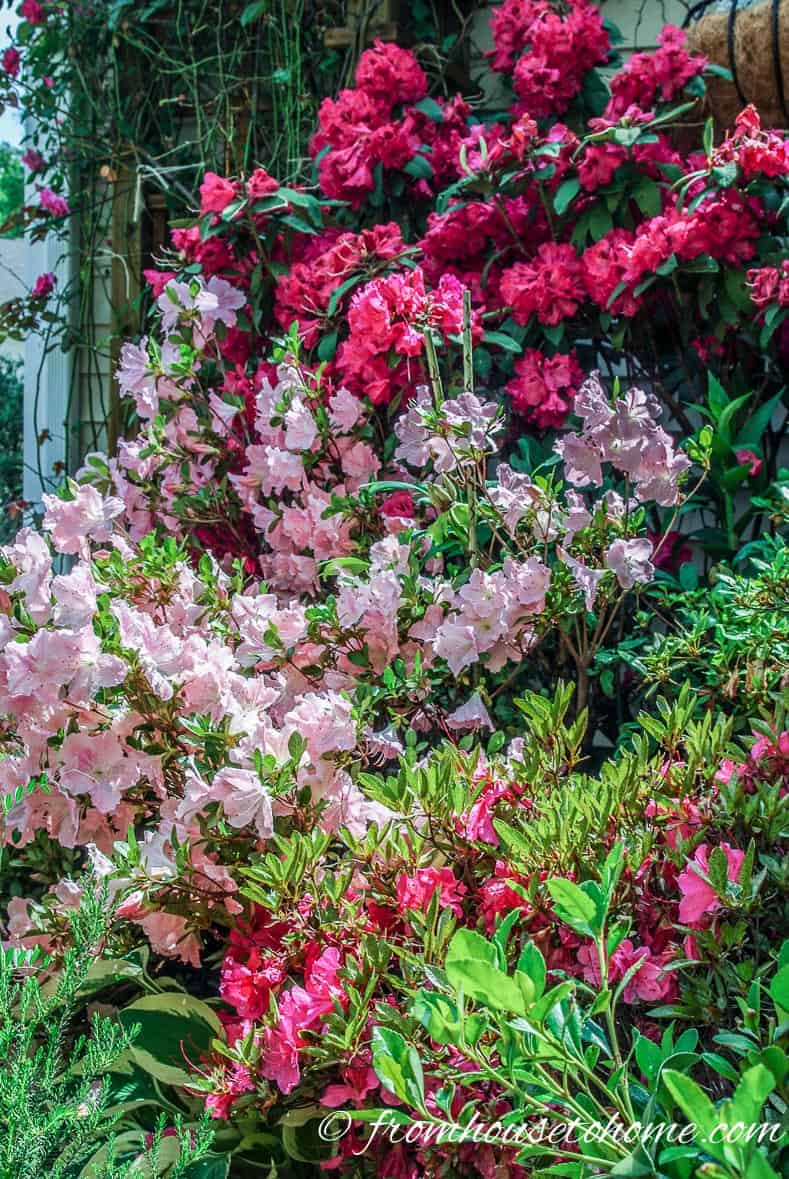
Zones: 2 to 9
Light: Partial shade to sun (depending on the variety)
Bloom Time: Spring, some re-bloom in the Fall
Height: 2′ to 6′ tall
Spread: 2′ to 4′ wide
Azaleas are members of the Rhododendron family and have the same acidic soil and protected growth requirements. And also make the list as one of the best shrubs for shade.
The difference is that azaleas are generally smaller plants and can be either deciduous or evergreen bushes.
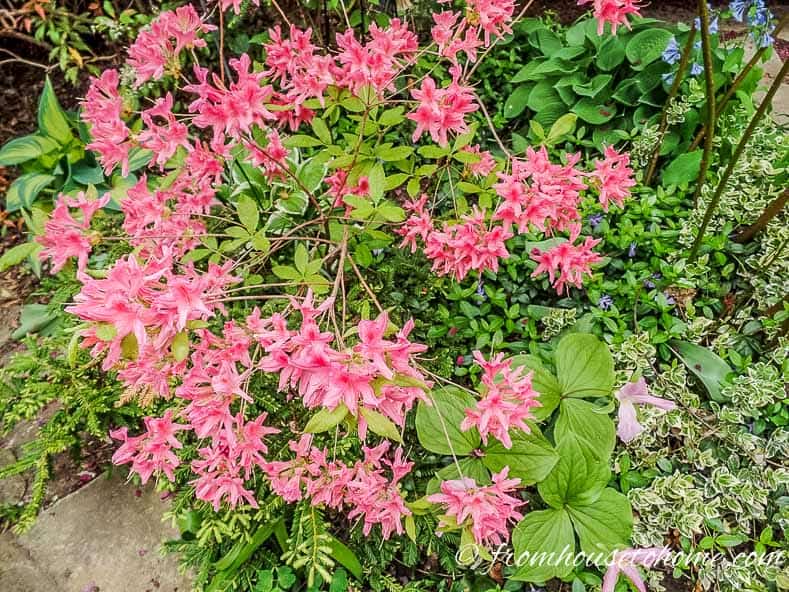
The Northern Lights series is tough, no care and (as the name suggests) is bred to survive the cold.
Their blossoms precede their leaves in spring and are a joy to behold.
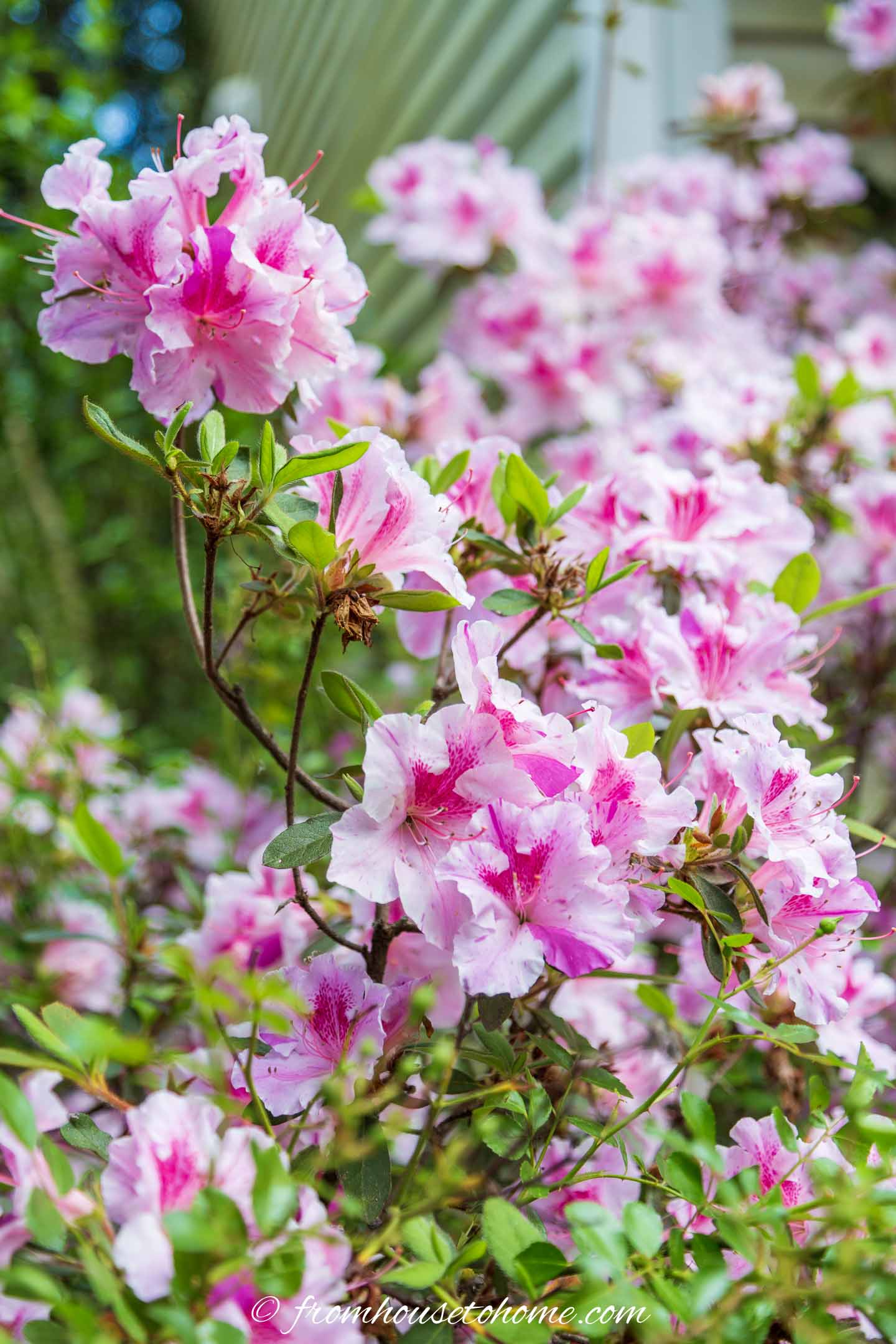
The Encore series is evergreen and not as hardy, but blooms a second time in the fall.
They are available in a wide range of colors.
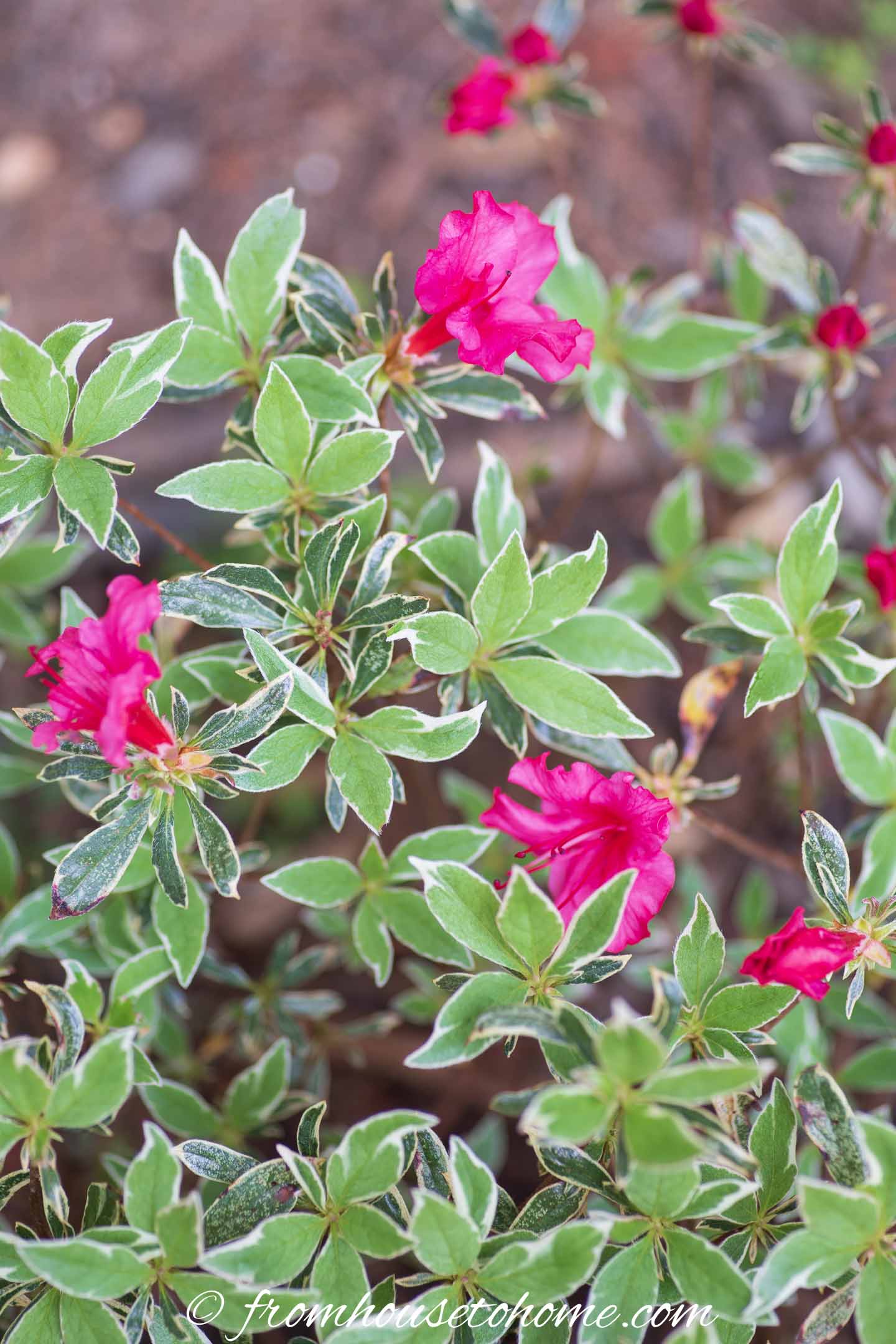
‘Bollywood’ is an evergreen variety that has variegated leaves with pretty red to fuchsia flowers.
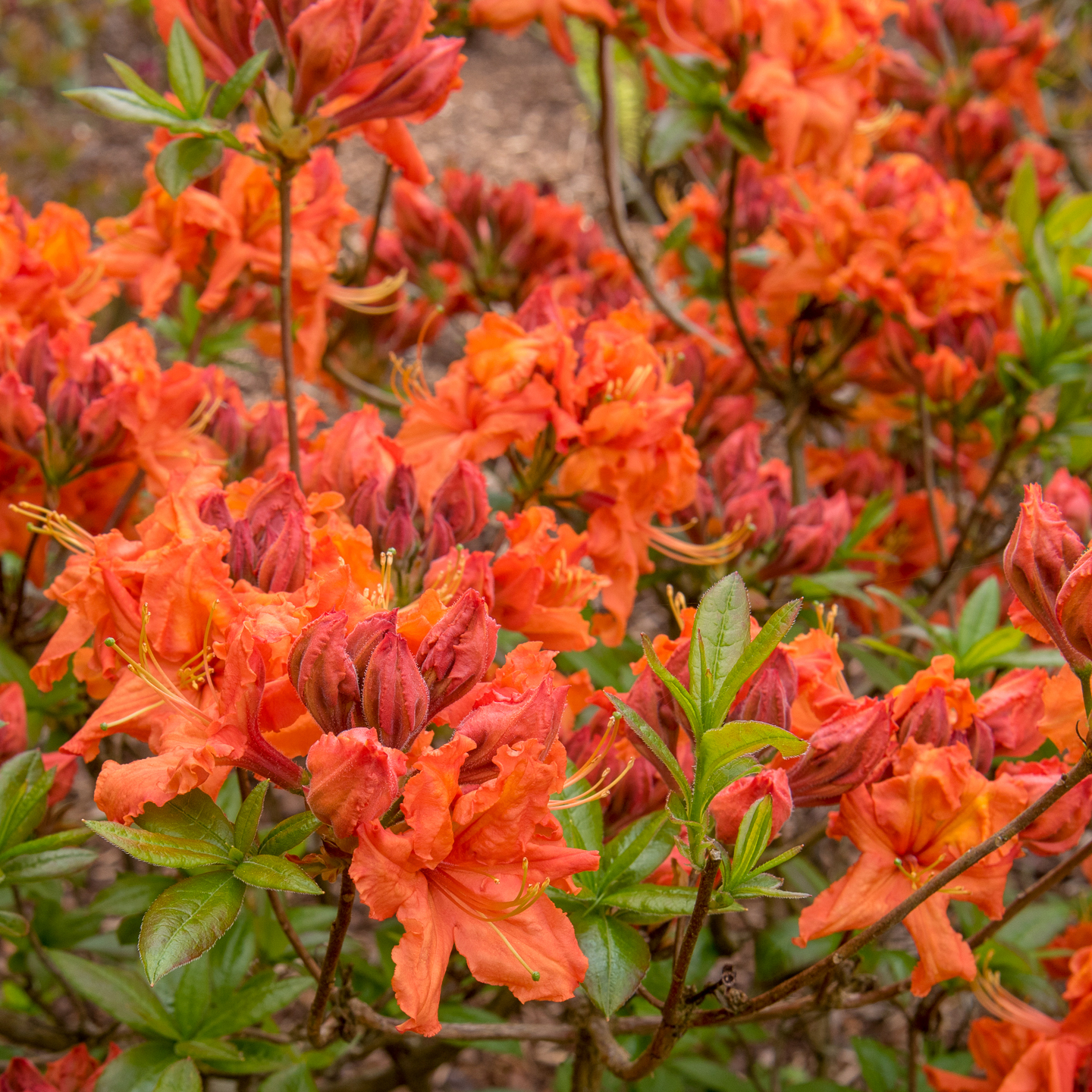
And there are even a few Azaleas with bright orange flowers like this one called ‘Gibraltar’ (you can find it HERE*).
In my opinion, no spring garden should be without these bright, glorious flowering shrubs.
5 | Tree Peony (Paeonia suffruticosa)
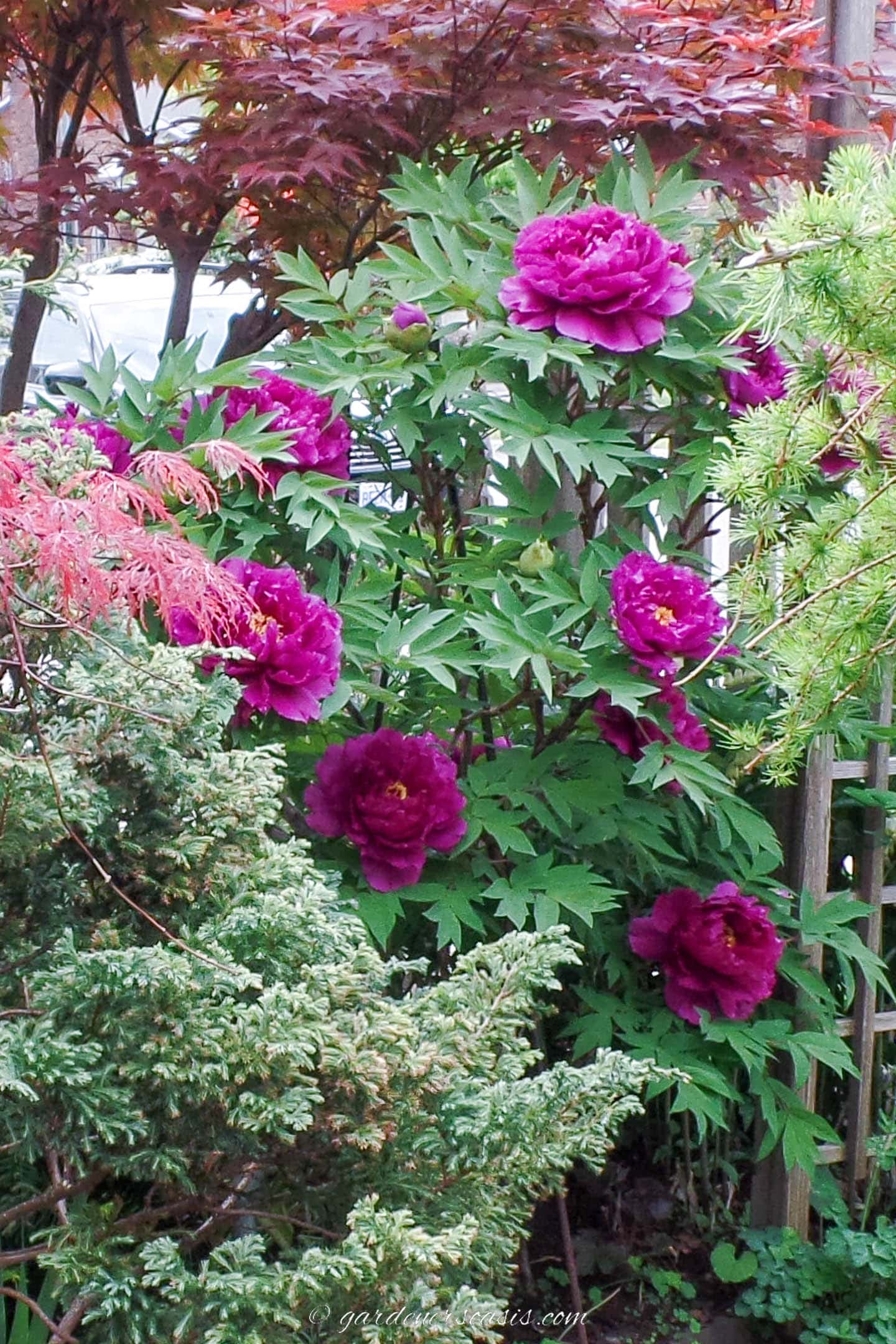
Zones: 4 to 8
Light: Partial shade
Bloom Time: Spring
Height: 3′ to 8′ (depending on the variety)
Spread: 3′ to 6′
Unlike their full-sun cousins (perennial peonies), Tree Peonies (Paeonia suffruticosa) thrive in the dappled shade under trees.
This deciduous flowering shrub likes acidic to neutral soil.
A much tougher plant than it looks, it is definitely low maintenance – requires only regular watering and mulching.
Tree peonies produce huge luncheon plate sized ruffled flowers in mid-spring. I counted 15 blossoms on the tree peony ‘Pluto’ (as seen in the picture above) in my front shade border this year.
Learn more about how to grow tree peonies.
You can find a lot of different varieties for sale (including ‘Pluto’) HERE.
6 | Shade Hydrangeas
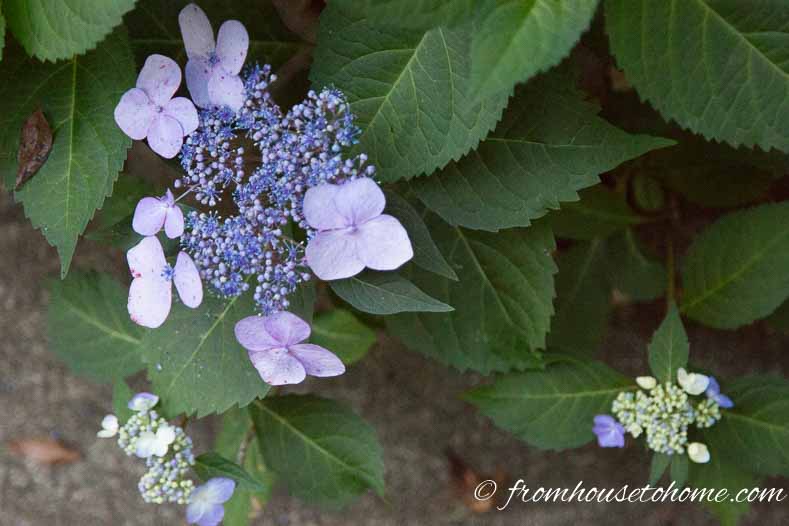
Zones: 3 to 9
Light: Partial shade
Bloom Time: Summer to Fall
Height: 3′ to 5′ (depending on the variety)
Spread: 3′ to 5′
Big green leaves and prolific magnificent blooms describe this entry in our shrubs for shade list.
Hydrangeas, as the name (hydra) implies, need to be kept well watered.
They are deciduous bushes that blossom from July through September.
The pruning care requirements are dependent on the type.
Hydrangea macrophylla (bigleaf, hophead, lacecap, and florist hydrangea) should only have dead and weak stems removed immediately after the blooms fade. Otherwise, it will not flower next year.
It blooms on old wood, so resist the urge to trim the dead looking stems in the spring!
With the exception of the white bloomers, and some new introductions (e.g. ‘pistachio’), the color of Hydrangea macrophylla flowers is dependent on the pH of the soil—blue in acidic and pink in alkaline.
Buy Hydrangea macrophylla HERE.*
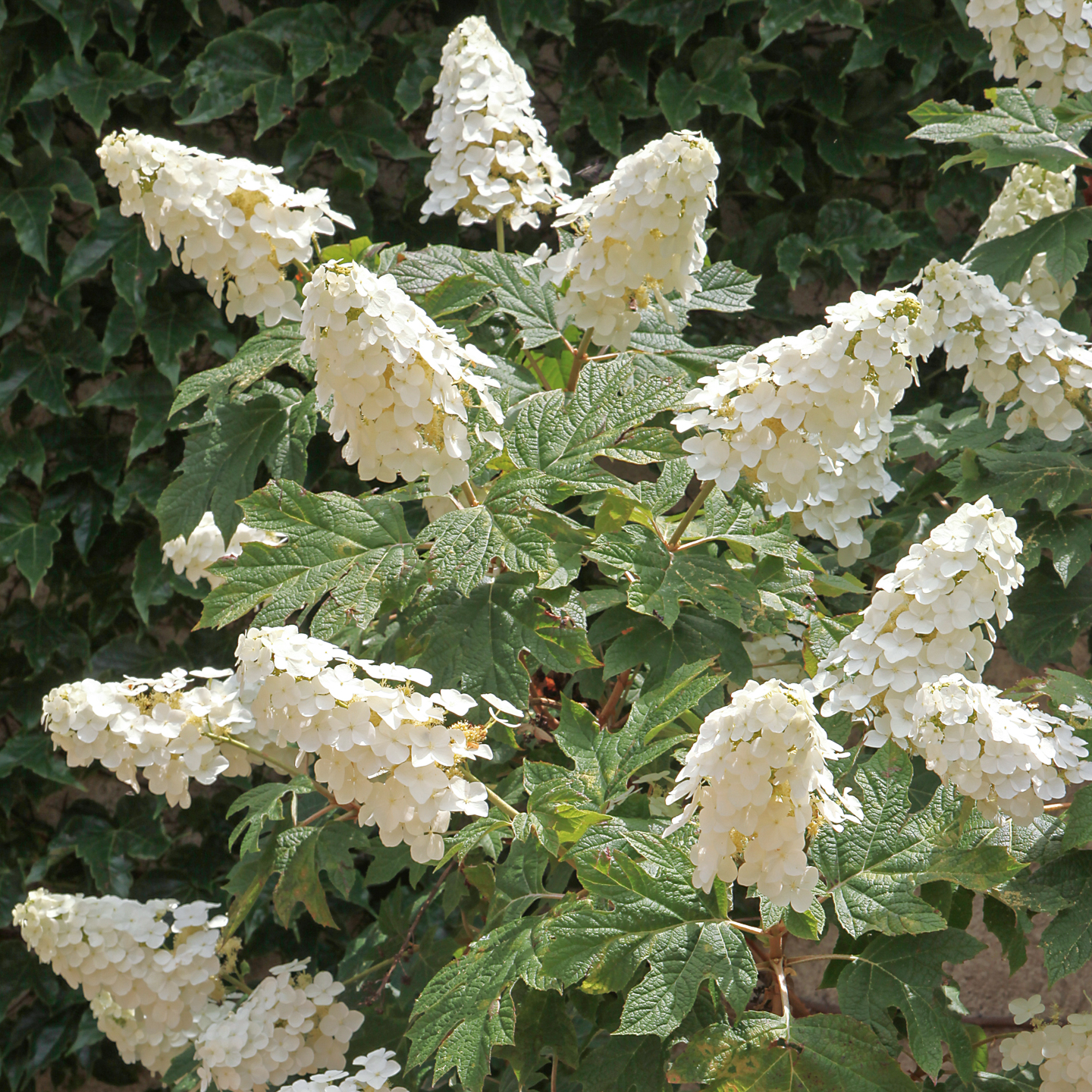
Oakleaf Hydrangea (Hydrangea quercifolia) is an understory plant indigenous to the southeastern United States and is poplar in the home garden border for its all-season interest.
Its distinctive oak-shaped leaves turn bright red in the fall and the exfoliating bark of its stems is interesting in the winter and early spring.
It likes acidic soil and needs no pruning.
Note: While most Hydrangea varieties do well in the shade, Hydrangea paniculata grows better in the sun, so be sure to check what kind you are buying.
Get some tips on how to get the best blooms from your Hydrangea.
7 | Camellia

Zones: 6 – 10
Light: Partial shade to shade
Bloom Time: Fall, winter, or spring (depending on the variety)
Height: 18″ to 25′ tall
Spread: 18″ to 8′ wide
Camellias are another of the evergreen shrubs that grow well in the shade.
The big difference with this bush is the time of year that it flowers. Depending on the variety, it can bloom any time between October and April. And those blooms are stunning!
Even better? Once established, Camellias require very little maintenance to keep them healthy.
8 | Daphne
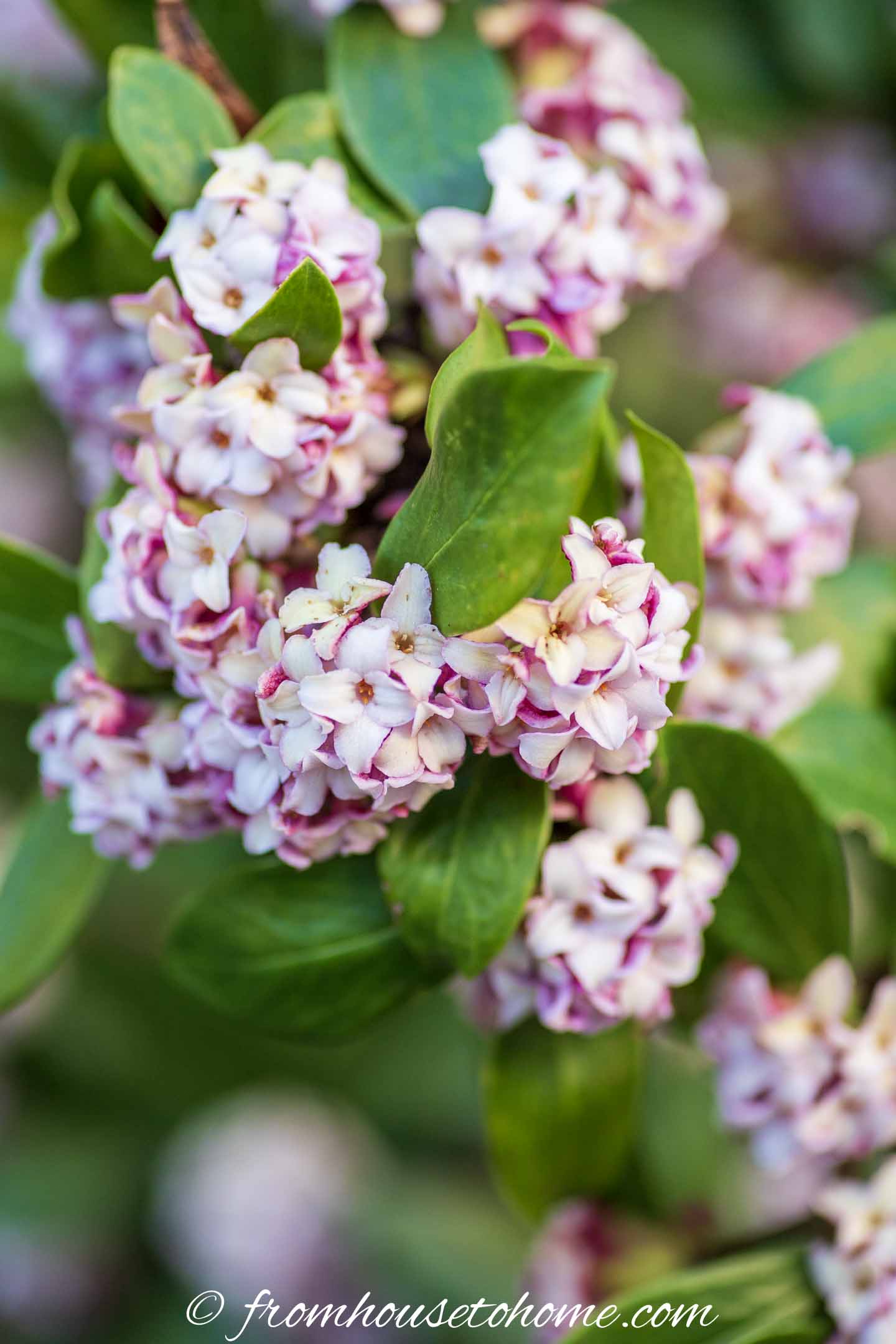
Zones: 5 to 10
Light: Shade to part shade
Bloom Time: Late winter to early spring
Height: 3′ to 5′
Spread: 3′ to 5′
Next on our list of shrubs for shade is Daphne.
Most varieties have evergreen leaves and produce pink or white fragrant blooms in late winter or early spring.
In my garden, it’s one of the plants that lets me know spring is coming. When I open the front door and can smell the Daphne’s perfume (even before I see the flowers), I know winter is almost over!
It can be a little tricky to get started, but once it is established, Daphne is a very low maintenance plant.
Find out more about growing Daphne.
9 | Virginia Sweetspire (Itea virginica)
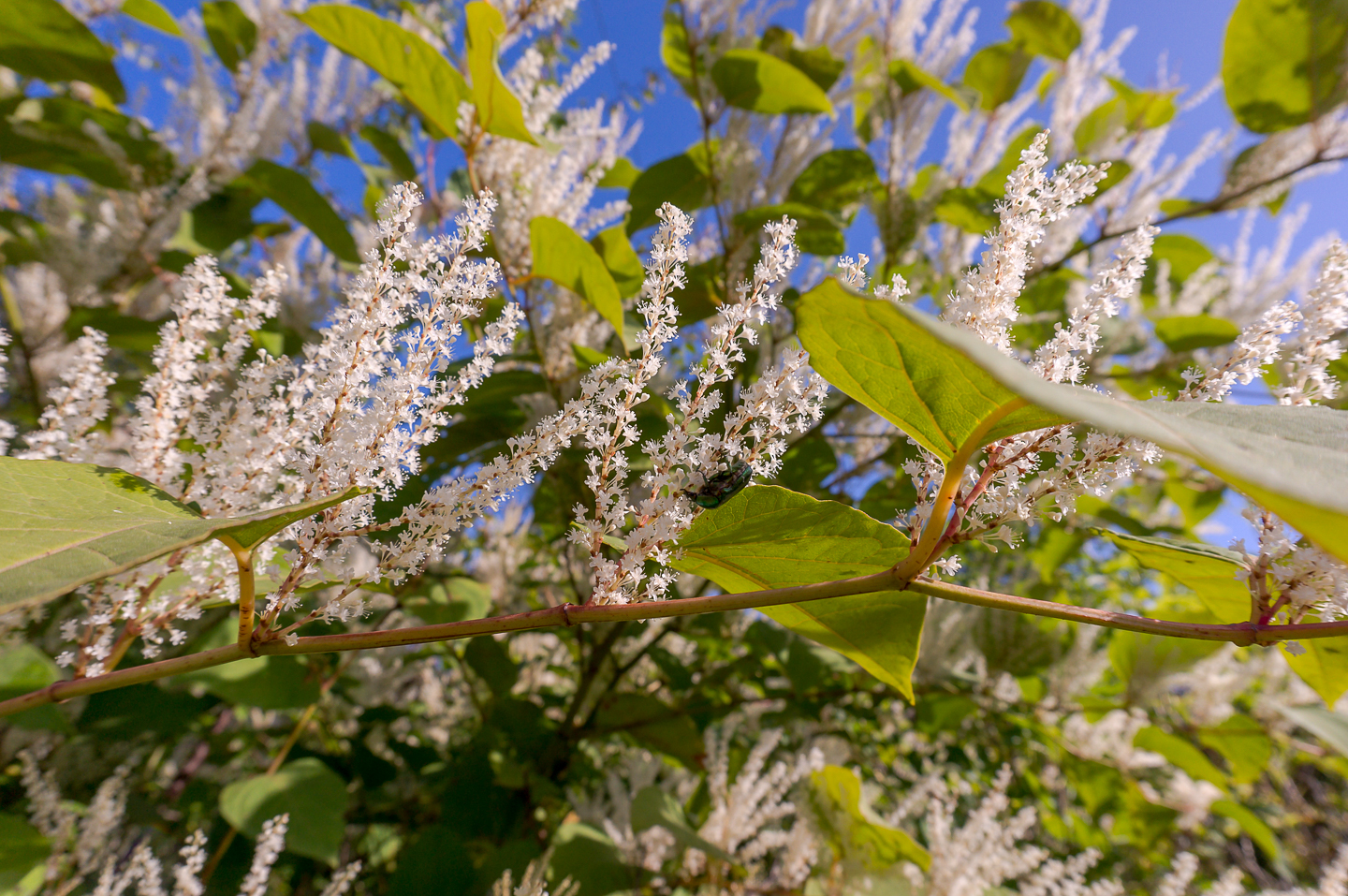
Zones: 5 to 9
Light: Shade to sun
Bloom Time: Late spring, early summer
Height: 3′ to 8′ (depending on the variety)
Spread: 3′ to 8′
Virginia Sweetspire is a native shrub with long fragrant white flowers (that pollinators love!) and gorgeous autumn foliage in the fall.
It is easy to grow in pretty much any garden conditions – dry, wet, poor soil, shade or sun.
Look for the dwarf variety ‘Little Henry’ if you want one that doesn’t take up a lot of space in your garden.
10 | Viburnum
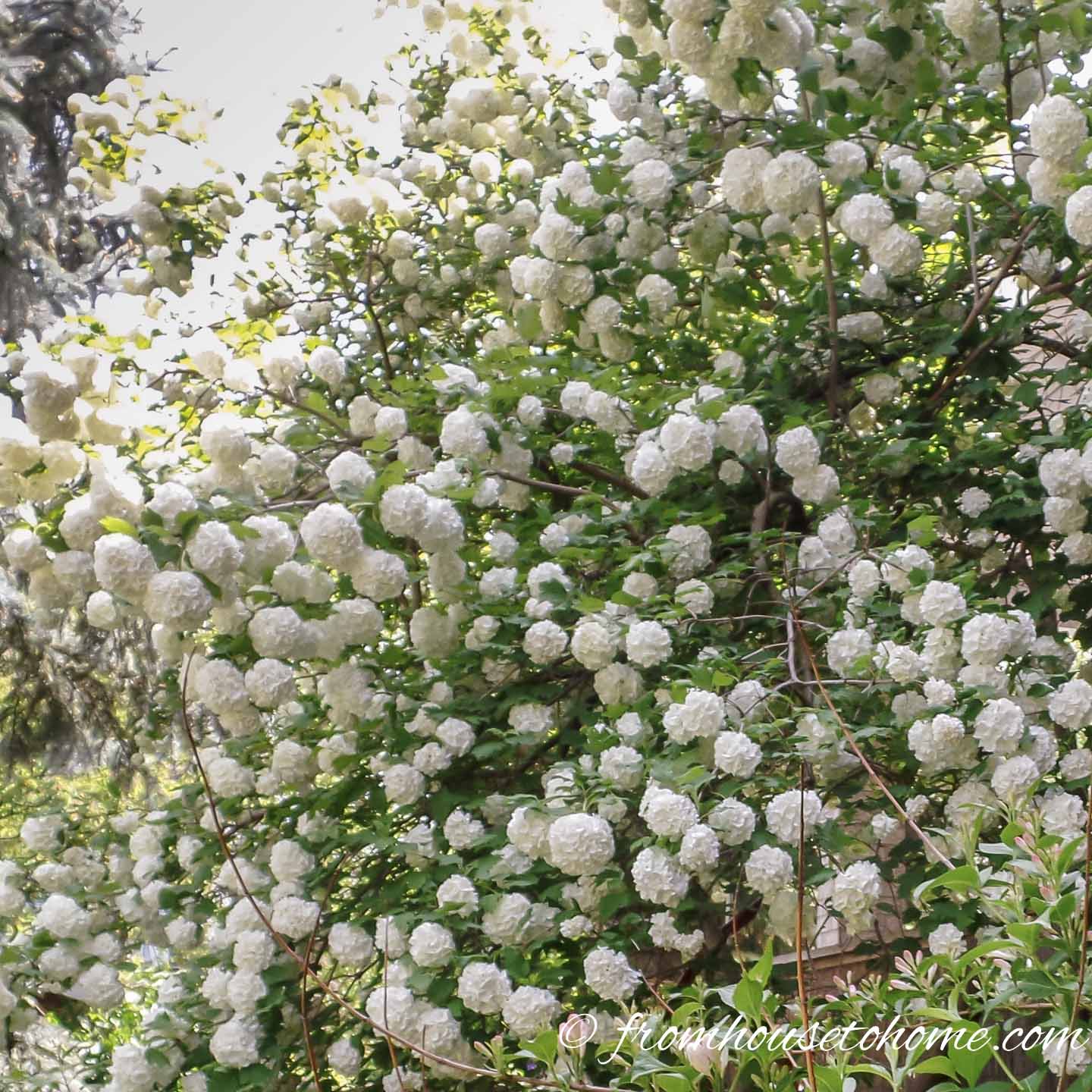
Zones: 2 to 9
Light: Partial shade
Bloom Time: Spring
Height: 1′ to 20′
Spread: 6′ to 10′
Viburnum is a very versatile deciduous shrub that always seems to work itself in to my garden plans.
With its huge white blooms that look like snowballs hanging off the branches, it definitely makes a statement!
For planting under trees, look for smaller varieties (such as Korean Spice) that won’t outgrow the space.
11 | Spotted Laurel (Aucuba japonica)

Zones: 7 to 9
Light: Shade
Bloom Time: Spring
Height: 6′ to 10′
Spread: 6′ to 10′
Spotted Laurel is a broad leaf evergreen bush that makes a great hedge or back-of-the-border shrub in deep shade.
It produces clusters of maroon flowers in the spring that turn into bright red berries if you have both a male and female version planted together.
But most people grow it because of its beautiful foliage.
Even without the flowers and berries, this shrub’s gorgeous green and yellow leaves add interest to your deep shade garden.
12 | American Witch Hazel (Hamamelis virginiana)
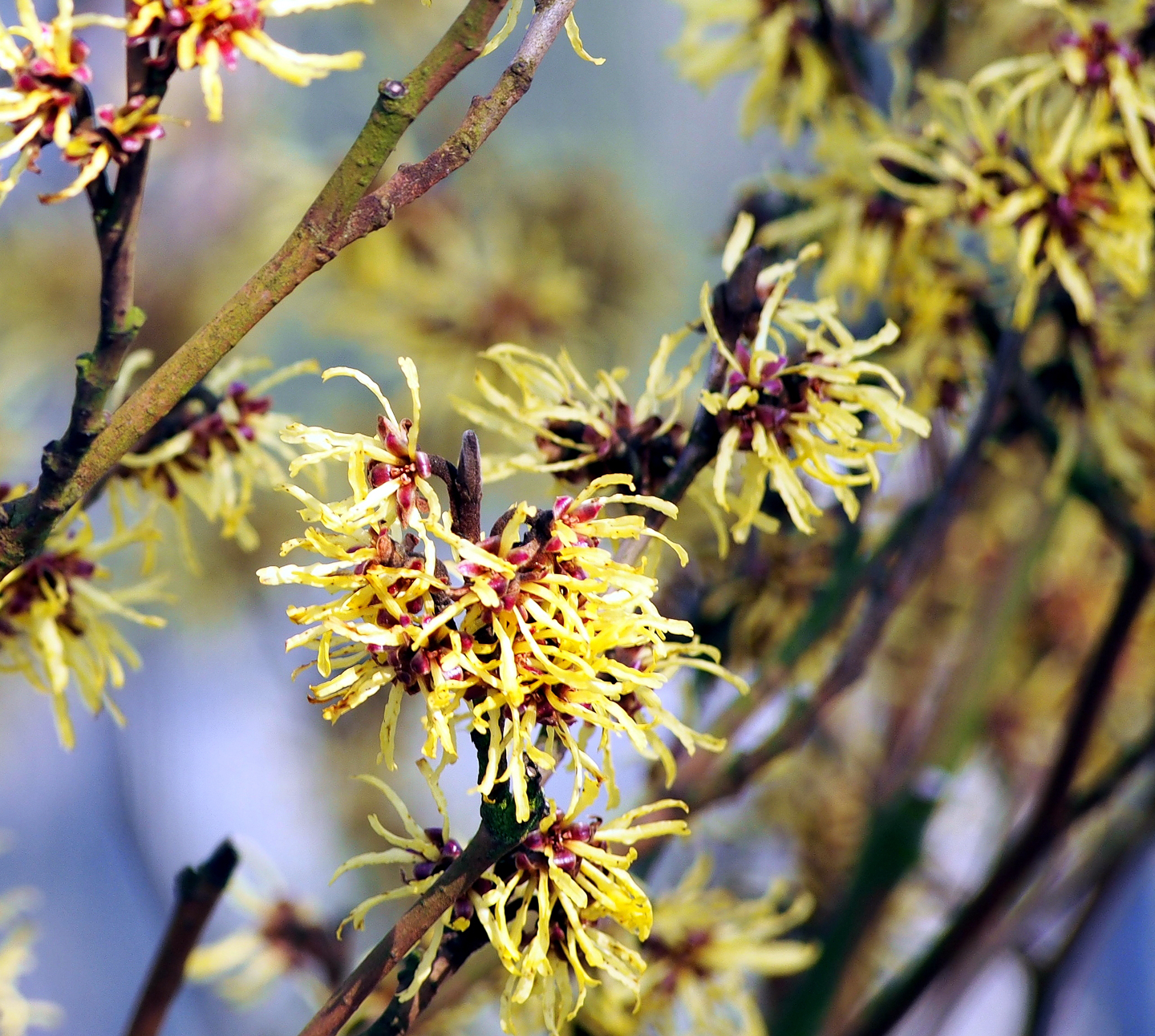
Zones: 4 to 8
Light: Partial shade
Bloom Time: Late fall to early winter
Height: 10′ to 20′ tall
Spread: 15′ to 20′ wide
American Witch Hazel (Hamamelis virginiana) is a large deciduous shrub with clusters of citrus-scented yellow flowers that appear in the late fall and early winter.
As the name suggests, it is a native bush to North America. And like many native plants, it is low maintenance, fairly deer resistant and disease resistant once it is established.
Although Witch Hazel grows quite large naturally, it can be pruned to keep it smaller. This should be done before summer starts to prevent cutting off the buds.
13 | Red Twig Dogwood (Cornus Alba)

Zones: 3 to 8
Light: Partial shade to shade
Bloom Time: Spring
Height: 8′
Spread: 8′
The red twig dogwood (Cornus Alba) is a shade loving shrub with very attractive variegated gray-green deciduous leaves that provide a bright light in the shaded border.
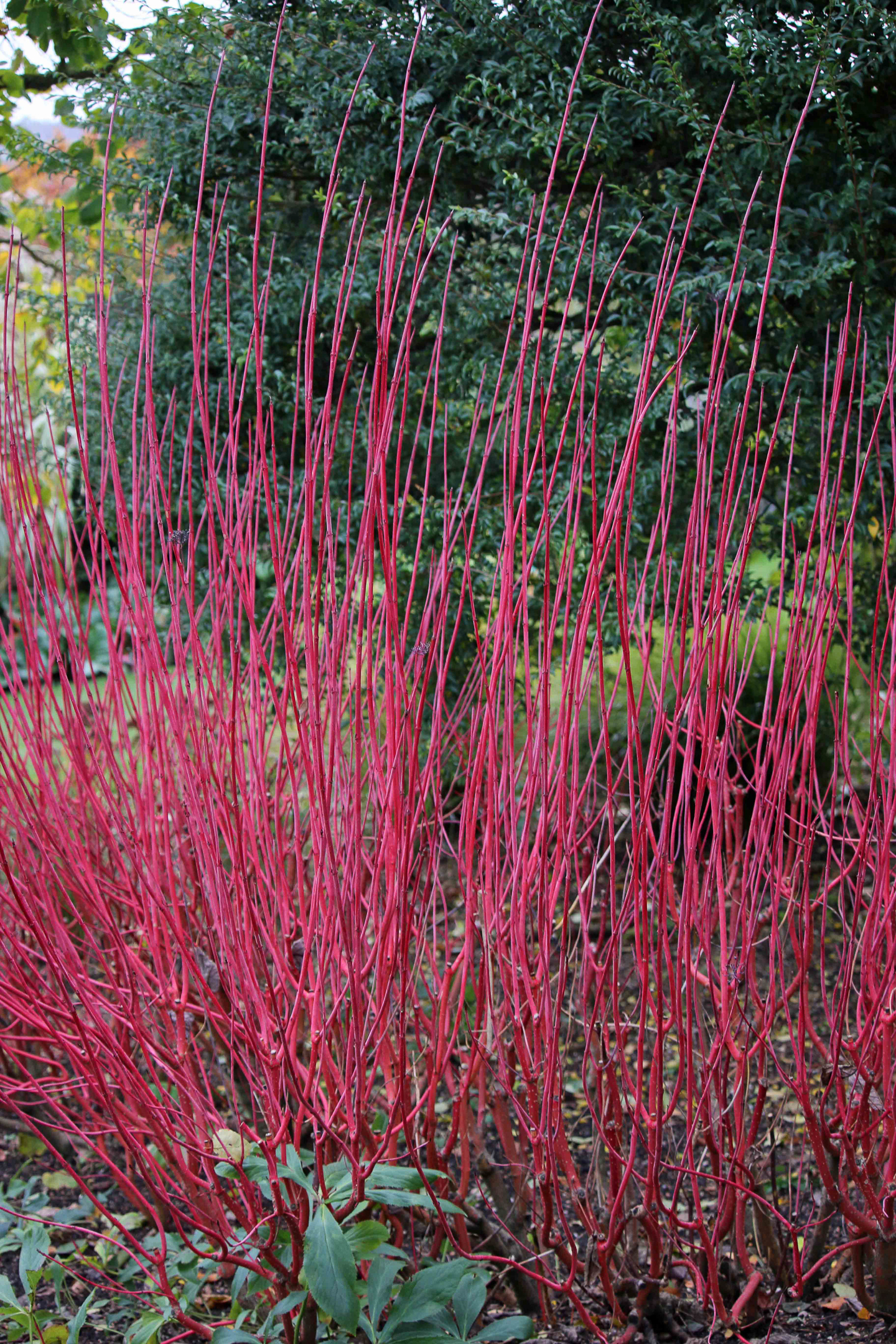
It has insignificant small white flowers in the spring, followed by white berries, but the compelling reason to plant this shrub is for the winter interest of its red stems.
It can be most appreciated if planted in front of a window where the splash of red in the snow only needs a cardinal to complete a perfect vignette.
The red twig dogwood can be kept small and brighter by pruning out 1/3 of the old stems in the winter, otherwise, it will reach 8’ tall.
Foliage Bushes
While flowering bushes are beautiful, to have a lush, relaxing shade garden, shrubs that are known for their foliage are also a must.
With the different leaf textures and colors, they add interest to your yard for the whole growing season.
14 | Japanese Maples (Acer palmatum)
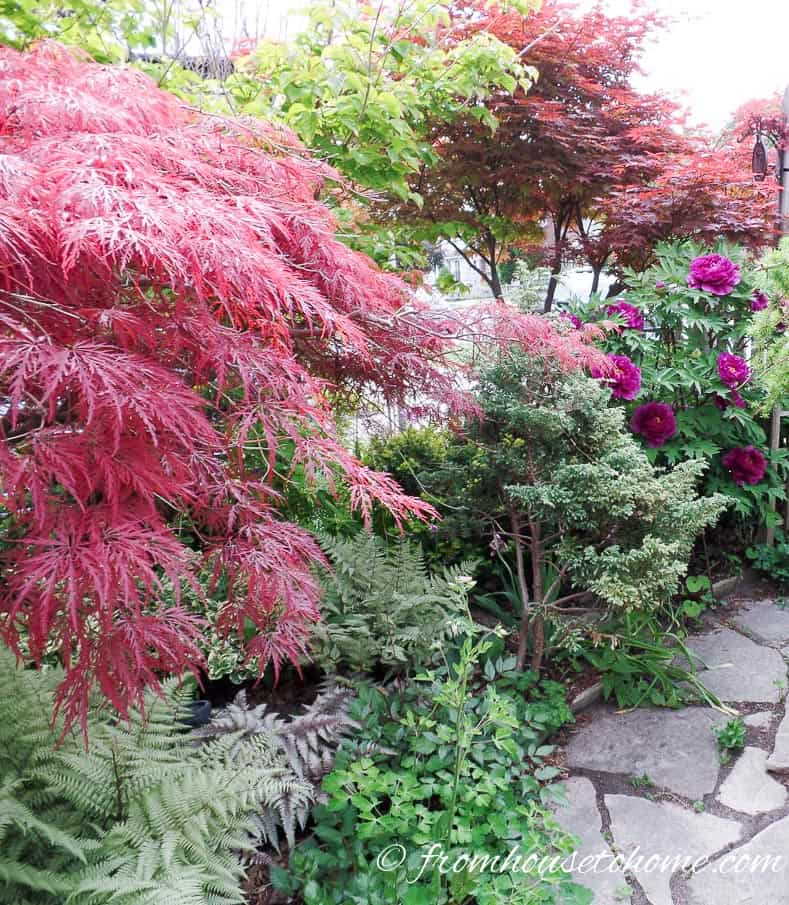
Zones: 5 to 9
Light: Partial shade
Bloom Time: Foliage only
Height: 6′ to 25′ (depending on the variety)
Spread: 6′ to 25′
Japanese Maples (Acer palmatum) are dwarf trees that create outstanding focal points in the shady border under trees.
My front border is anchored by two other Acers, one at each corner of a curved path.
Although they are different varieties of Japanese maple, the foliage provides focal interest and intense color.
They like dappled shade and do not like to dry out, so provide a deep layer of mulch.
Prune, if necessary, in summer after the leaves are established.
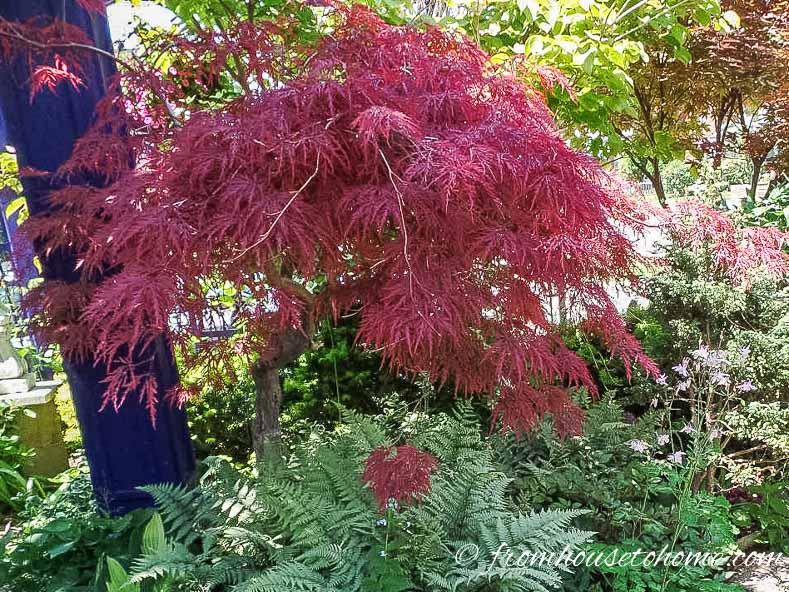
I love the way my cut leaf ‘Crimson Queen’ forms a canopy of scarlet lacy foliage from spring until fall. Even in the winter, the branches arch dramatically.
Find out more about growing Japanese Maples.
15 | Yews (Taxus)
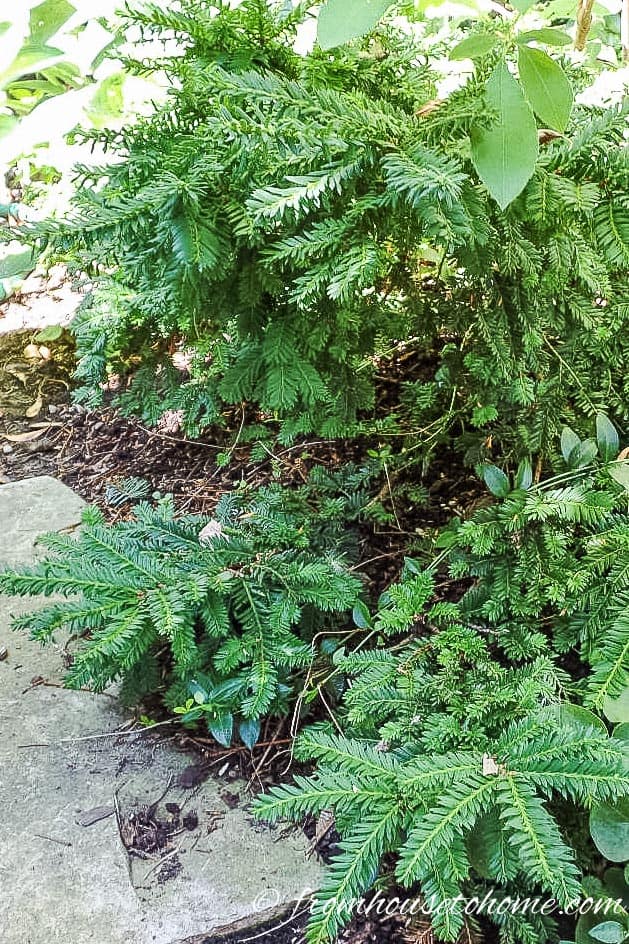
Zones: 4 to 9
Light: Partial shade
Bloom Time: Foliage only
Height: 1′ to 25′ (depending on the variety)
Spread: 3′ to 25′
Yews (Taxus) are very reliable drought tolerant evergreens for shade that have inch long needles and red berries in the fall.
Unlike conifers, they don’t mind being pruned, so their size and shape can be easily maintained.
But if you don’t want to do diligent pruning, avoid ‘Hills’,’ Hicks’, and ‘Browns’ yews because they grow too large for a border.
Yews provide all season interest and stand out in the winter garden as a green respite among the deciduous branches.
It should be noted that the berries and needles are poisonous to humans and animals.
Yews generally do not like wet conditions.
Taxus x media ‘Tauntonii’ is a dwarf yew that is perfect: it grows slowly, is very tidy and has a very dark green hue.
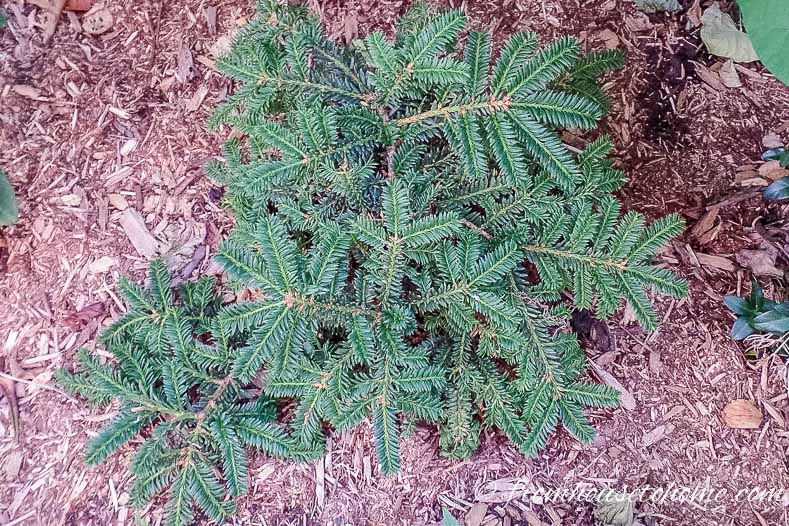
Taxus cuspidate ‘emerald spreader’ is another good bright green choice that gets denser if pruned annually.
Taxus Canadensis is a tough, small native shrub that will grow in dense shade.
16 | Boxwood (Buxus)
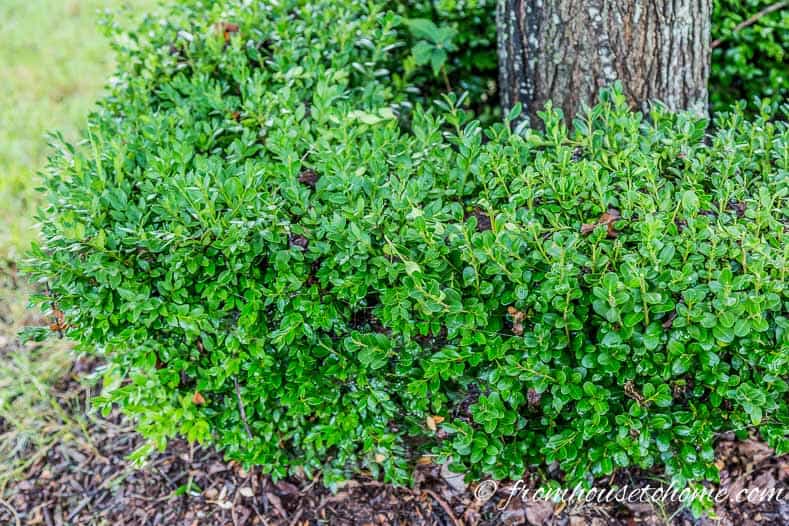
Zones: 4 to 10
Light: Full shade to full sun
Bloom Time: Foliage only
Height: 1′ to 12′ (depending on the variety)
Spread: 2′ to 8′
The next plant on our list of shade shrubs is Boxwood.
We most often associate Boxwood (Buxus) with clipped hedges and balls in formal gardens.
However, it is such an easy plant to grow I think it deserves a place in any kind of border, especially since it is evergreen and grows so well under trees.
Adequate water and 3” of mulch take care of its maintenance needs.
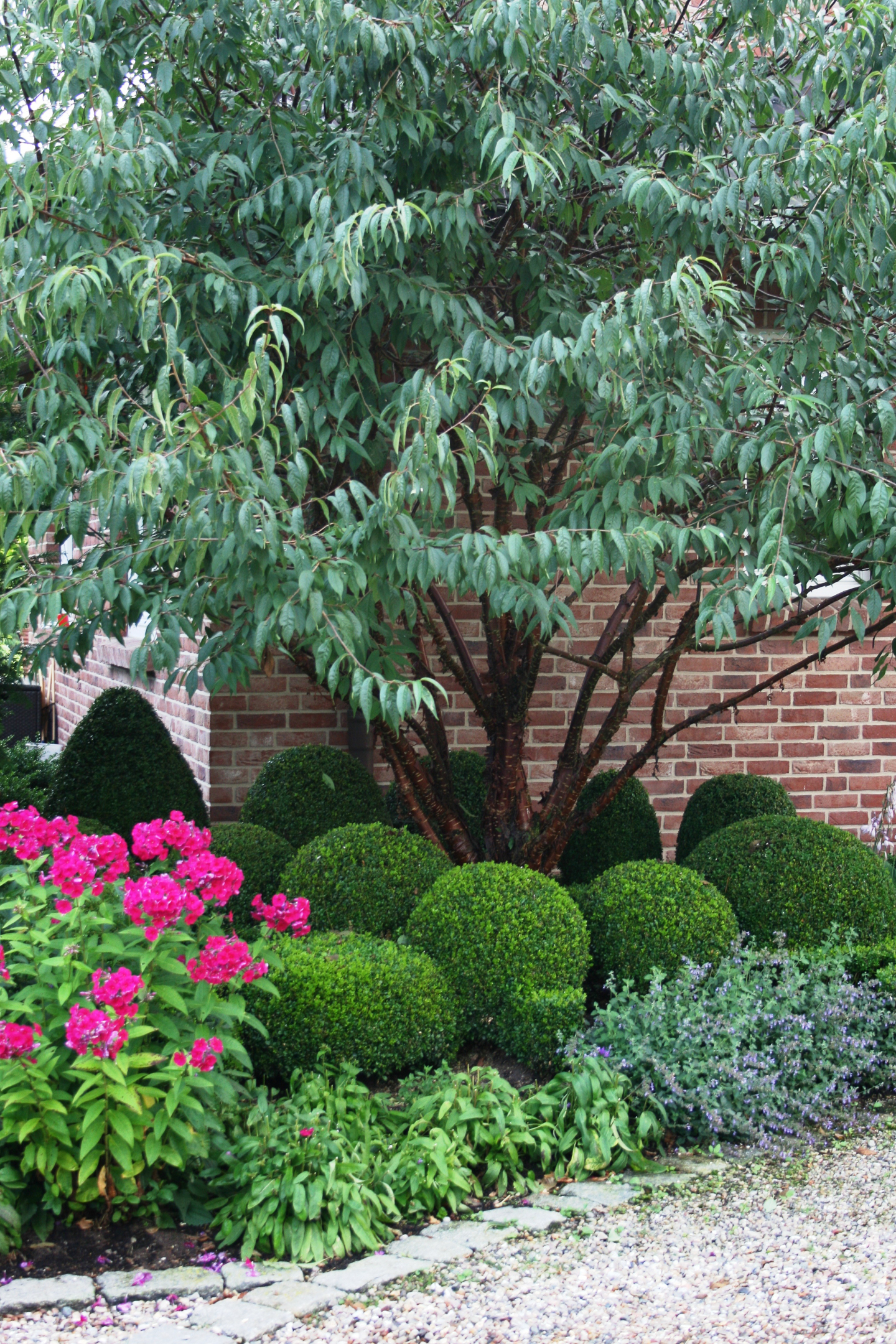
Aesthetically, Buxus looks much better pruned so that its small evergreen leaves become denser.
It grows slowly, so once the desired shape is established it only needs an annual shearing.
17 | Anise (Illicium parviflorum)
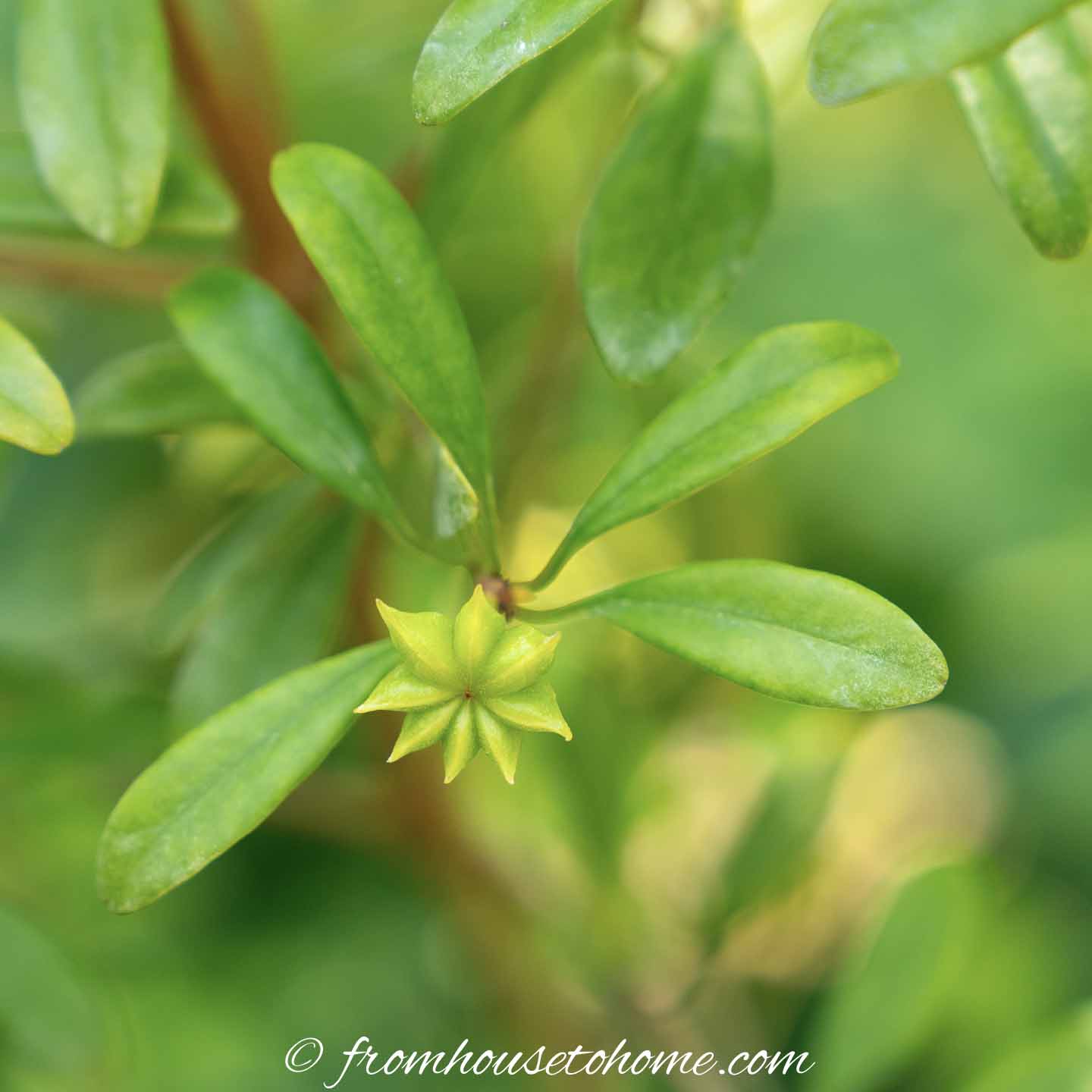
Zones: 7 to 10
Light: Shade to part shade
Bloom Time: Spring
Height: 5′ to 15′
Spread: 5′ to 10′
The last of our bushes that grow in shade is Anise.
With its heat resistance, yellow-green evergreen leaves and small star-shaped fruit, it’s a stand out in the Southern shade garden.
Anise is an easy to care for bush that likes moist soil but will tolerate some drought once established.
Other shade plants you might like
- The best evergreen shrubs for shade
- 10 tall flowering perennials that bloom in the shade
- 21 ground cover perennials for shade
- The best blue flowering annuals for shade
Do you have comments or questions on our list of shade loving shrubs? Tell us in the section below.
Pin It So You Don't Forget It!

This post was originally published on March 28, 2020 but was updated with new content on August 19, 2023.

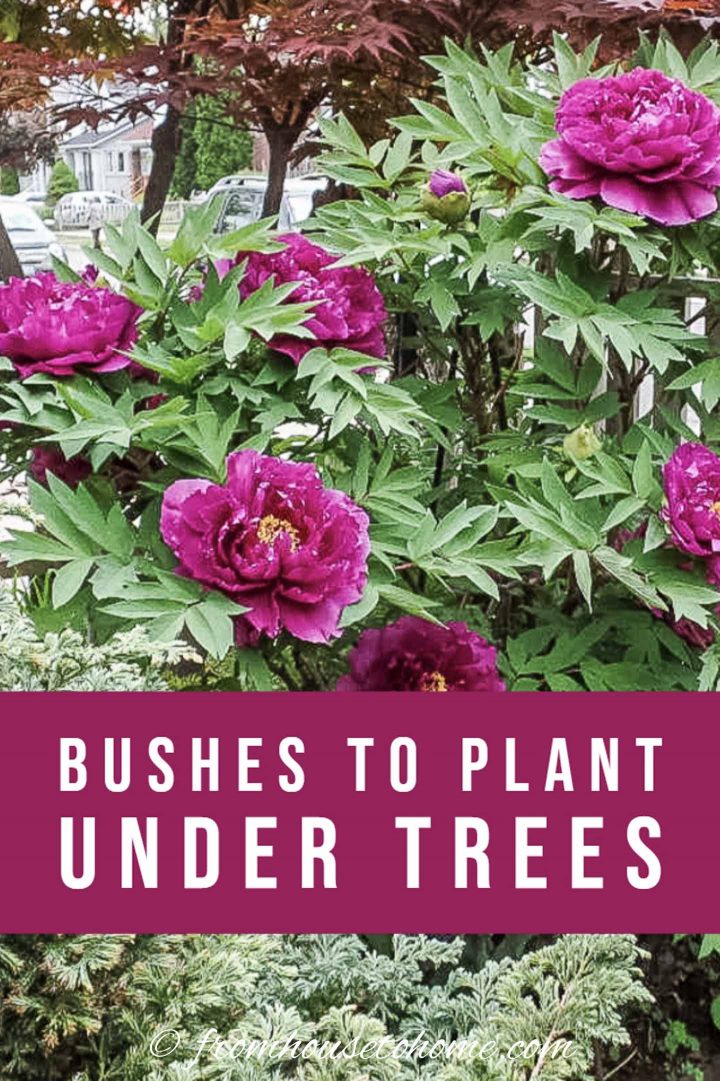
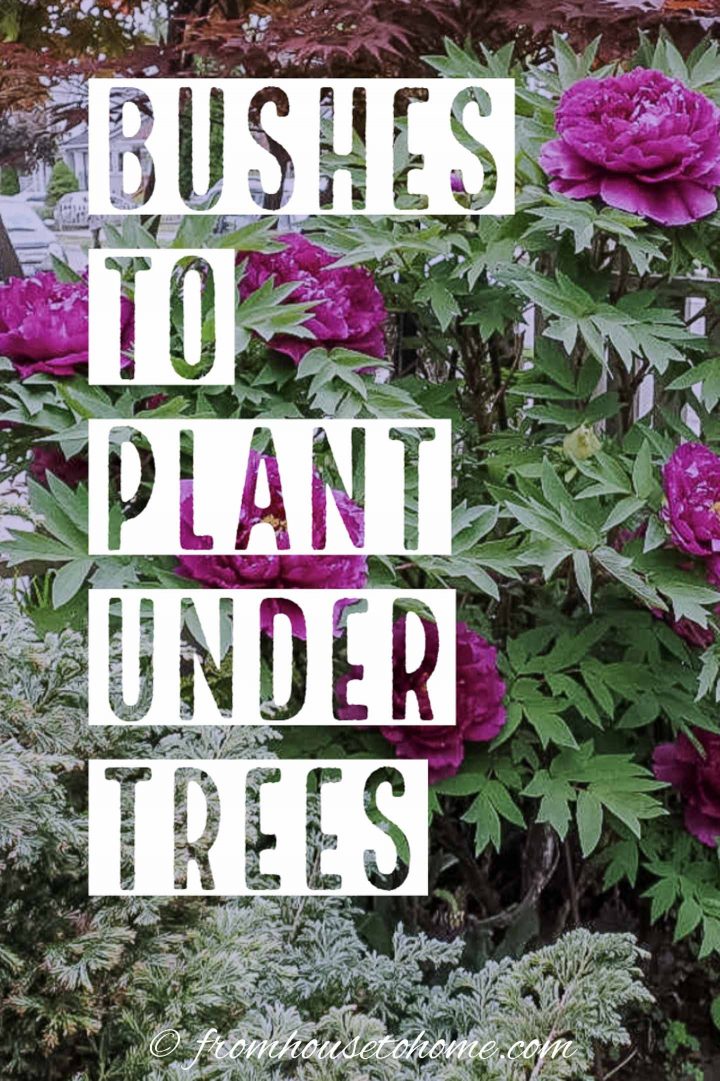
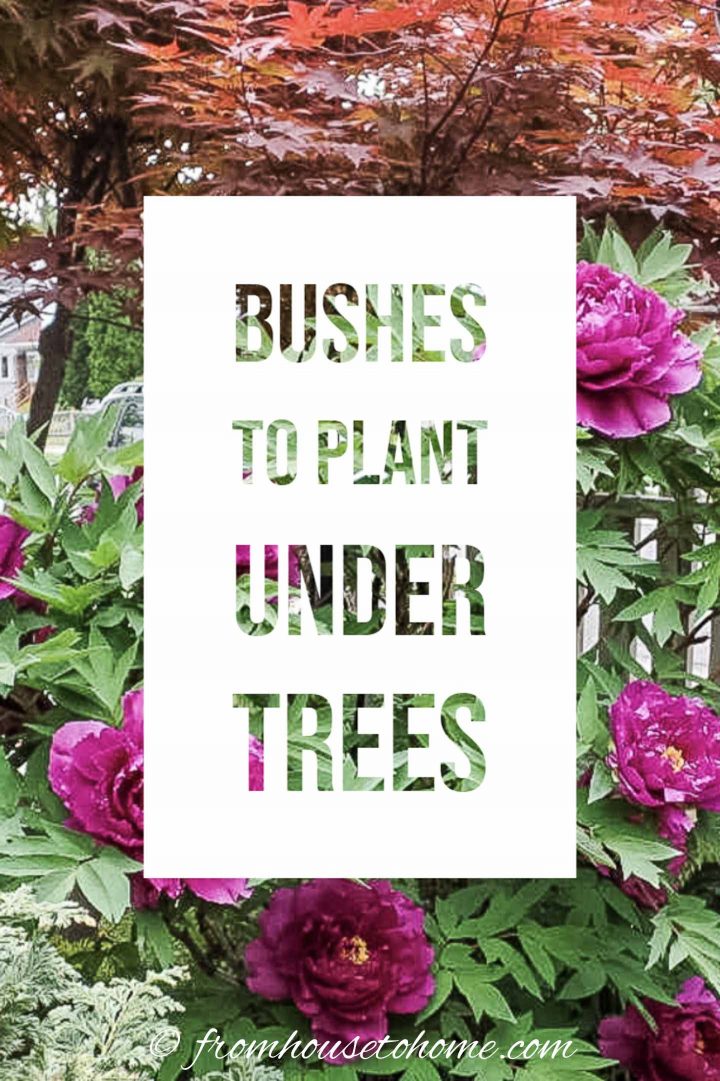

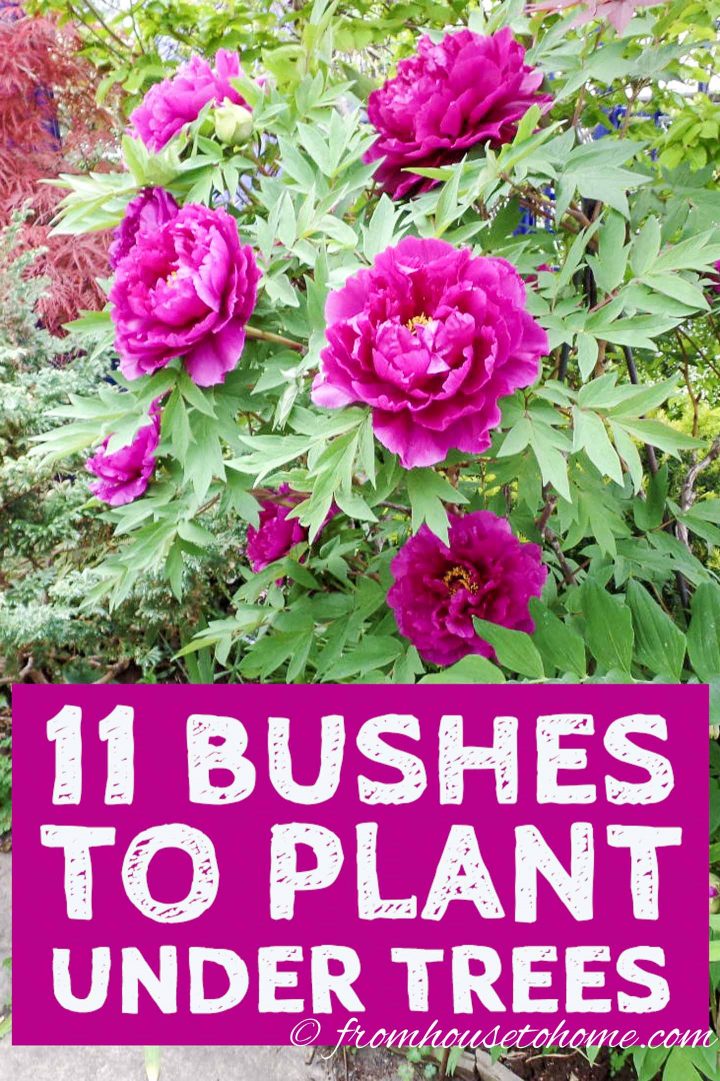
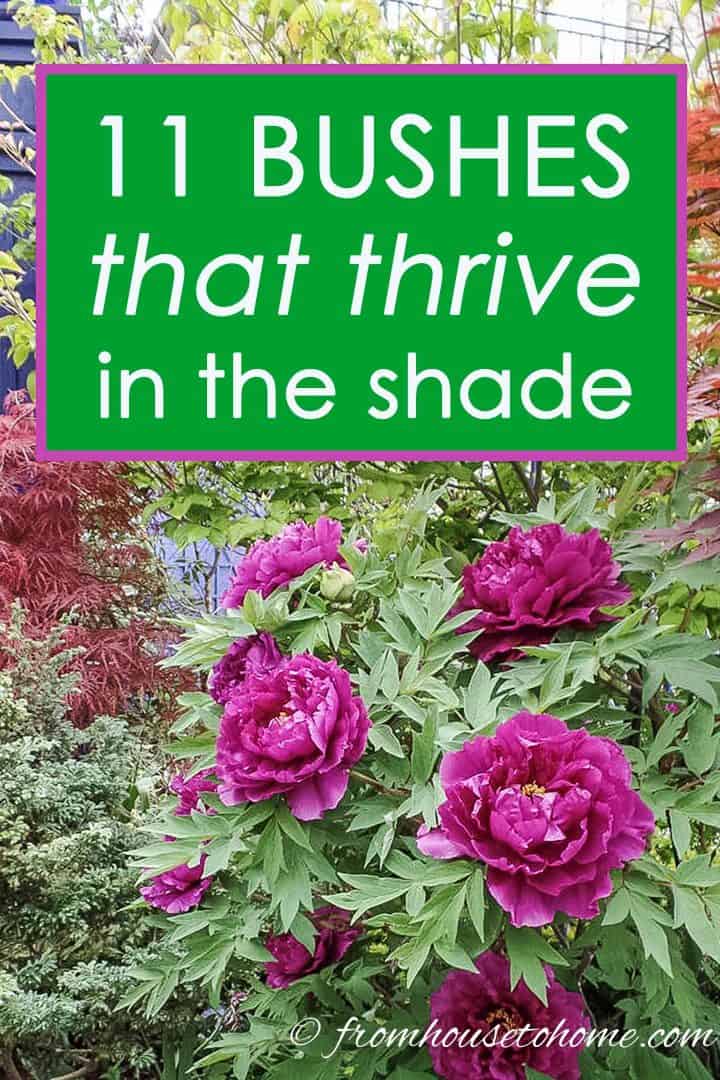
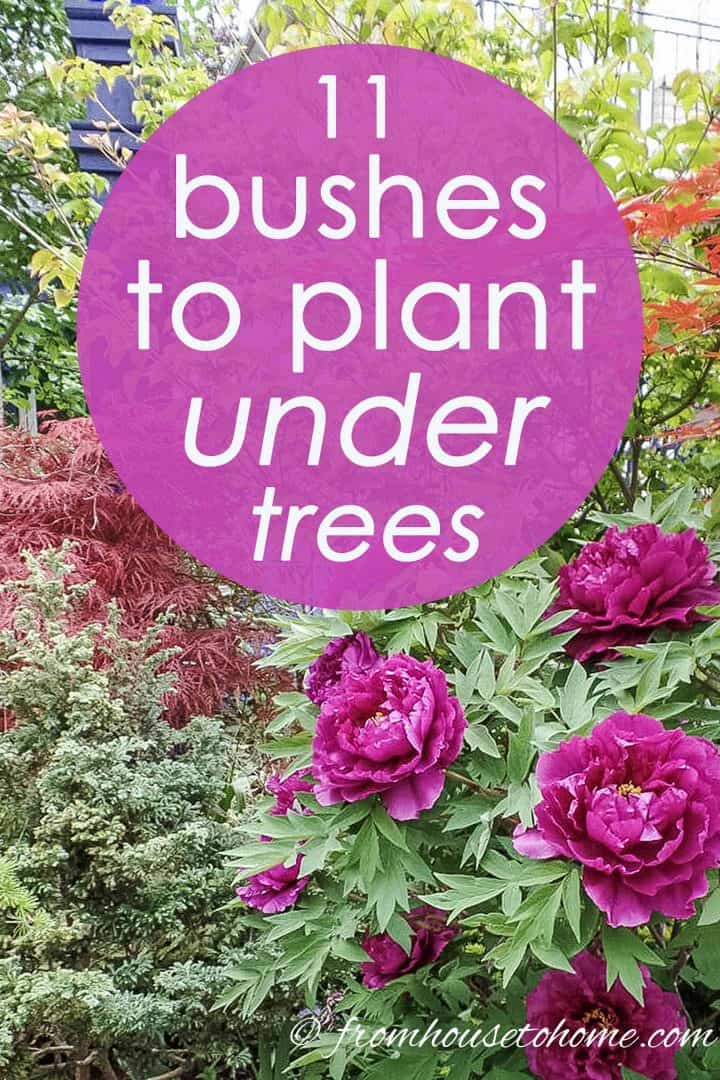


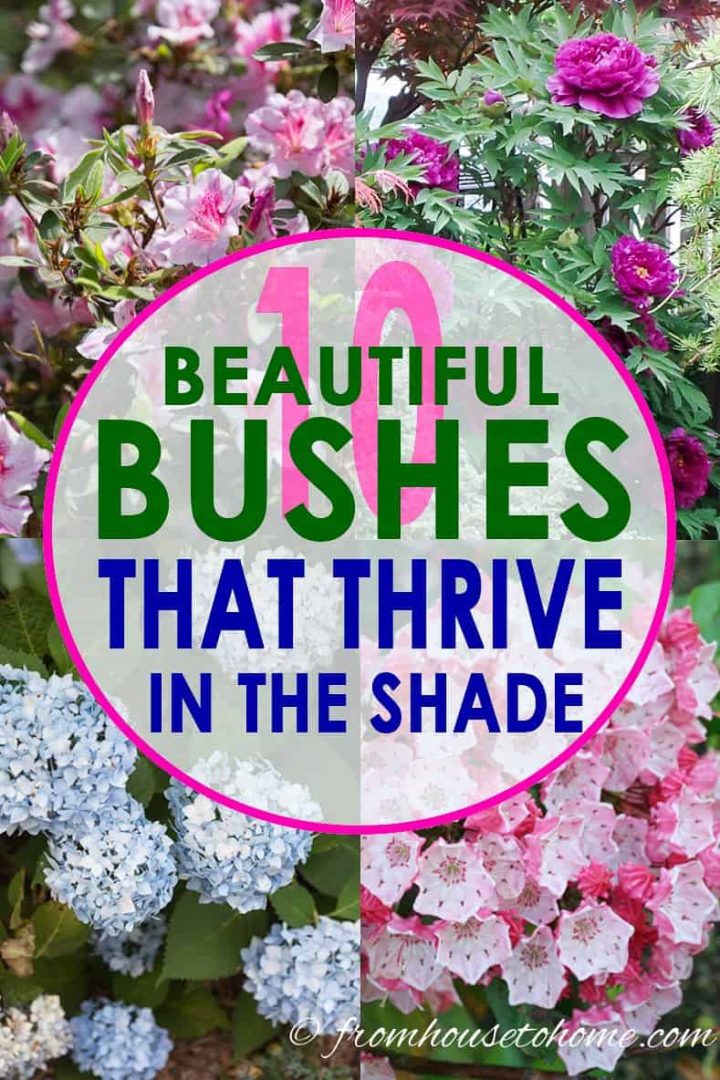
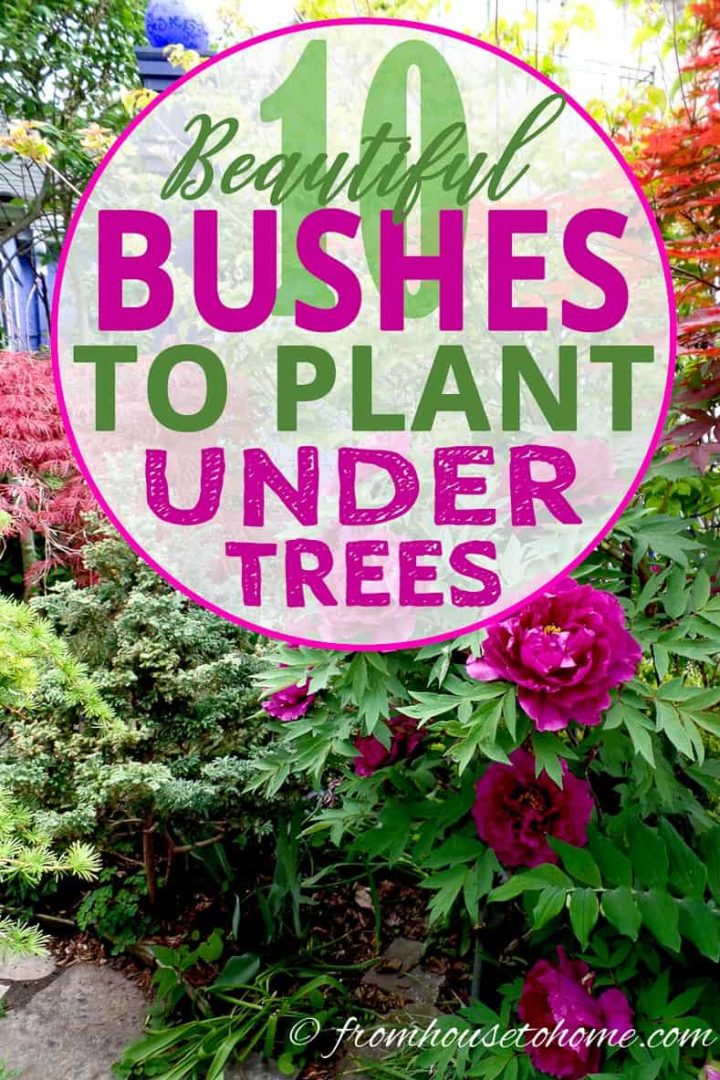
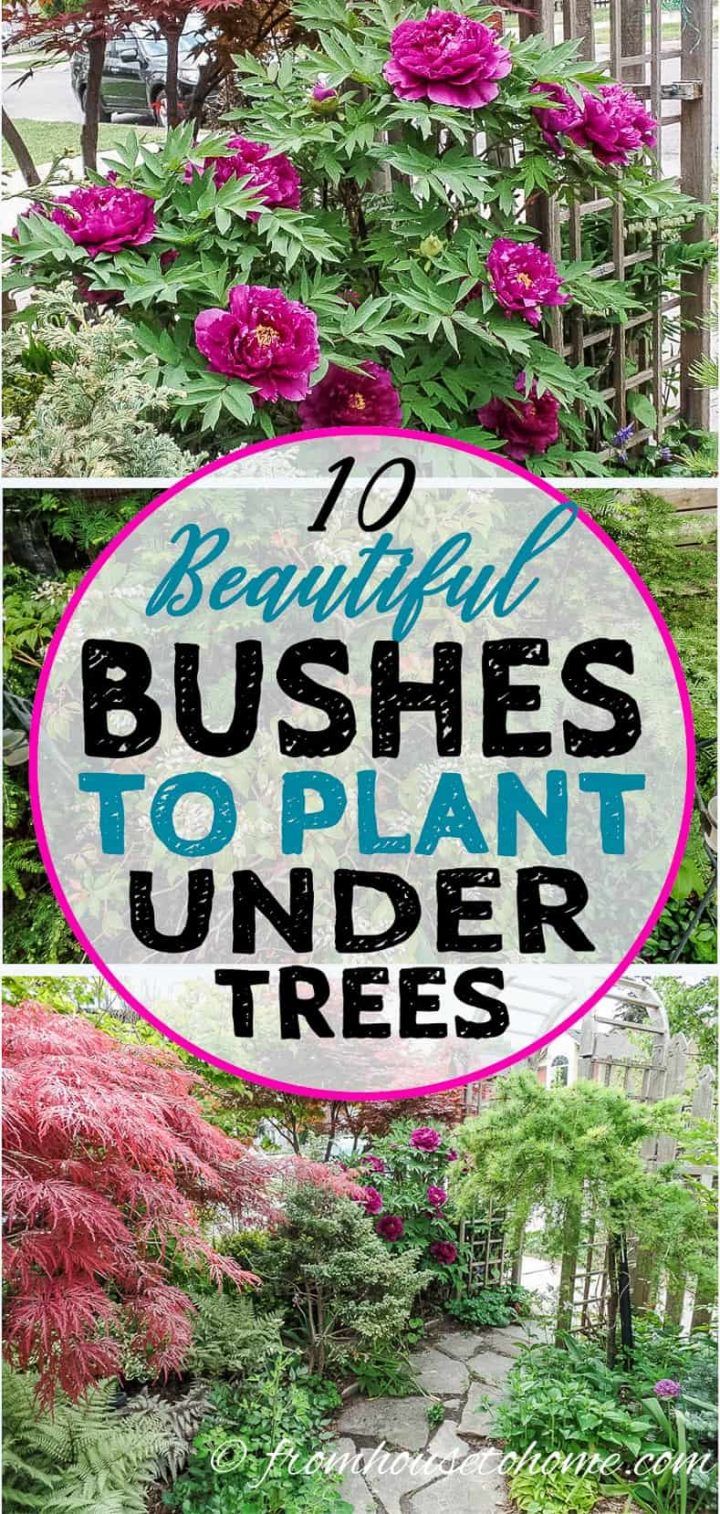
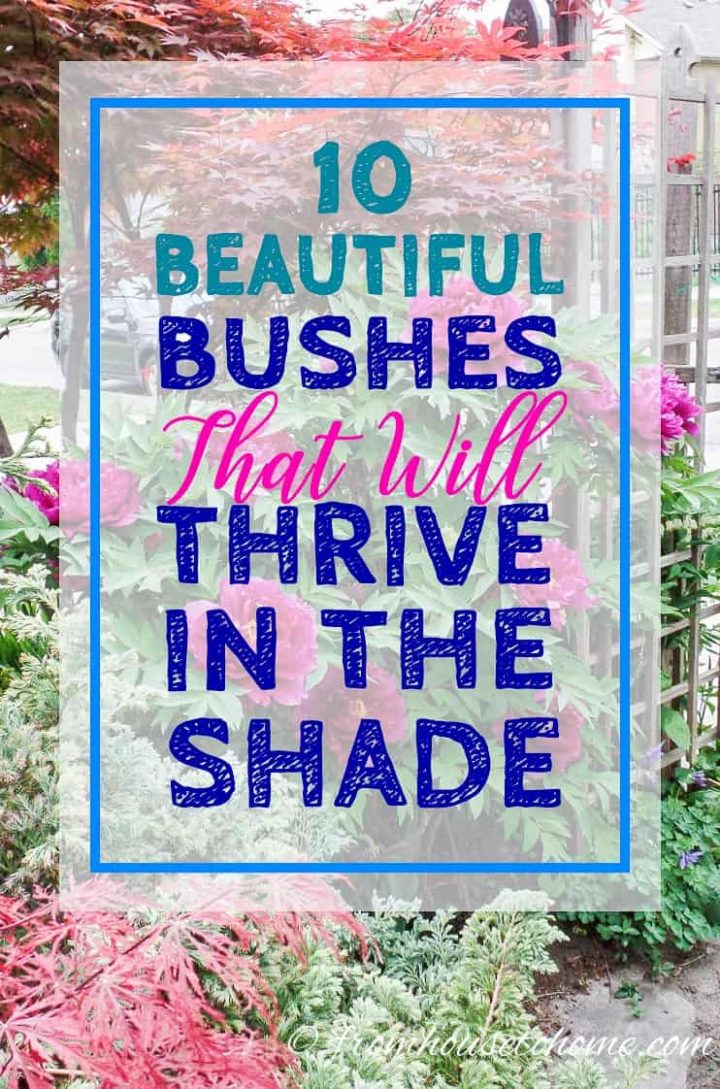
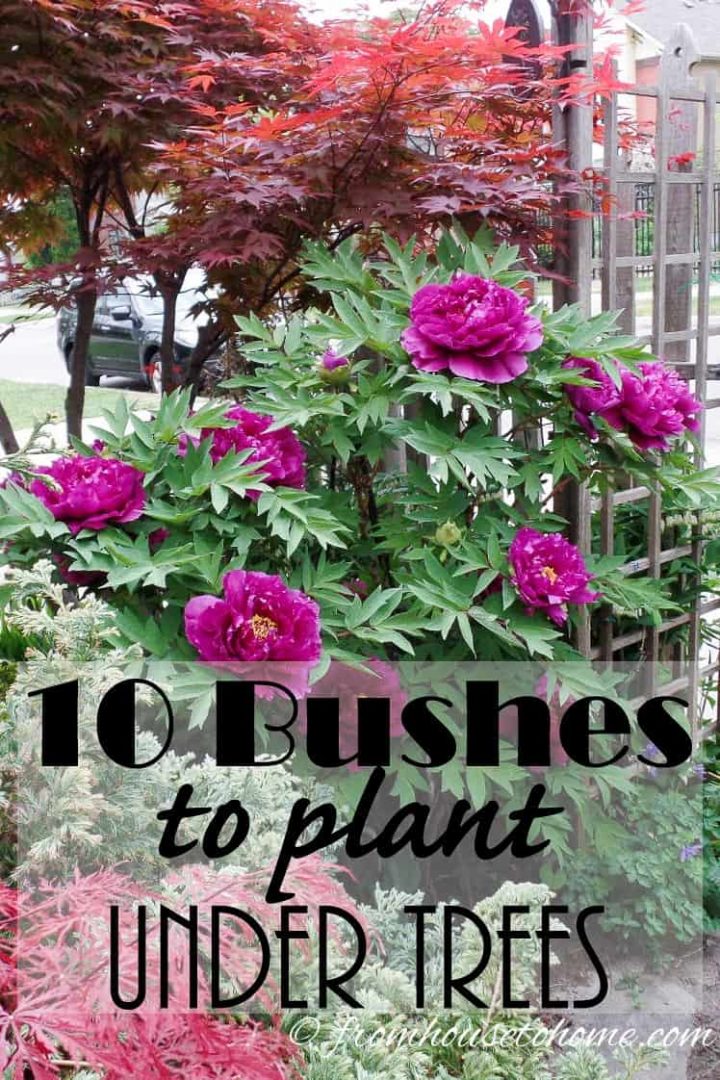
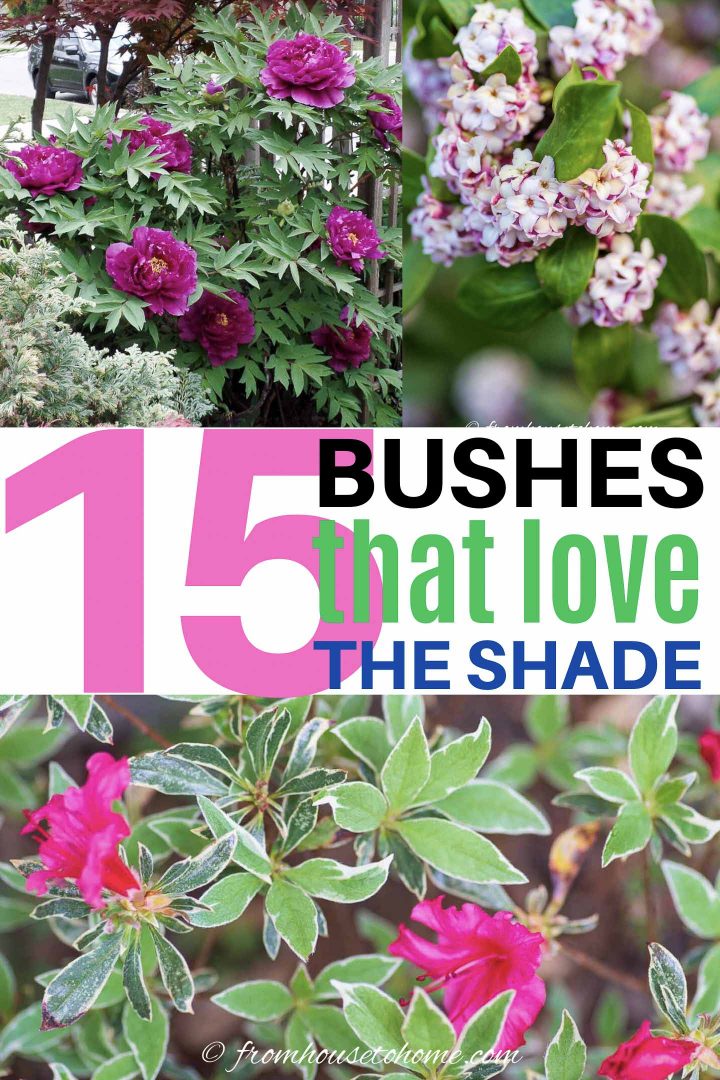
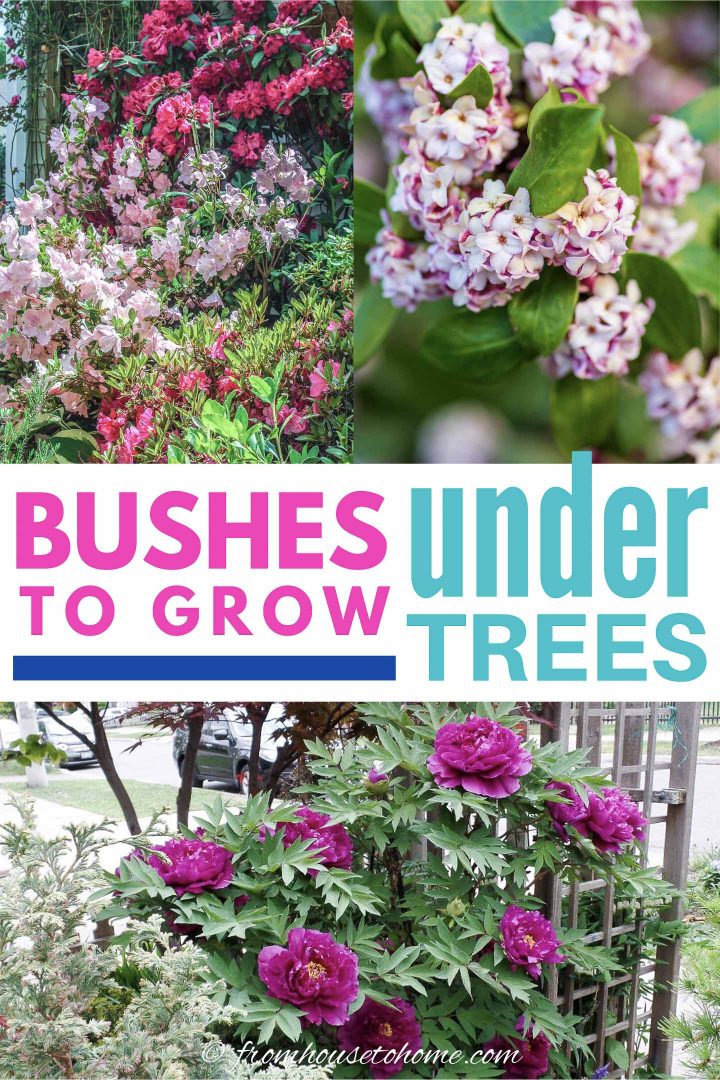
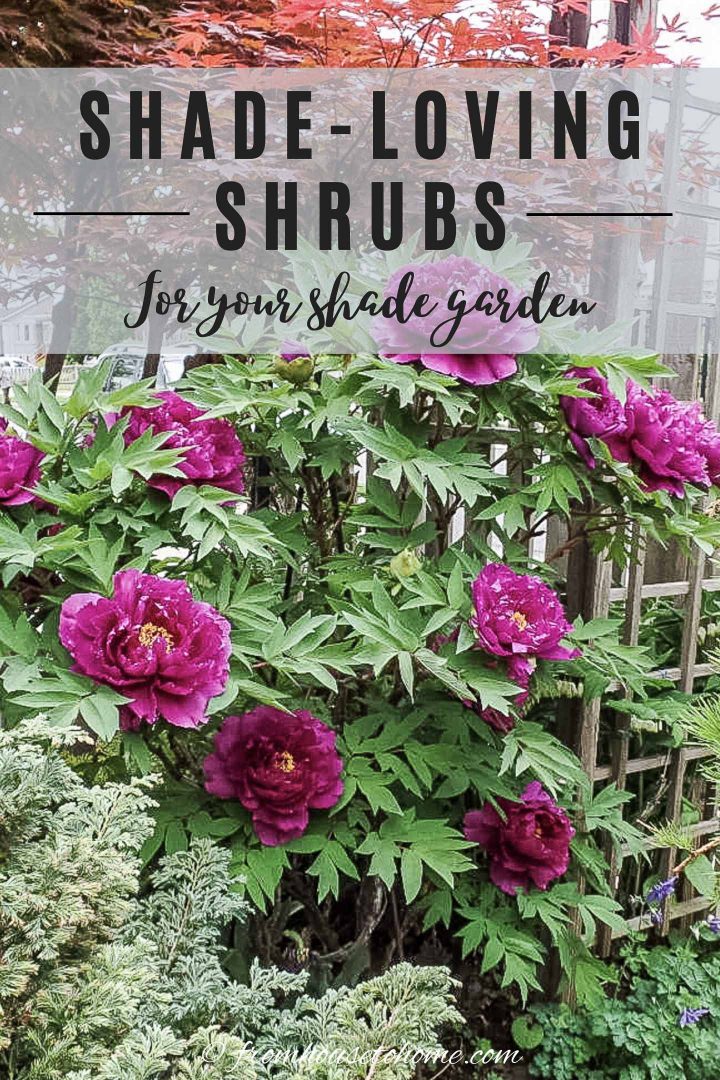
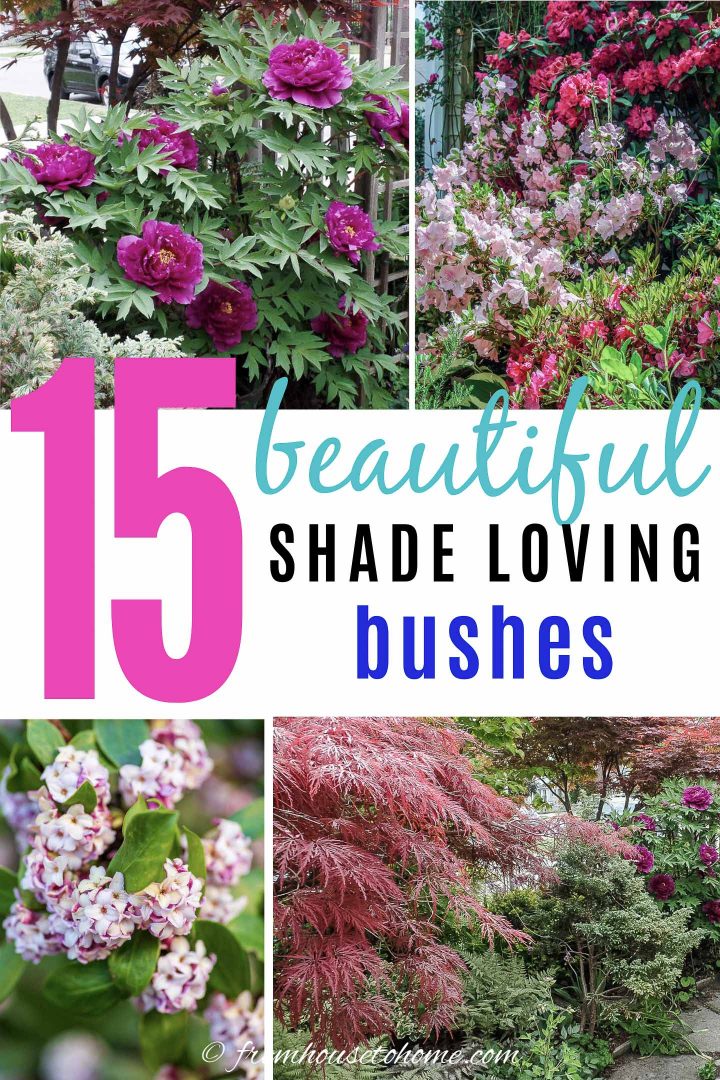
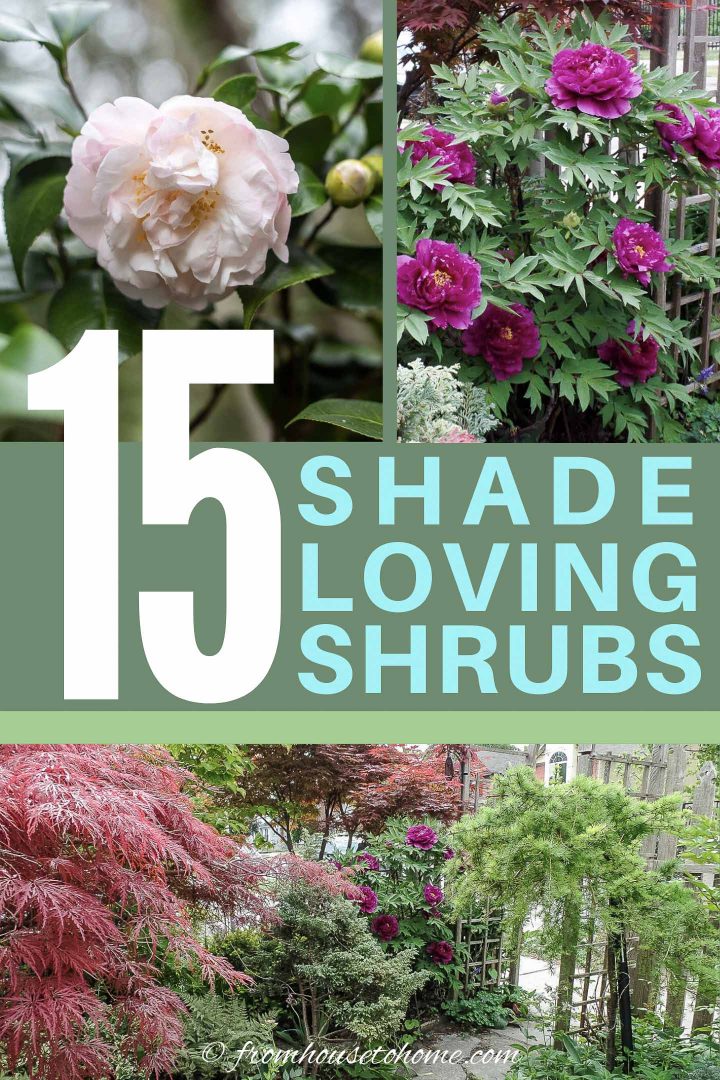
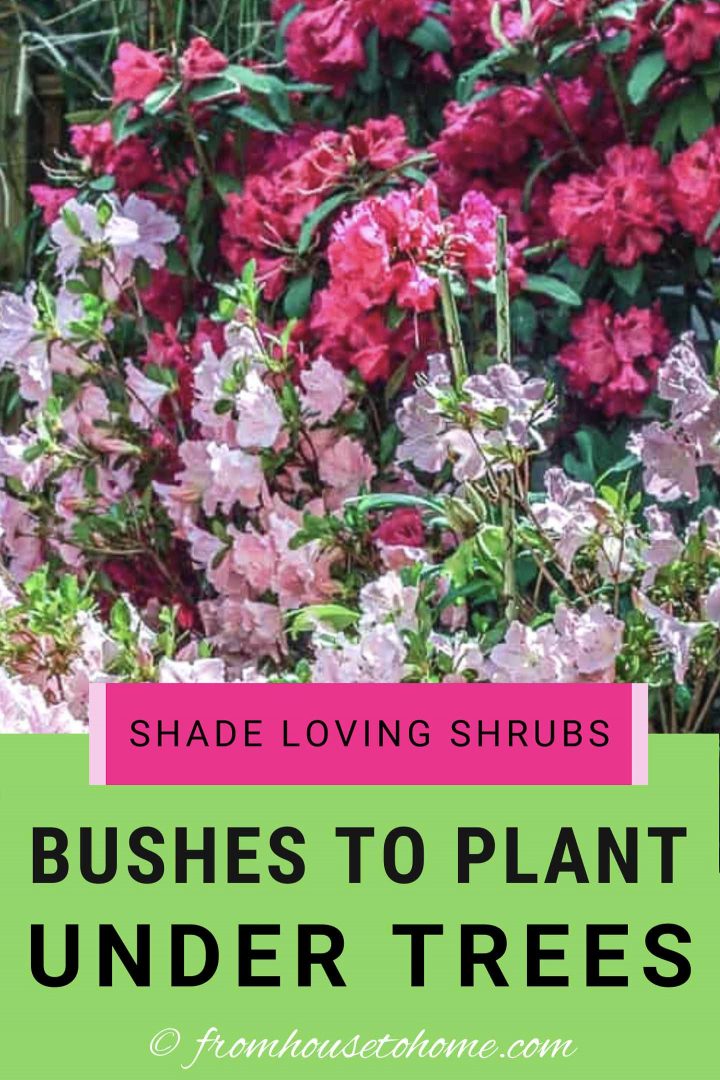
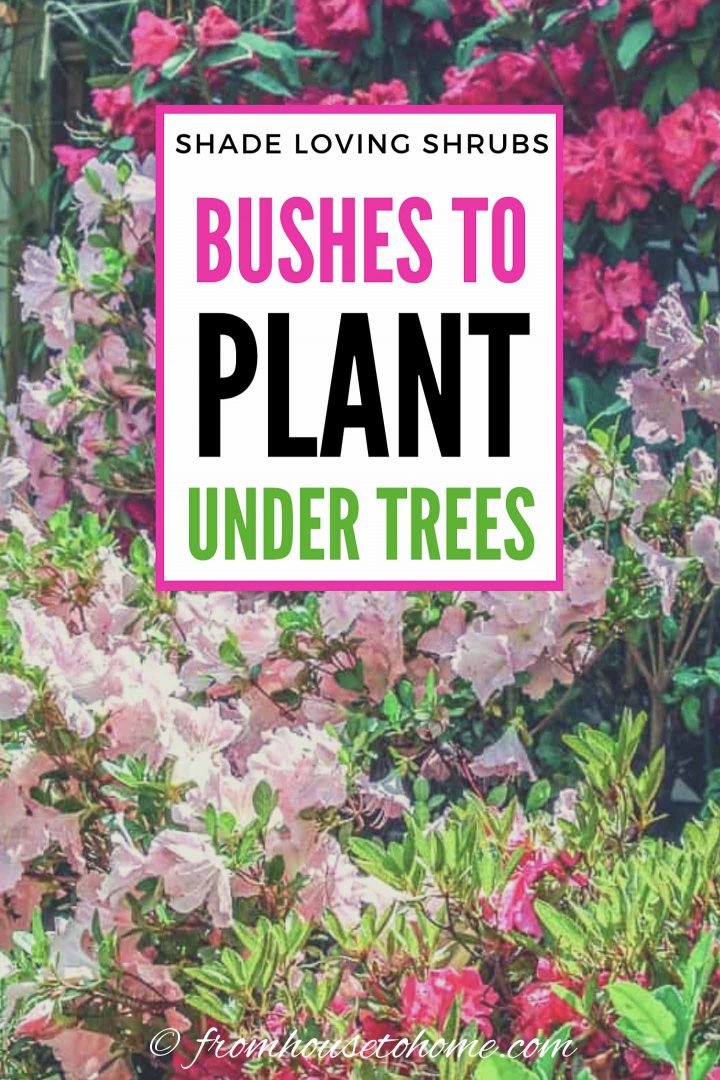
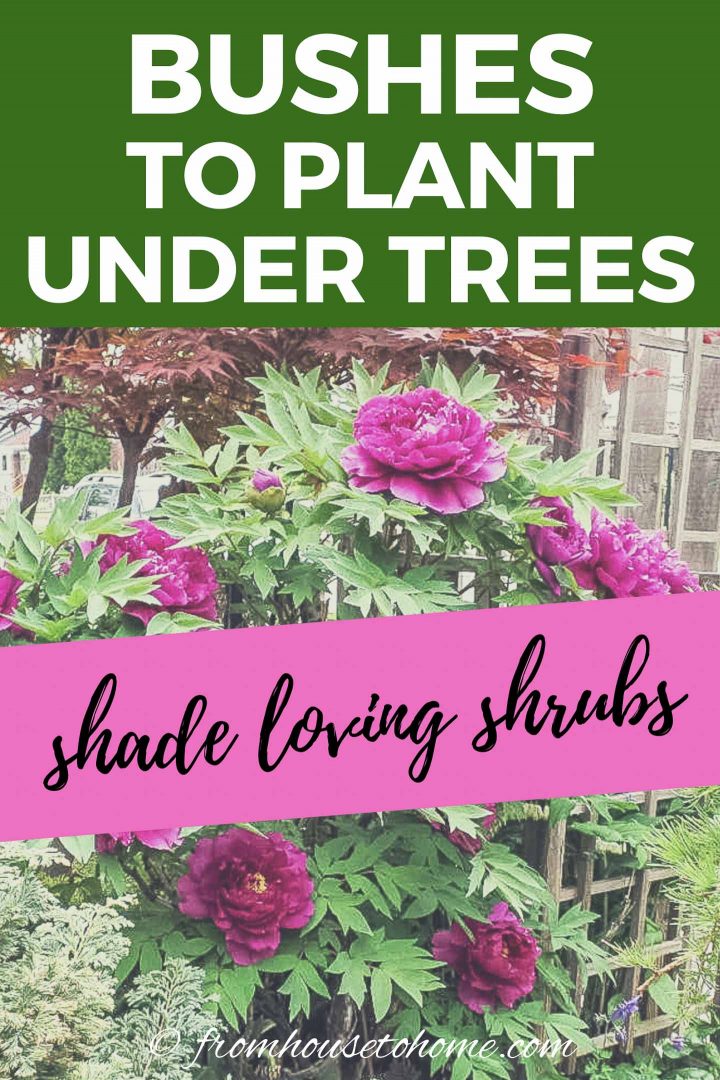
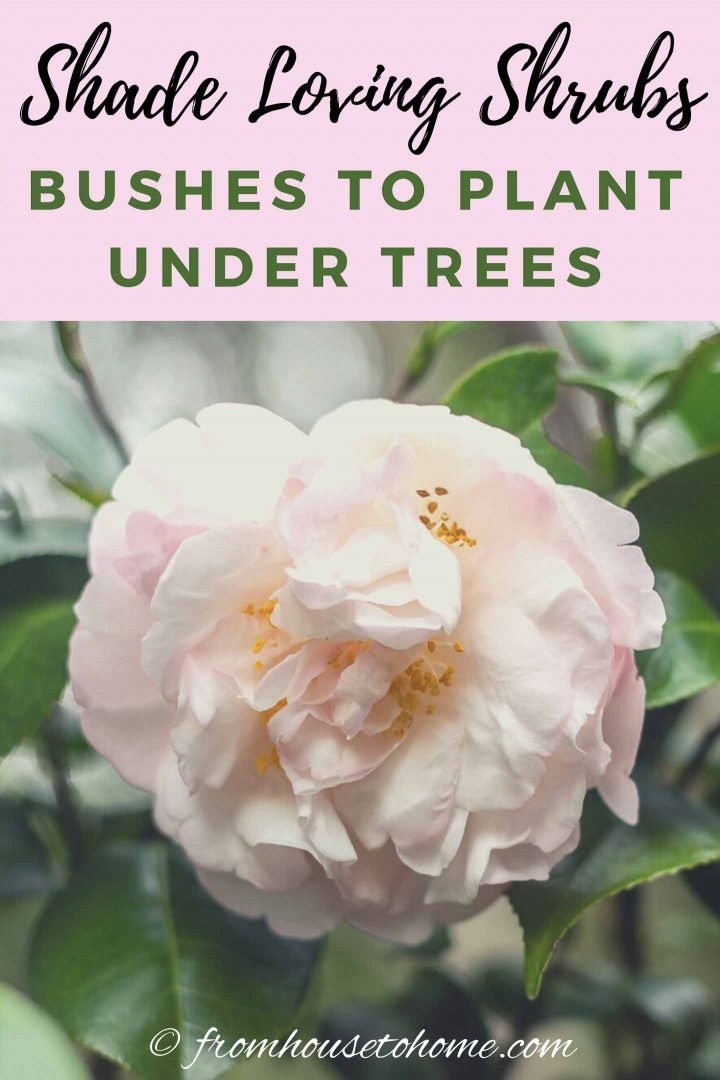
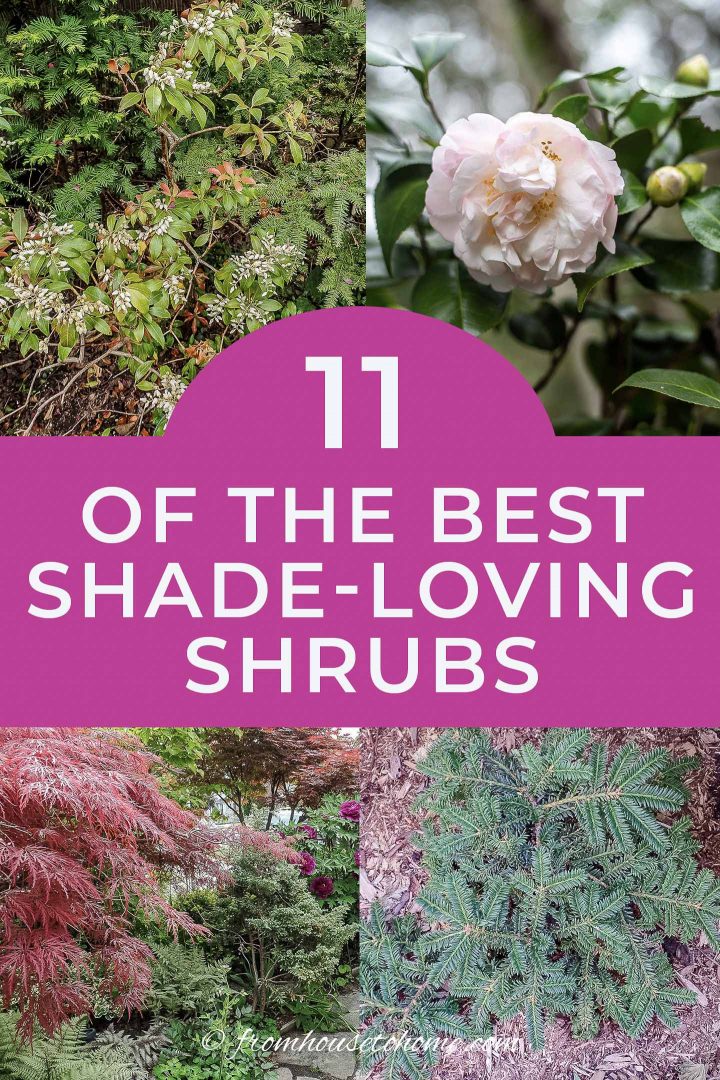
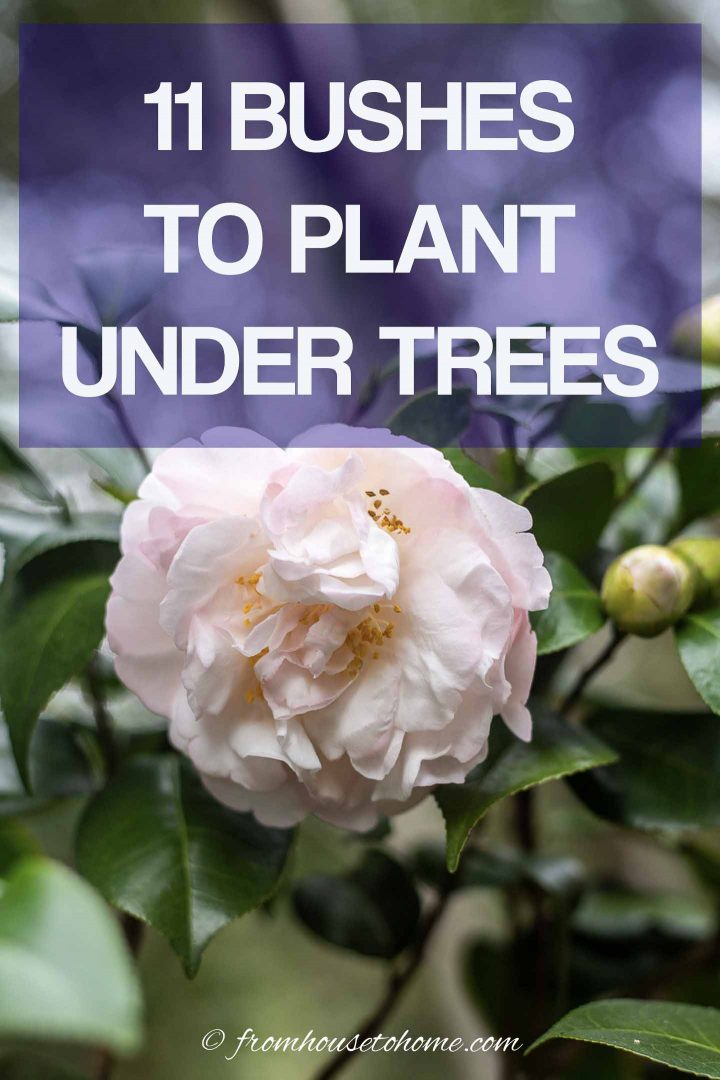
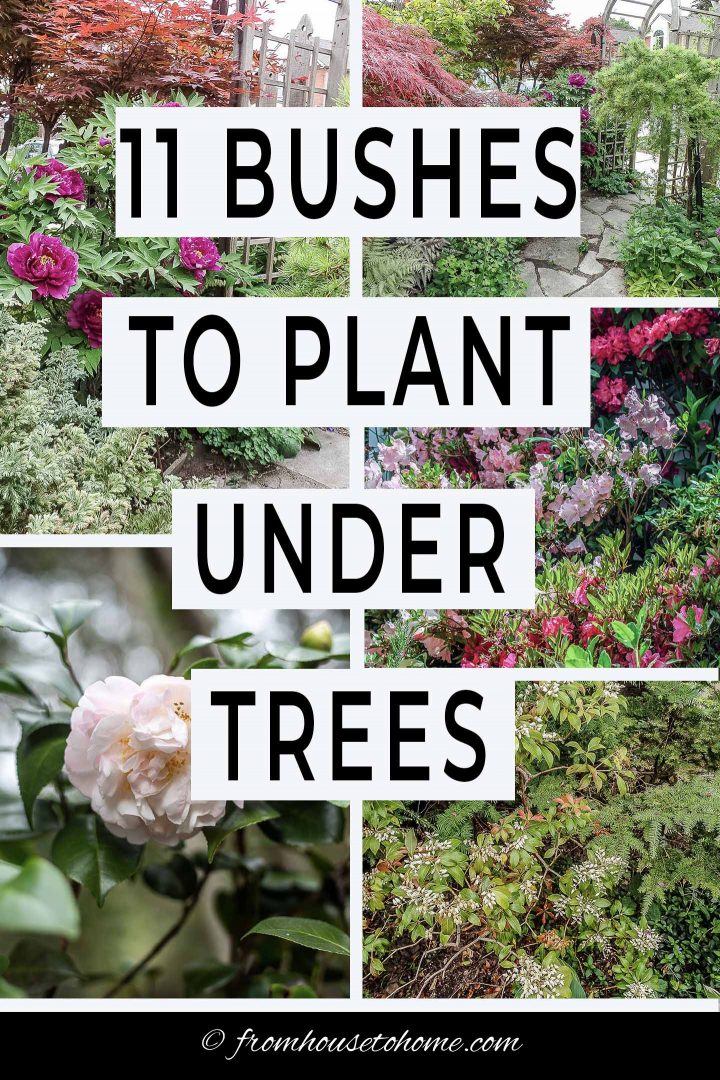
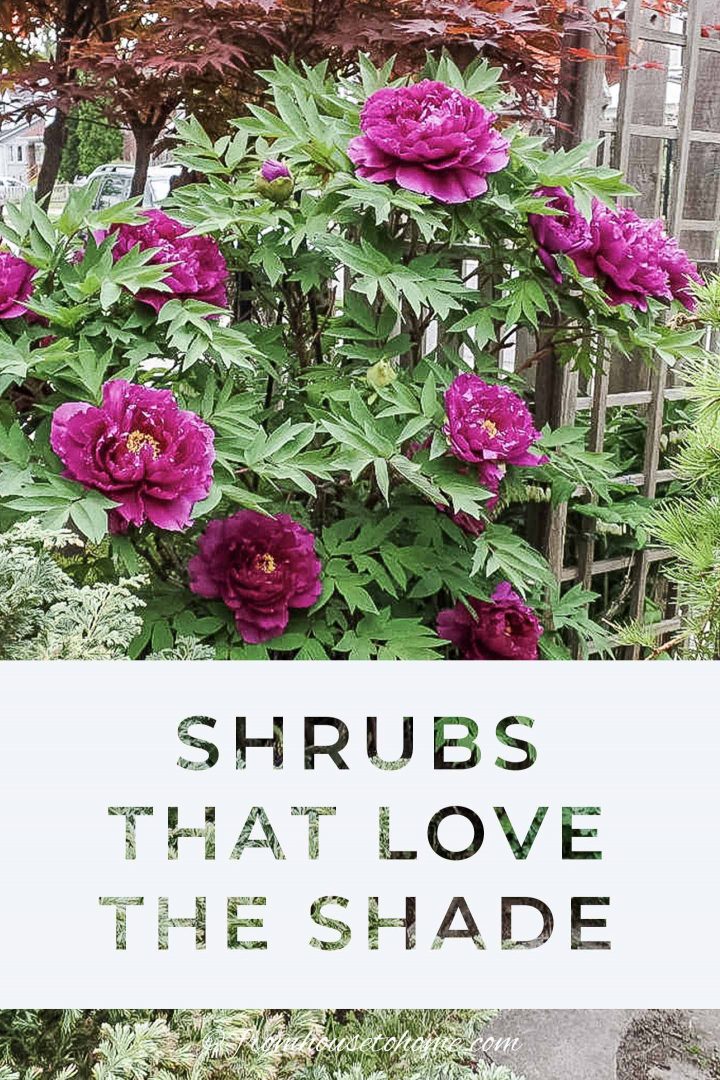
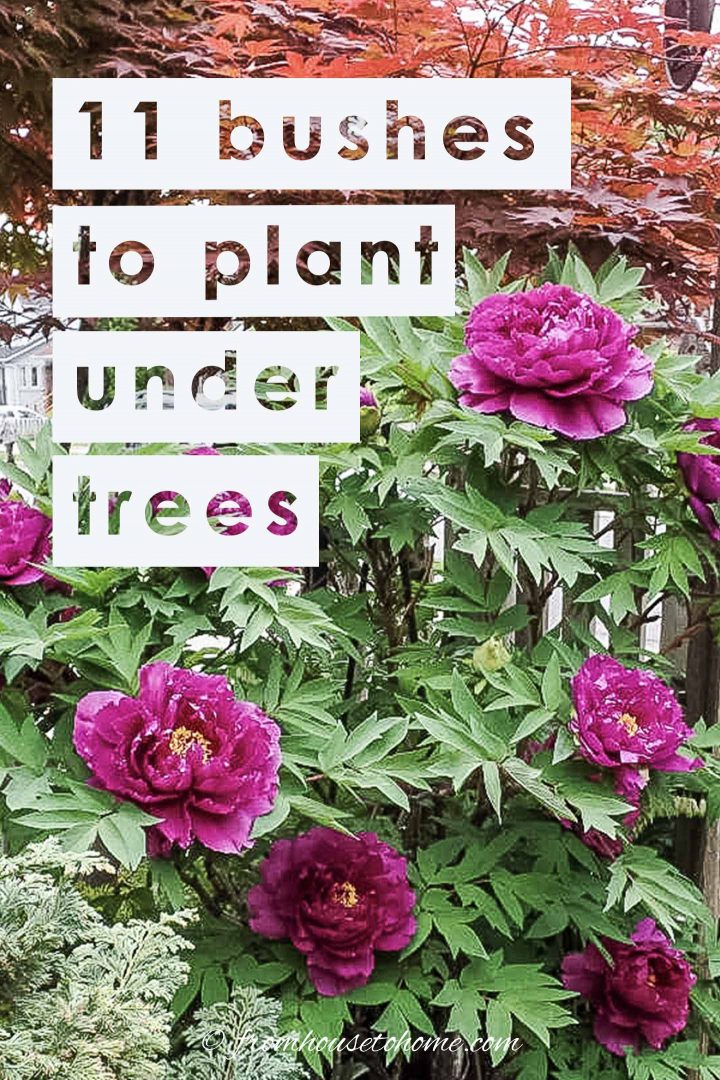
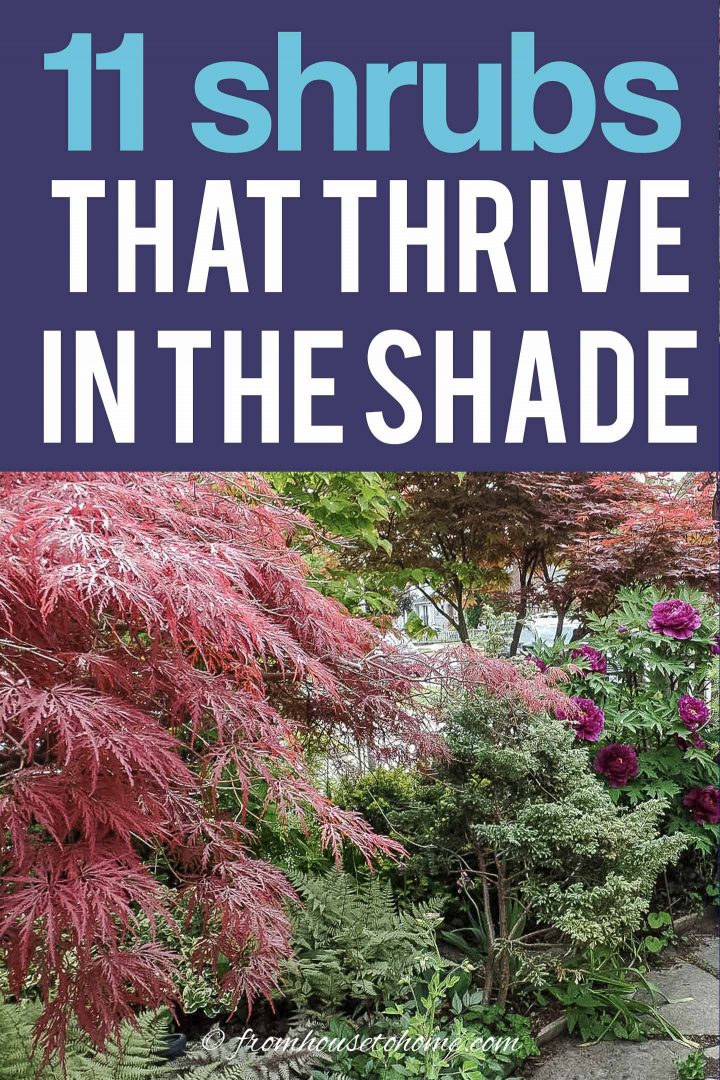
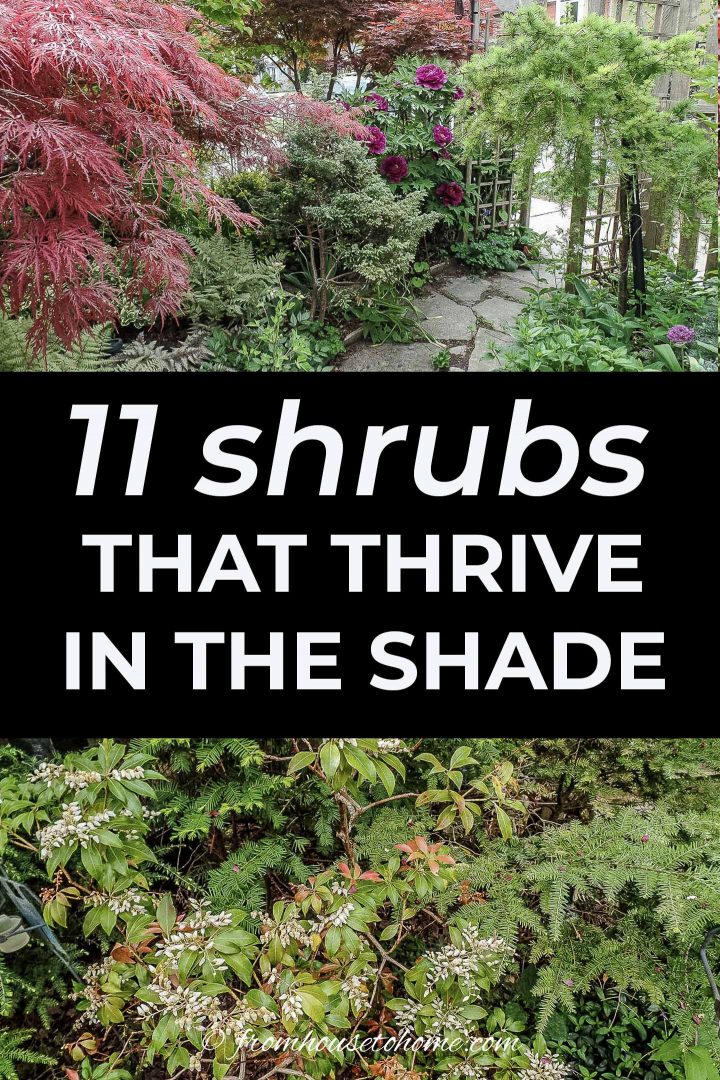
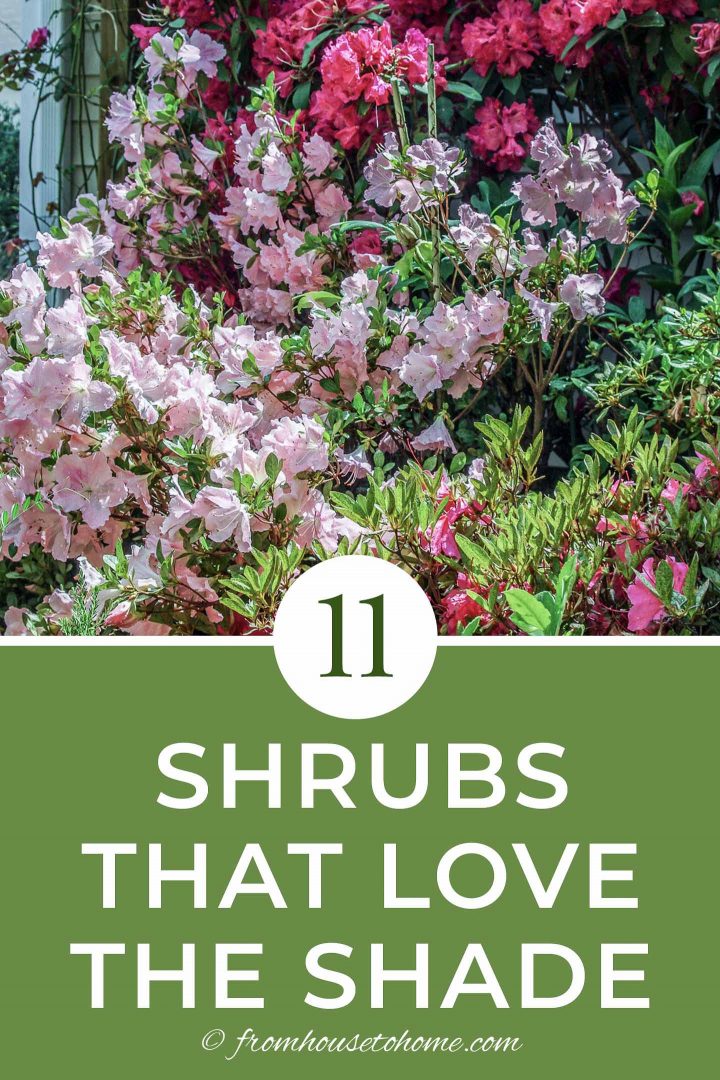
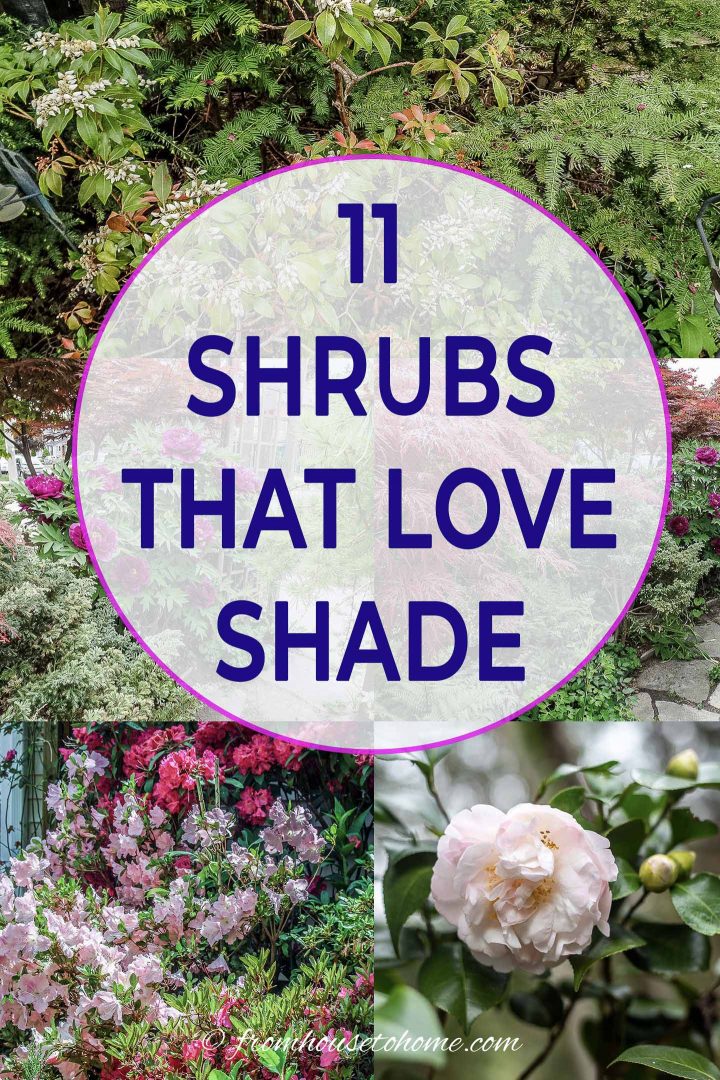
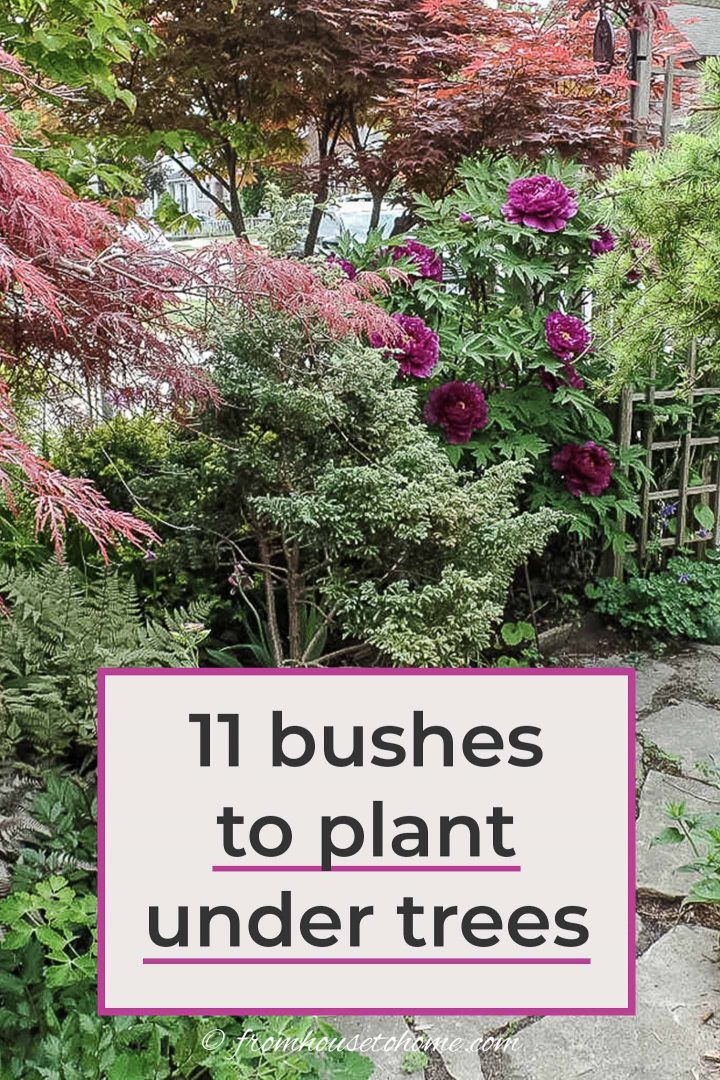
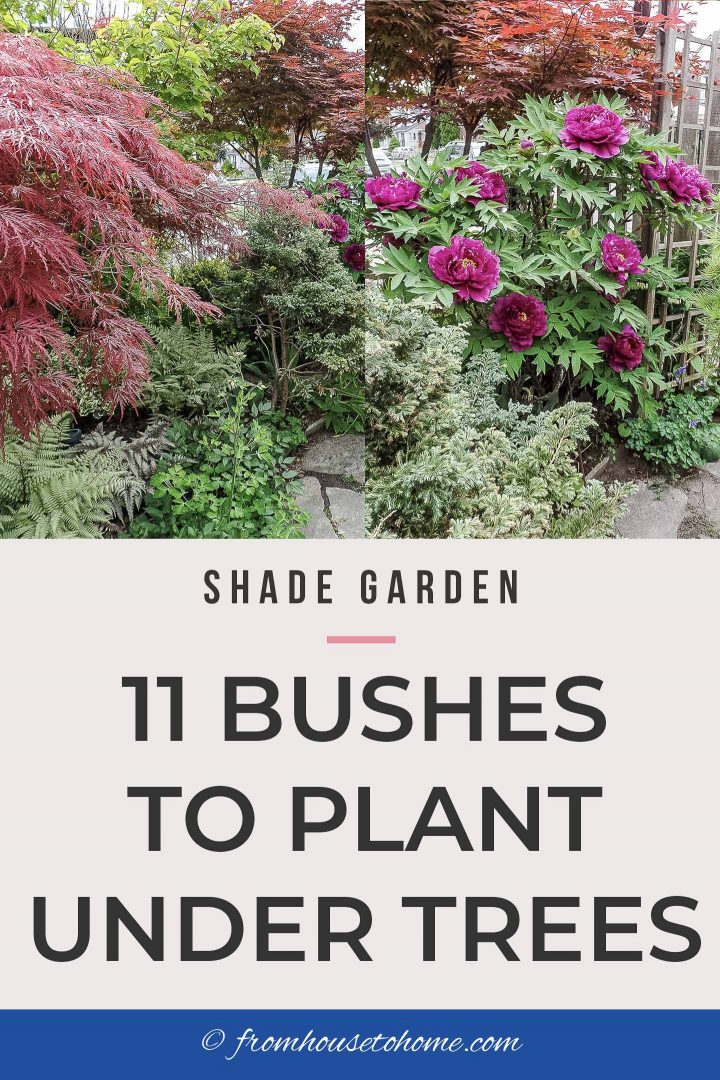
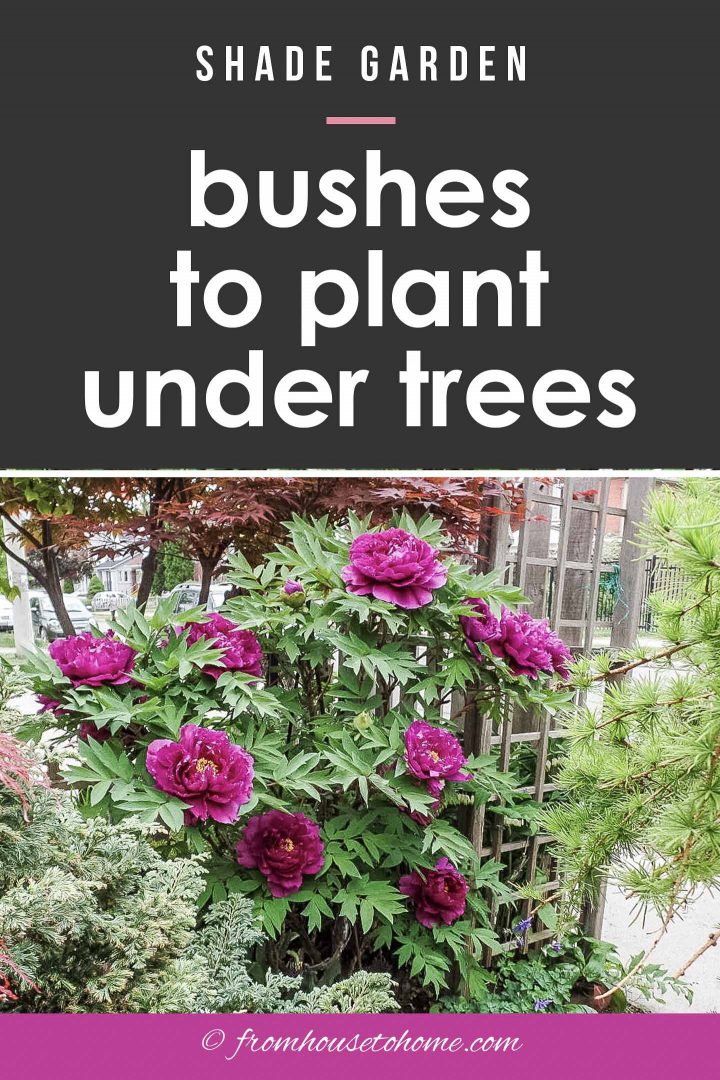

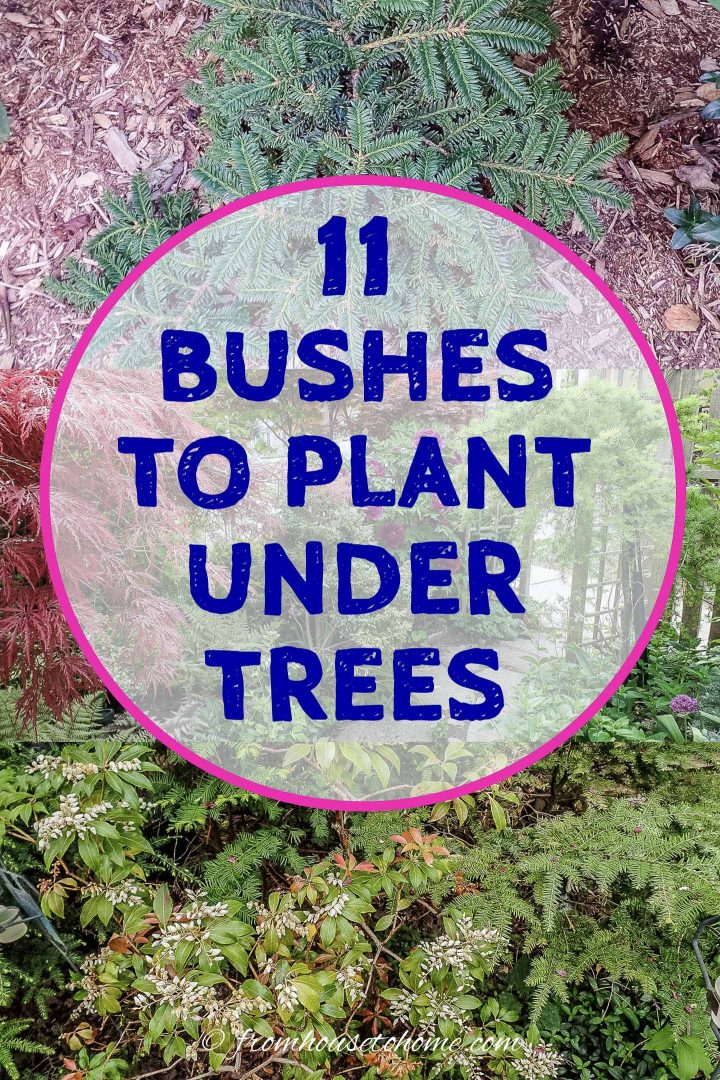
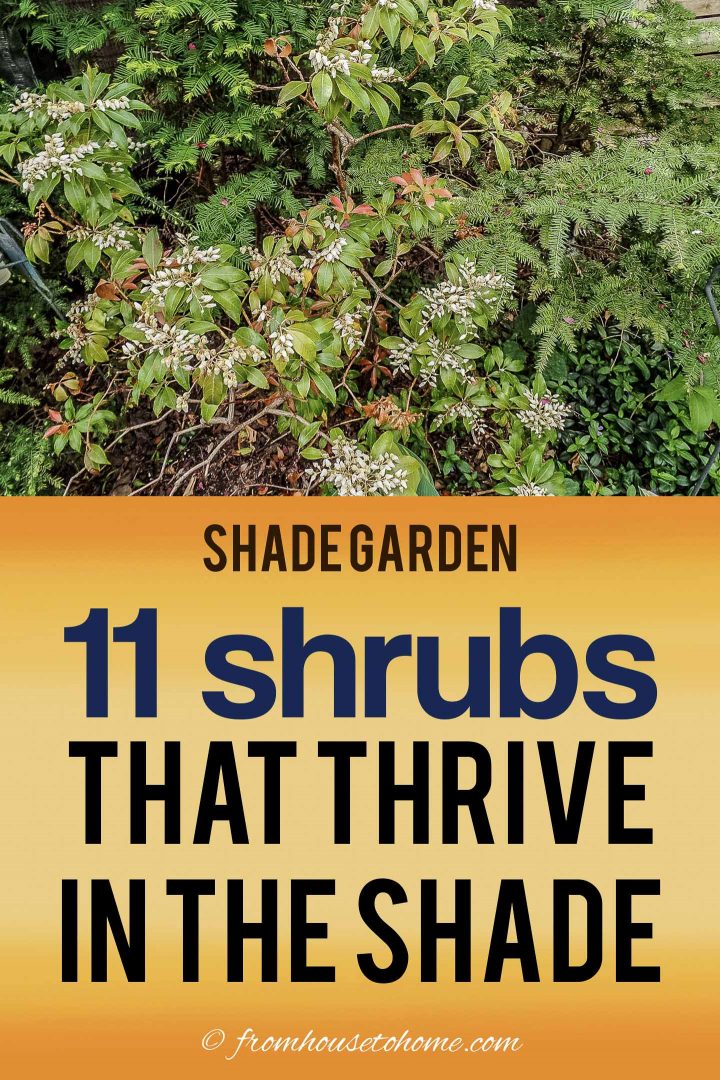
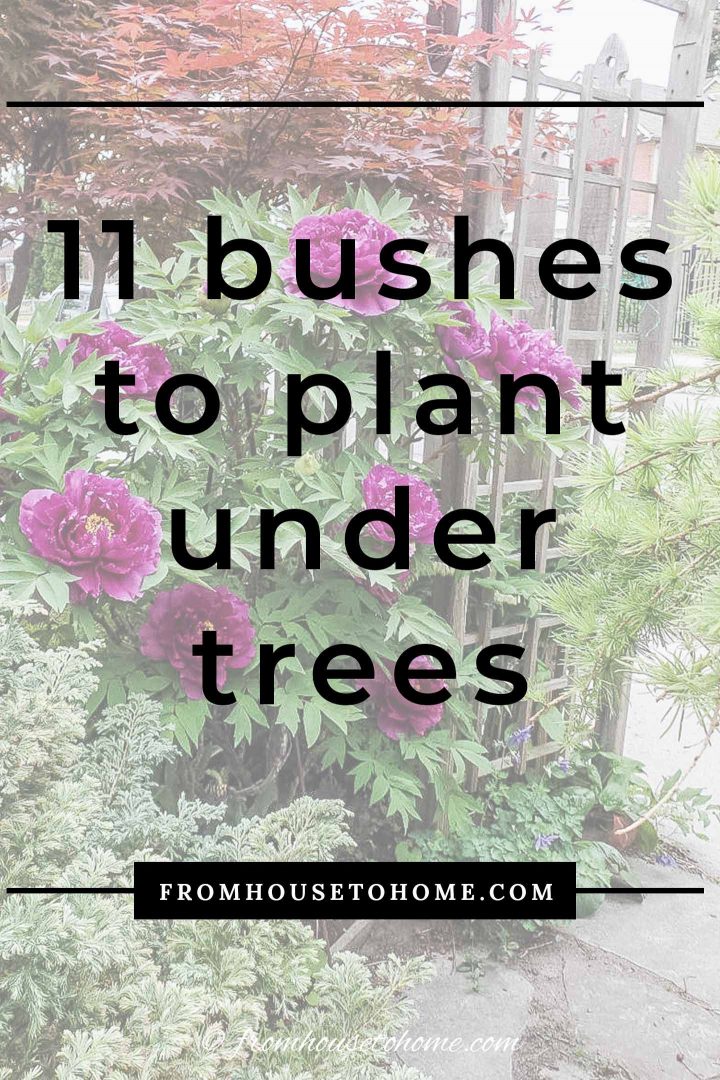
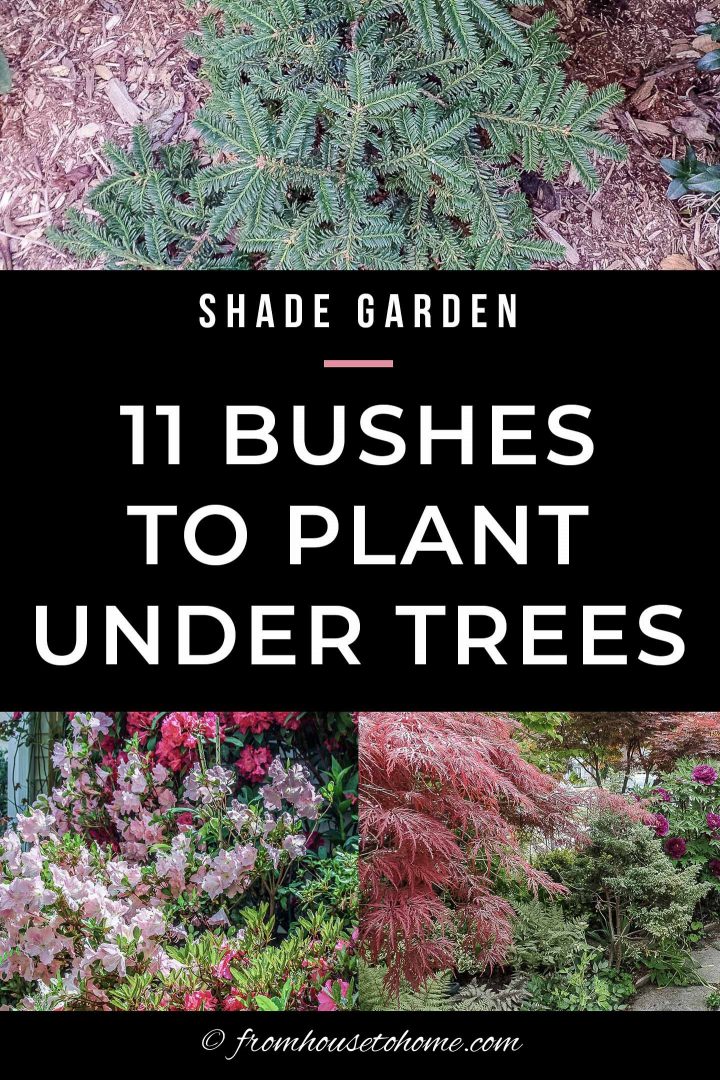
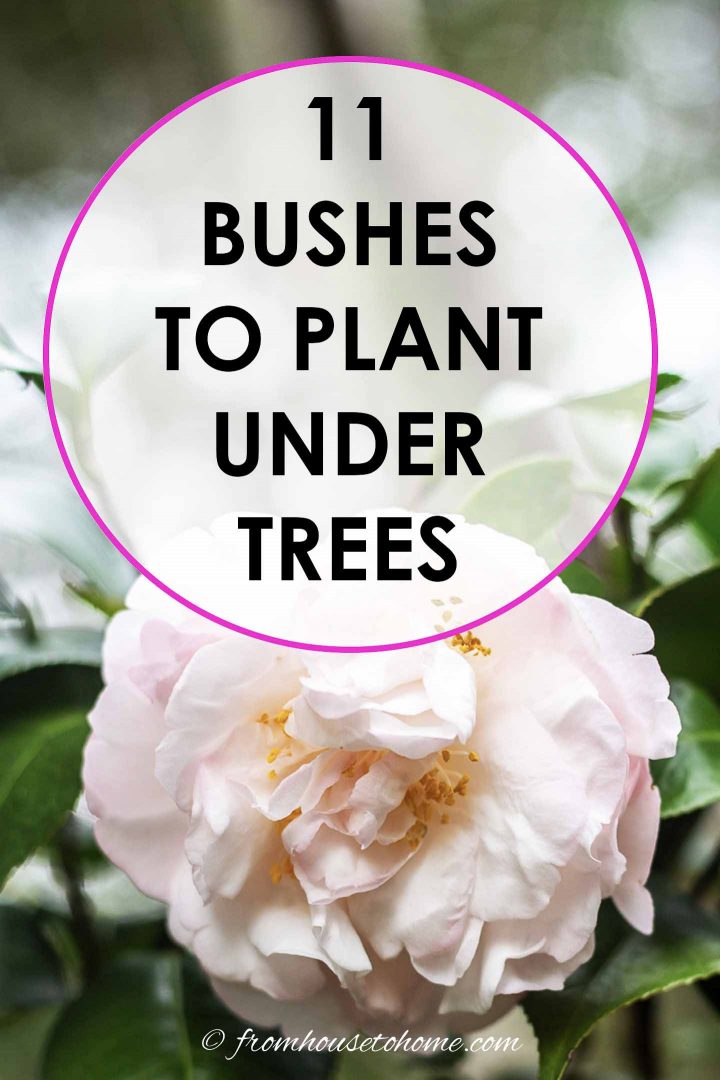
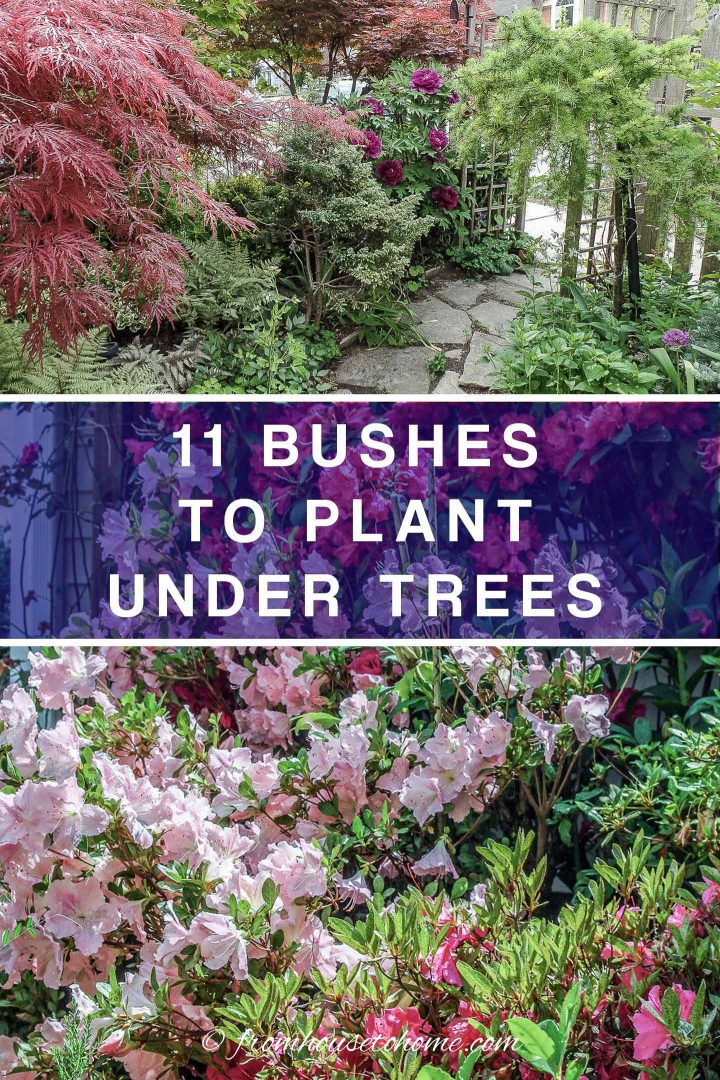
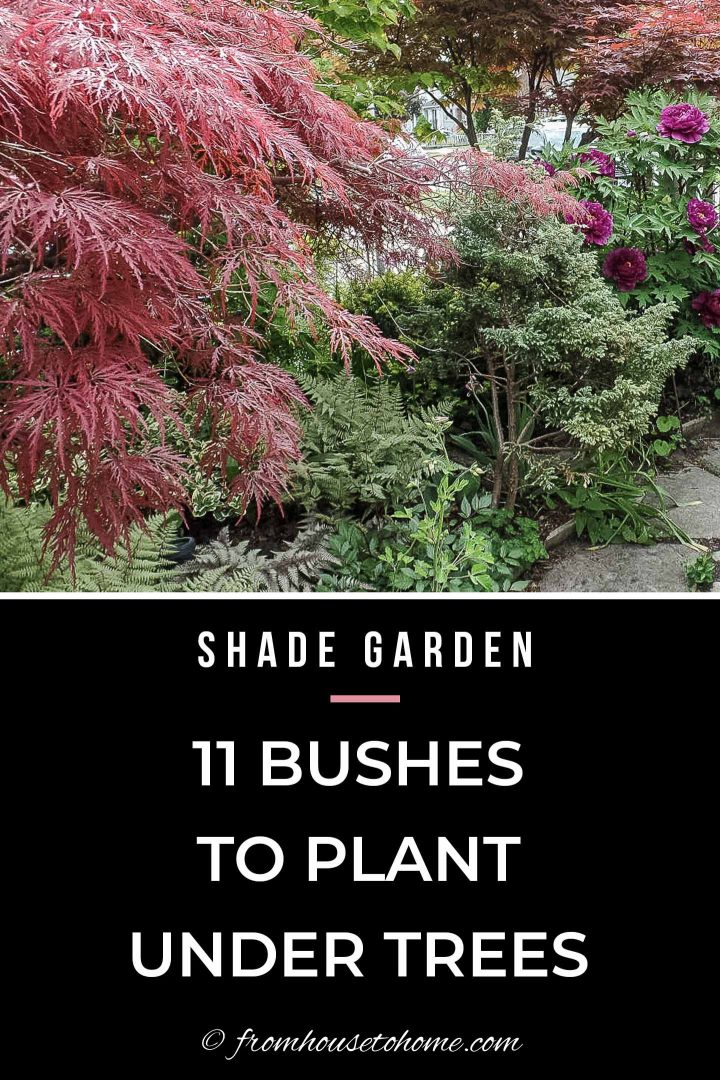
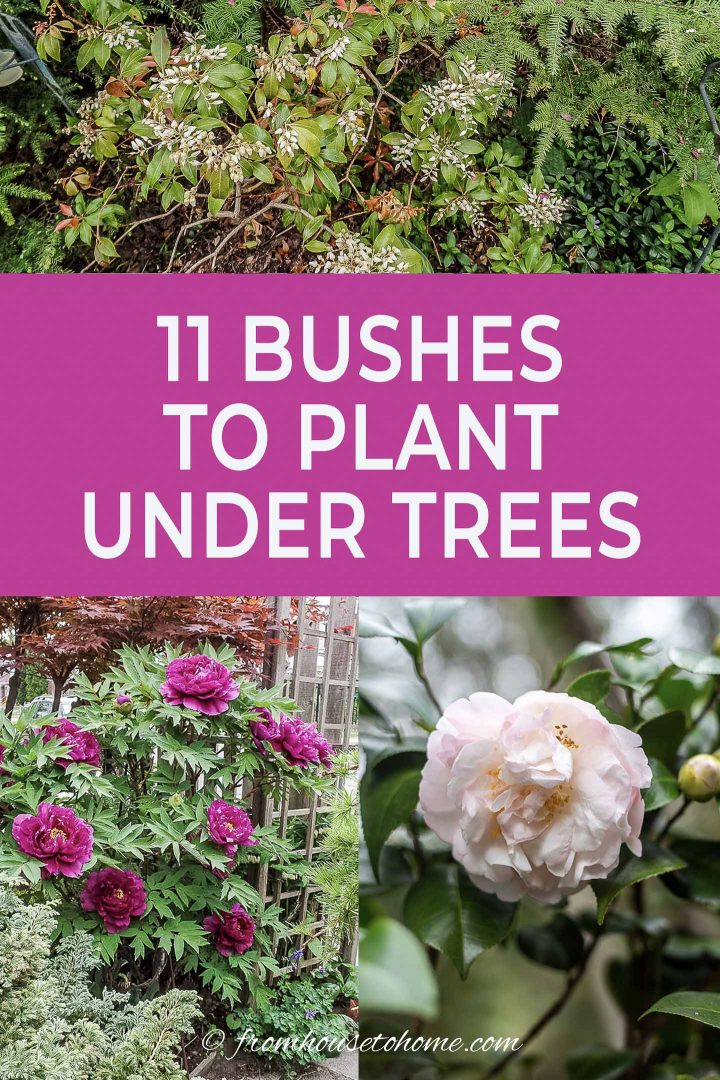
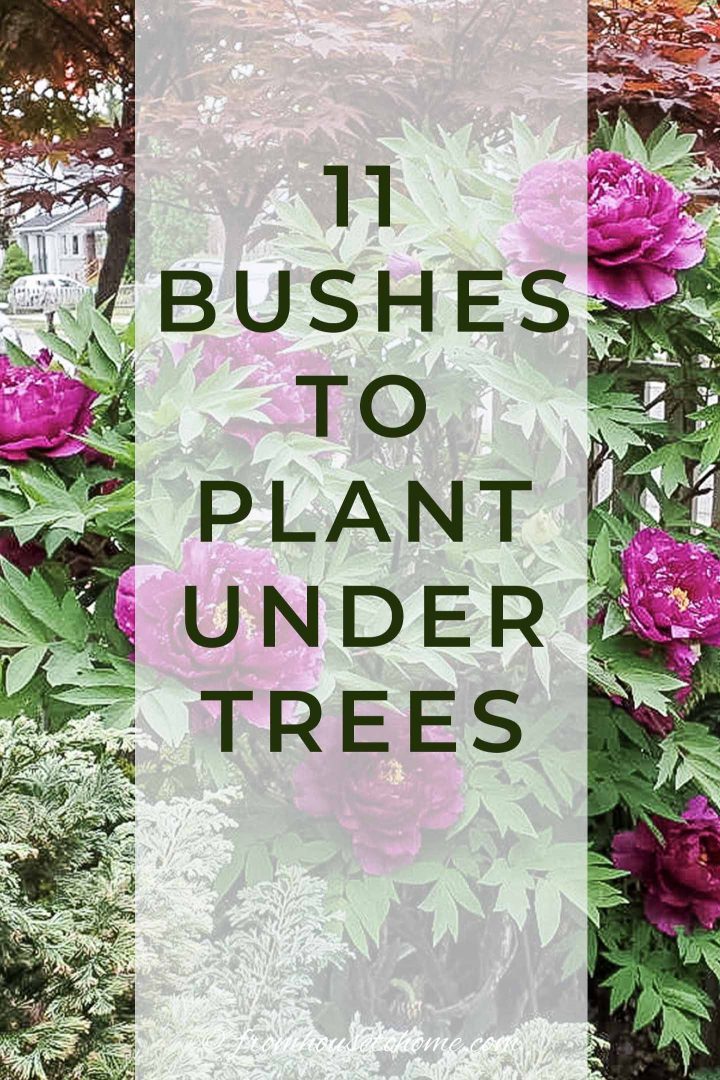
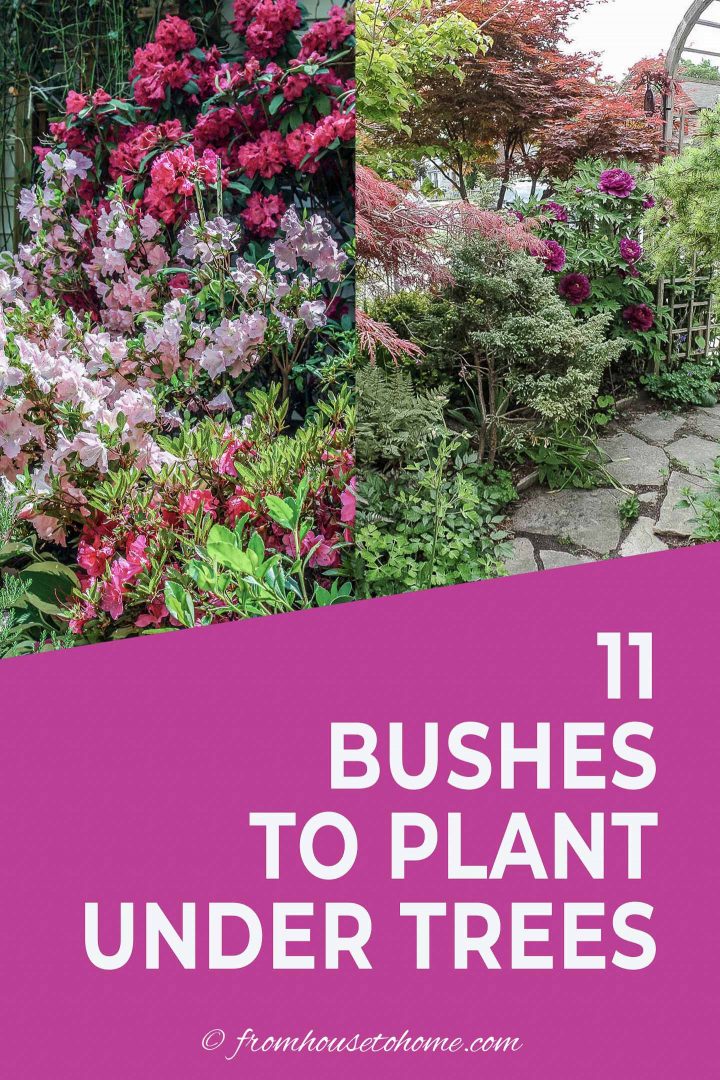

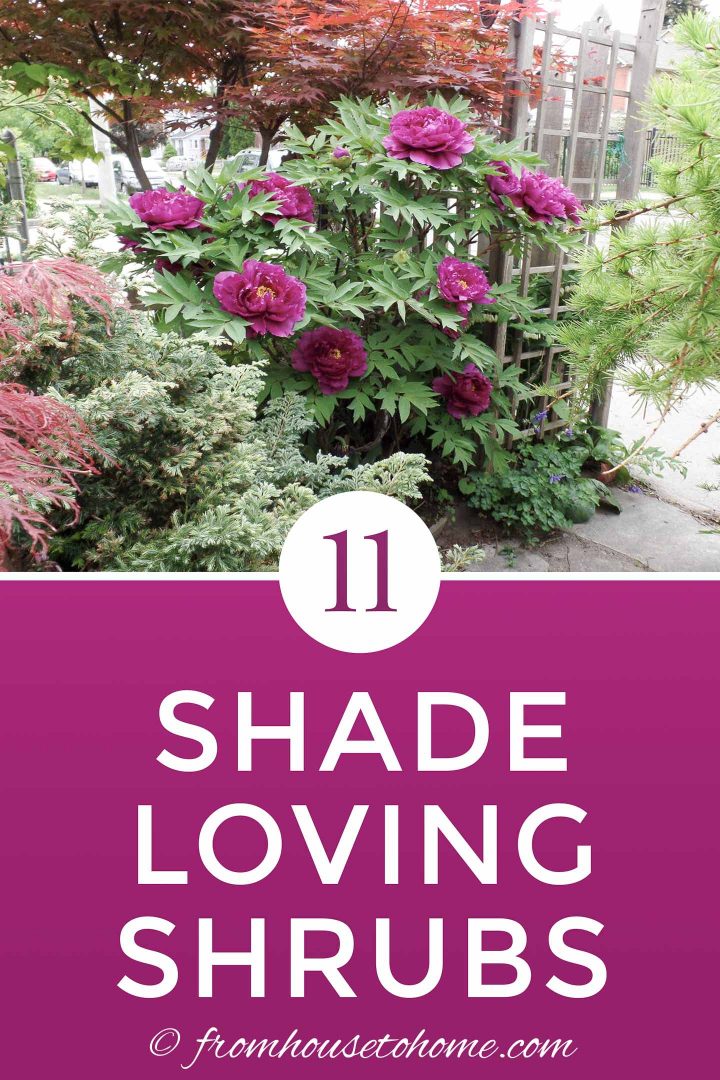
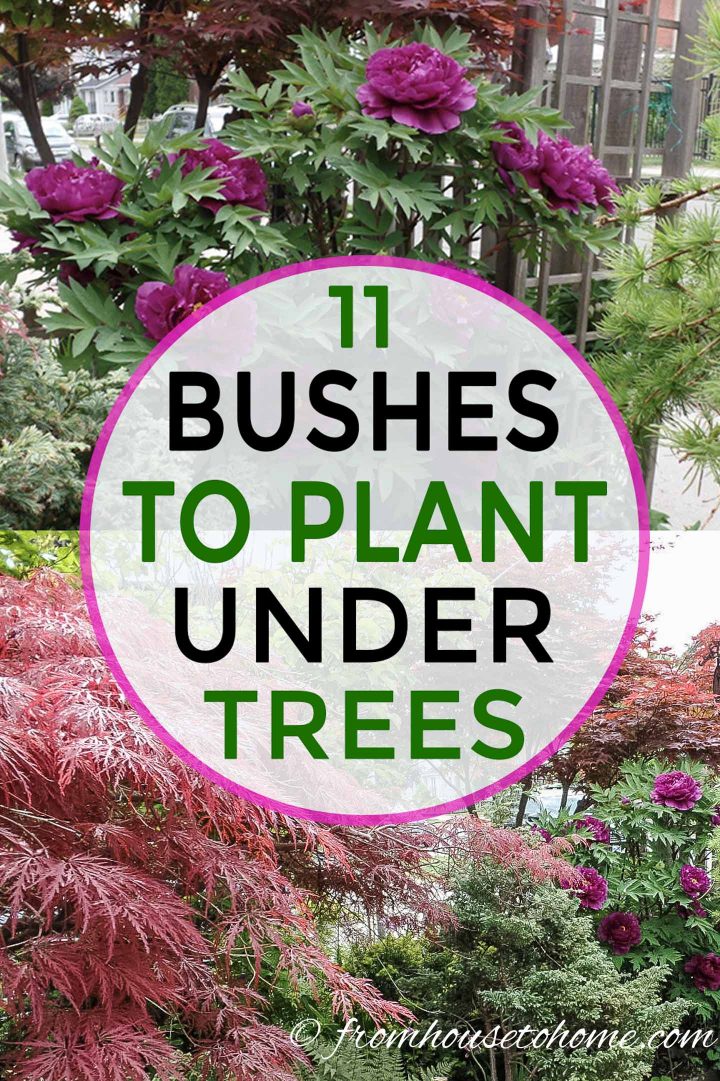
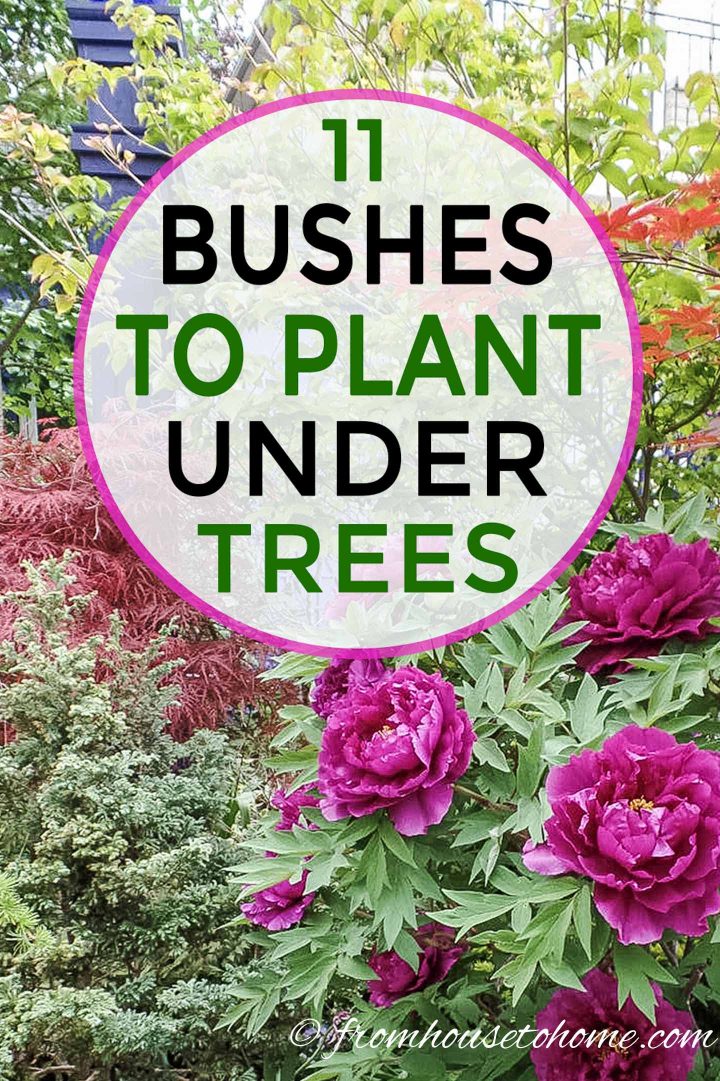
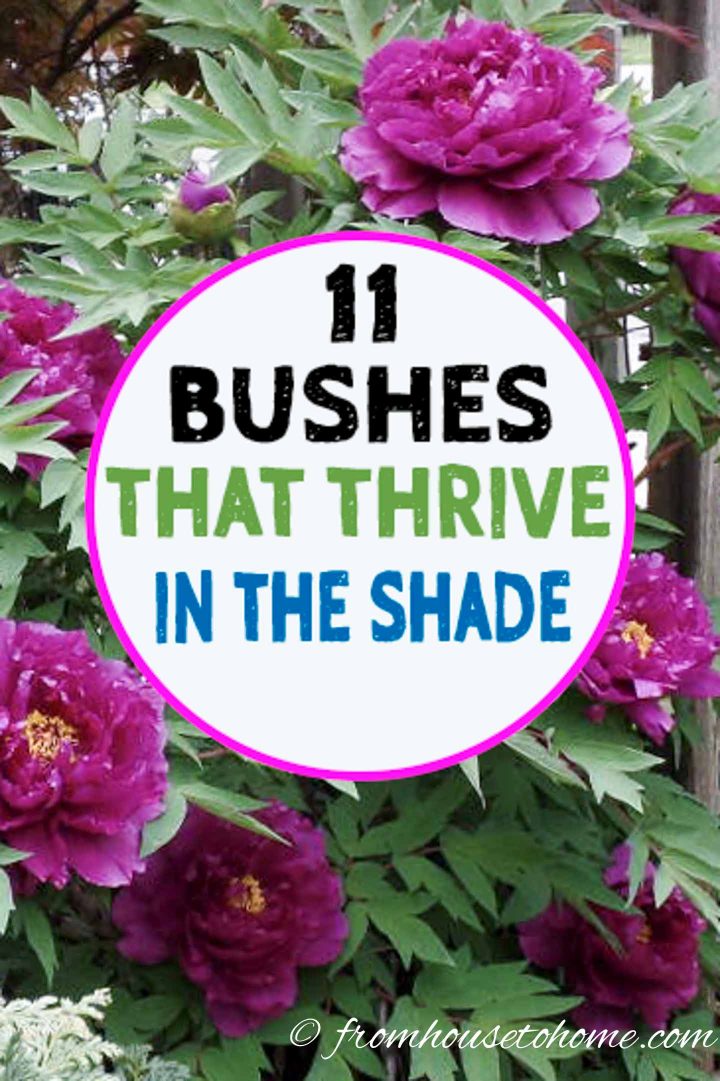



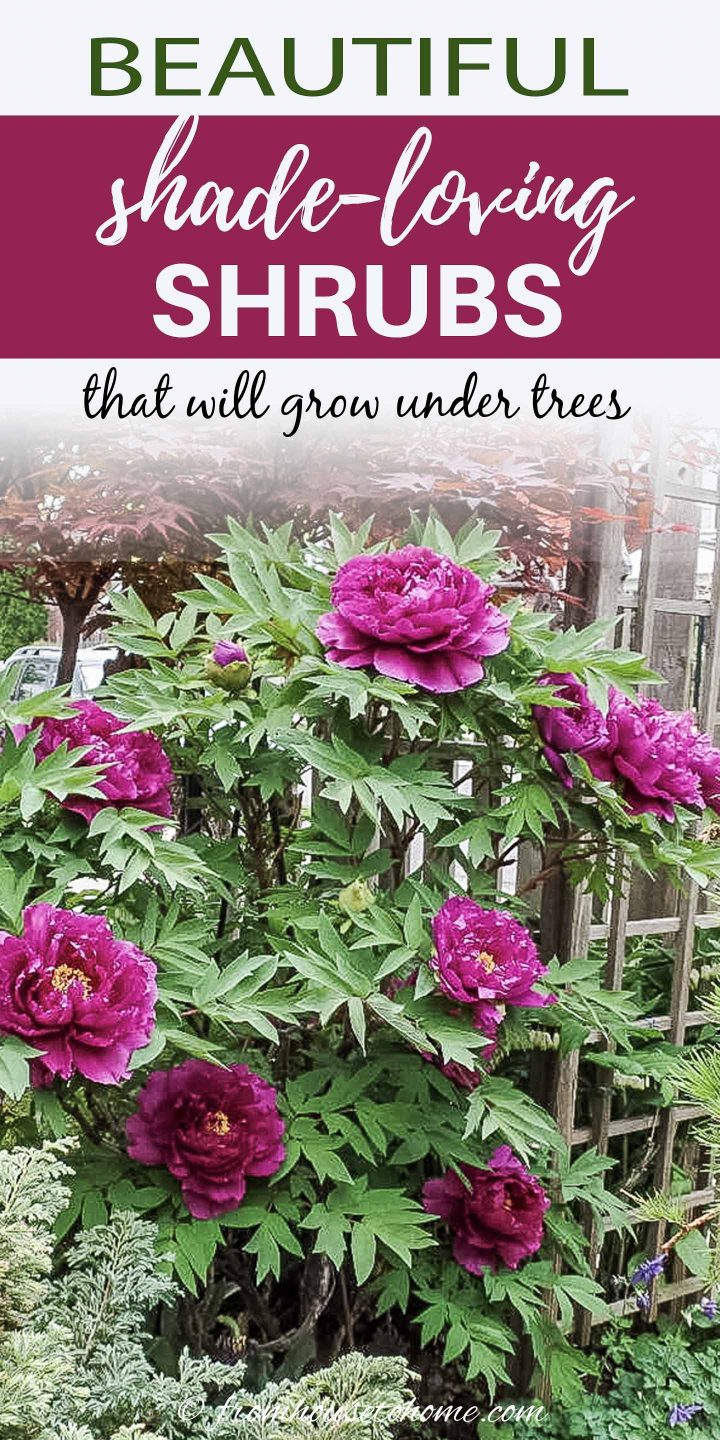
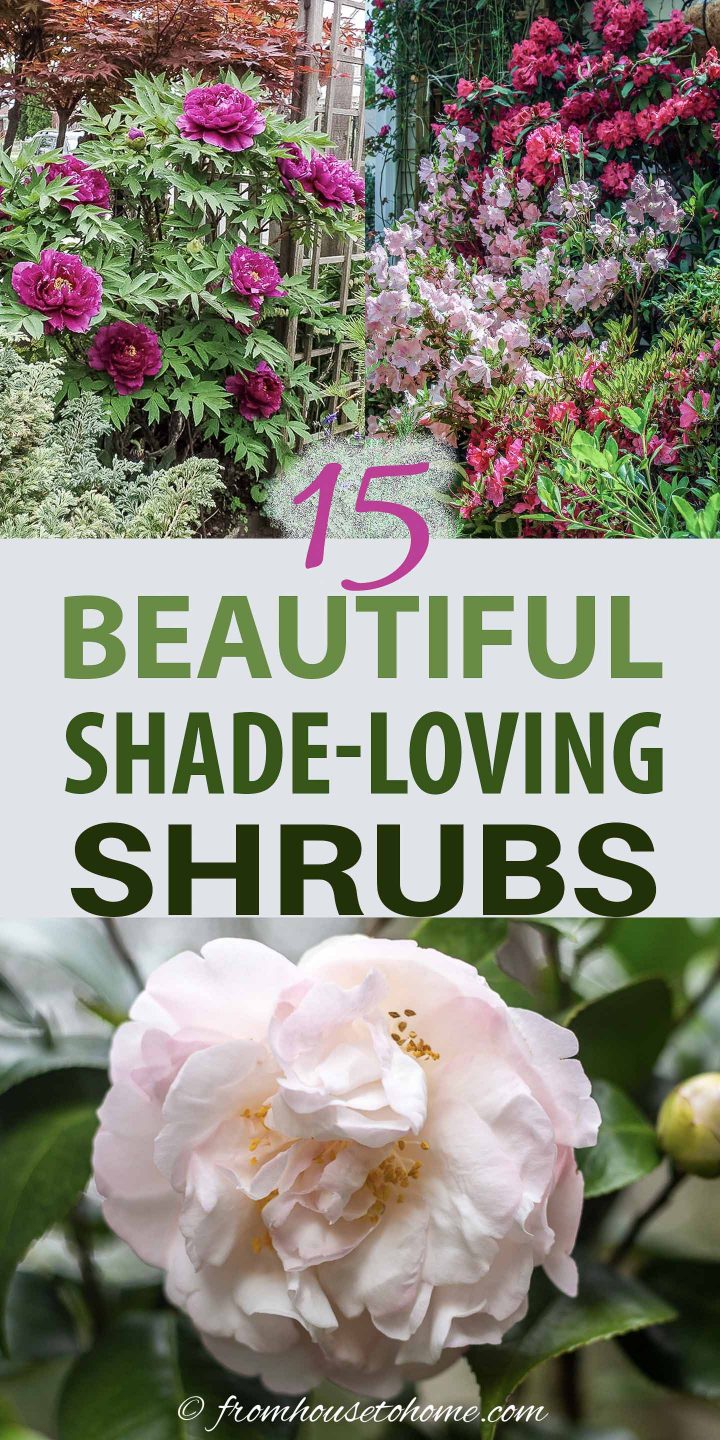
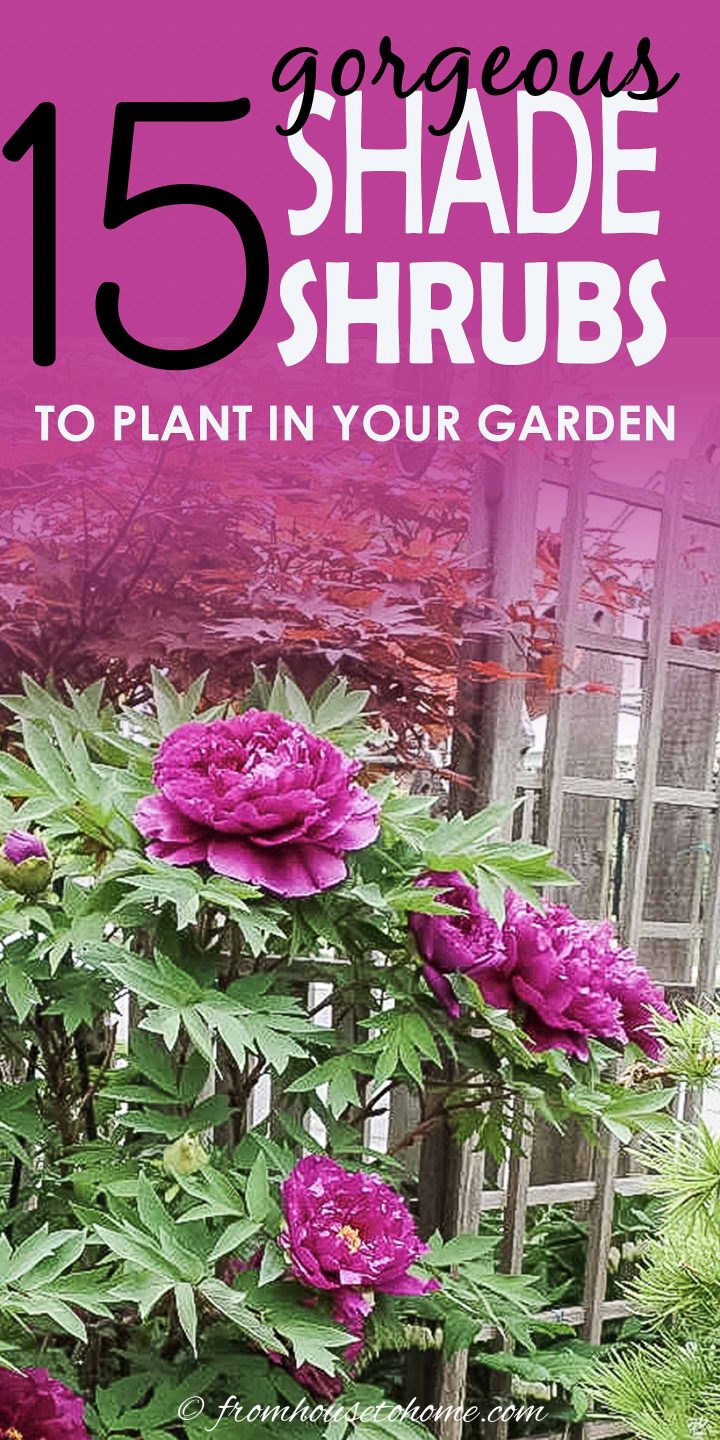
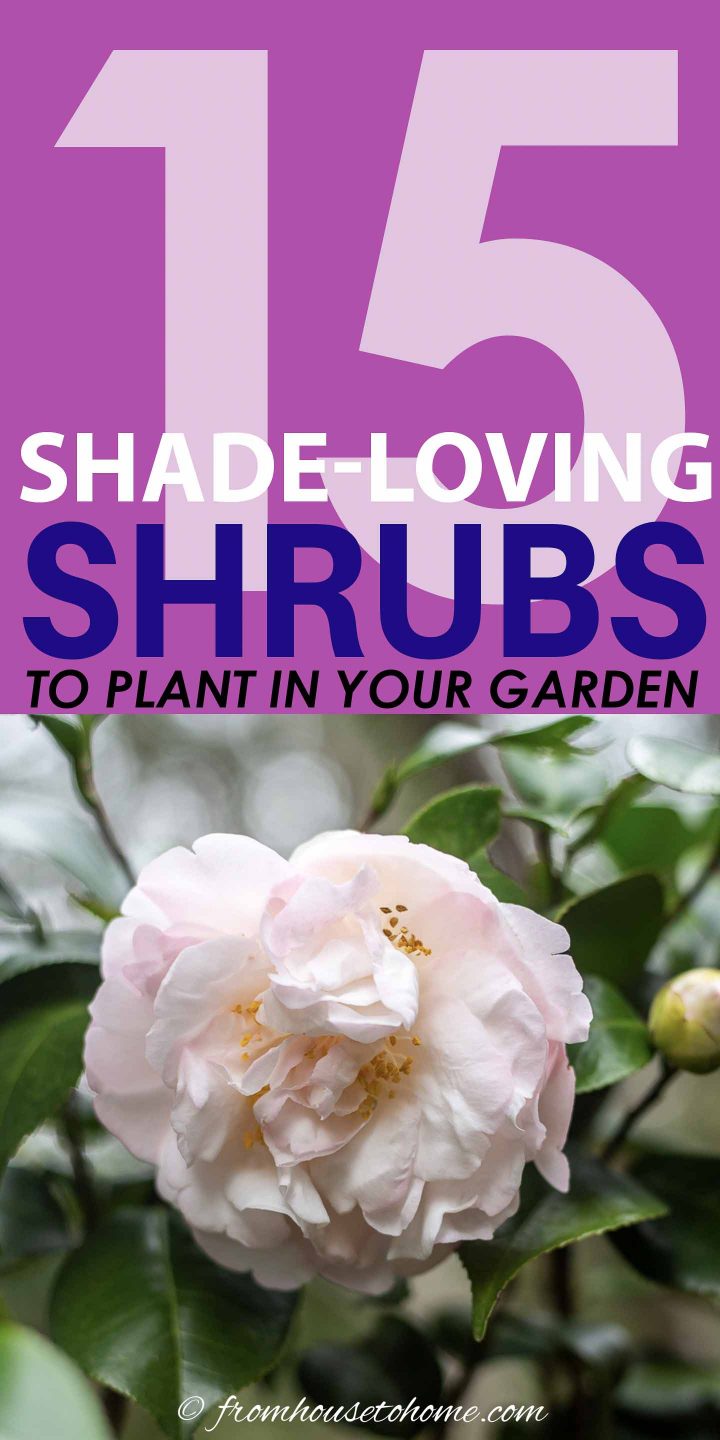
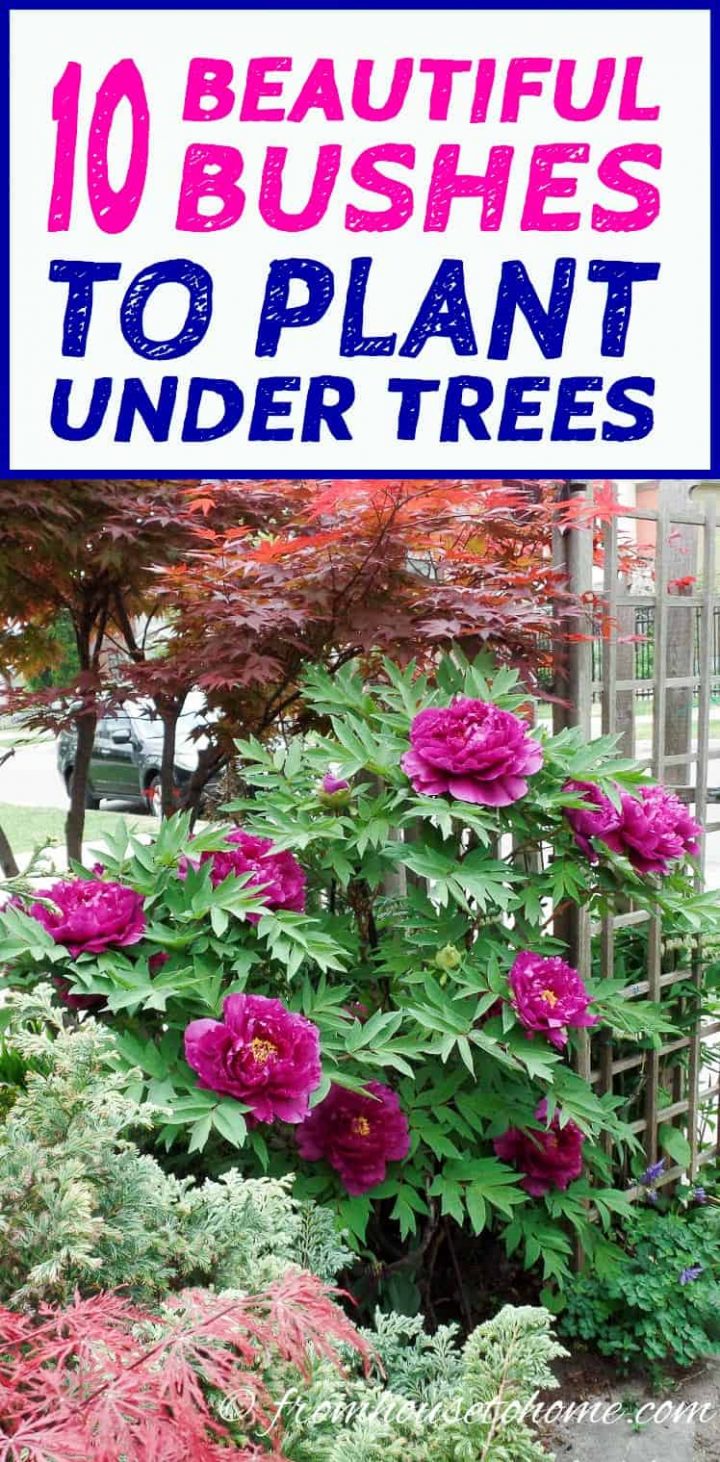
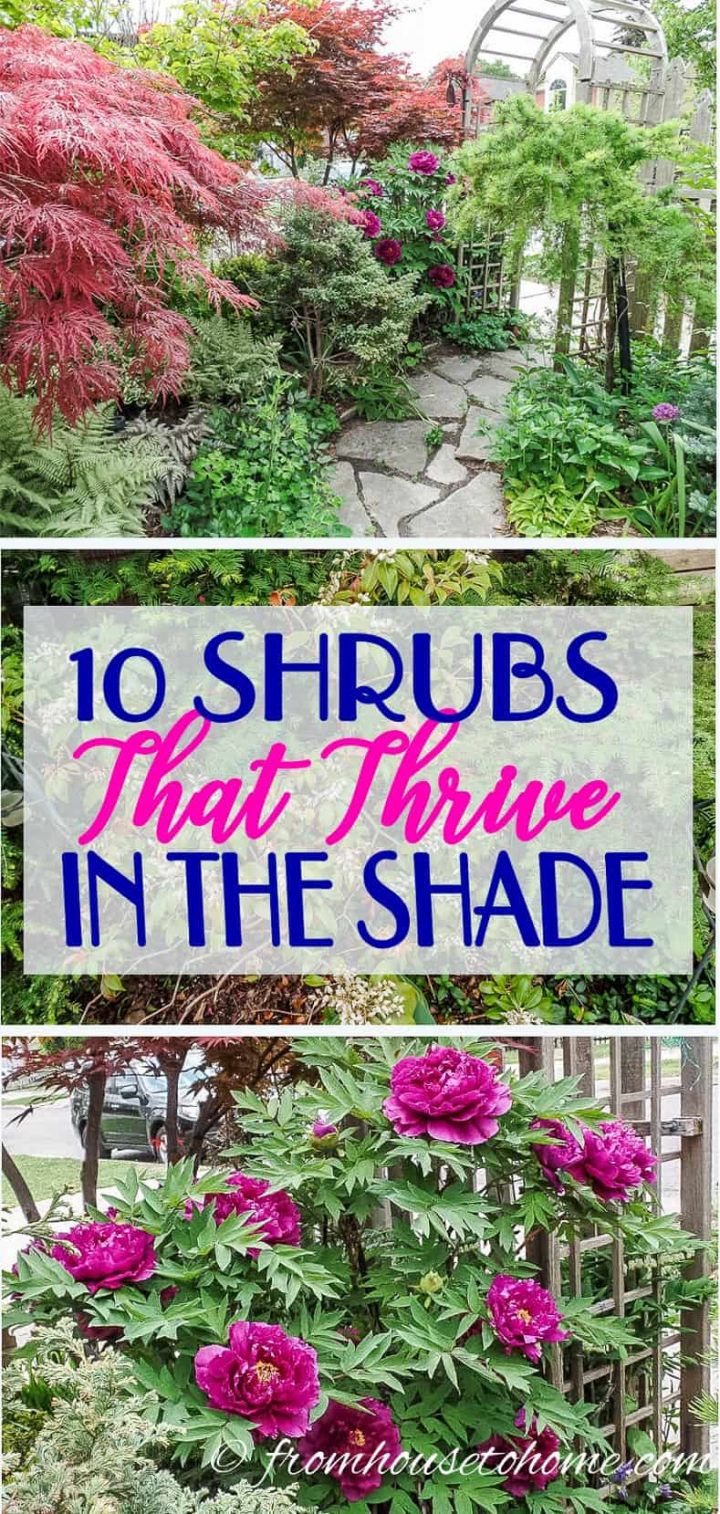
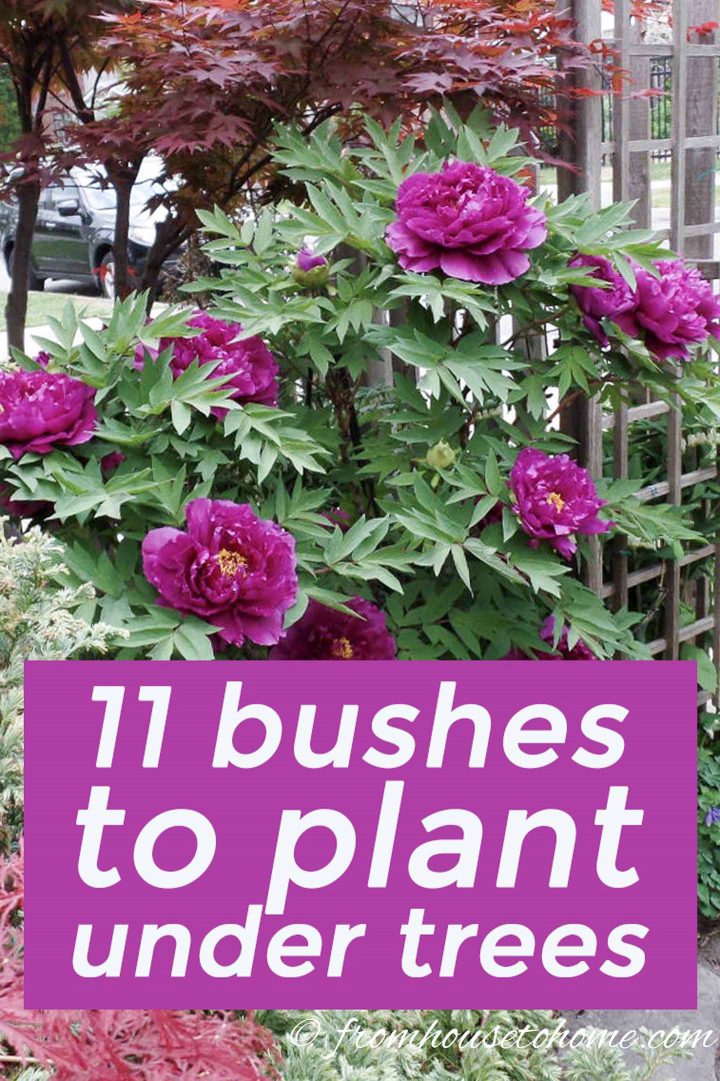
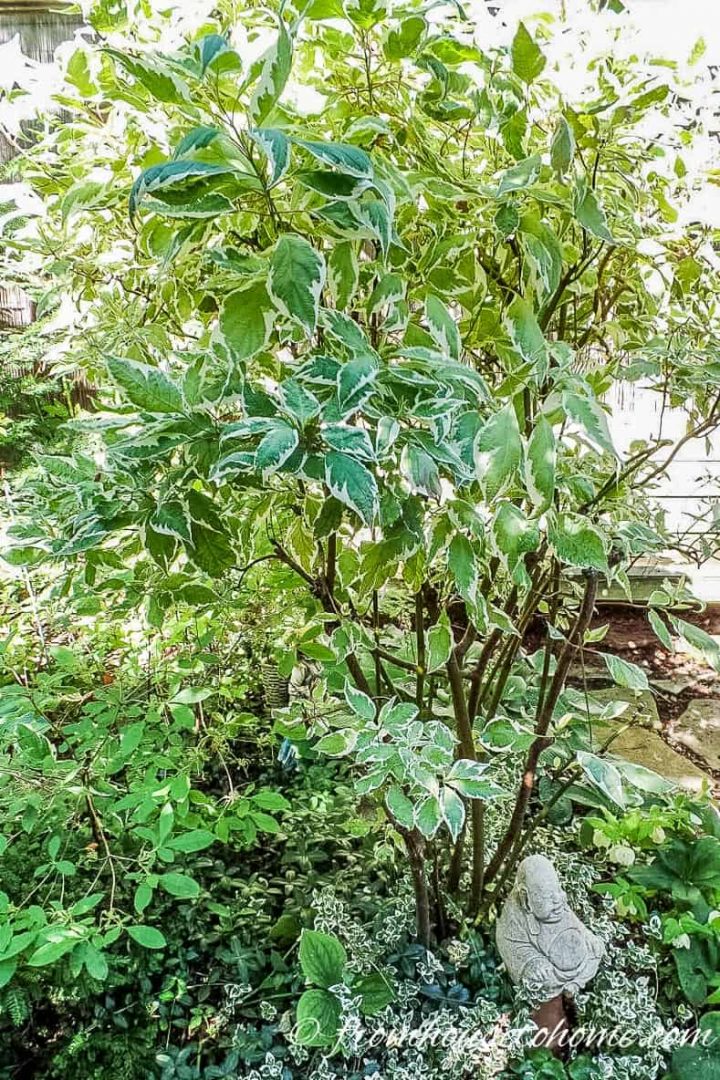
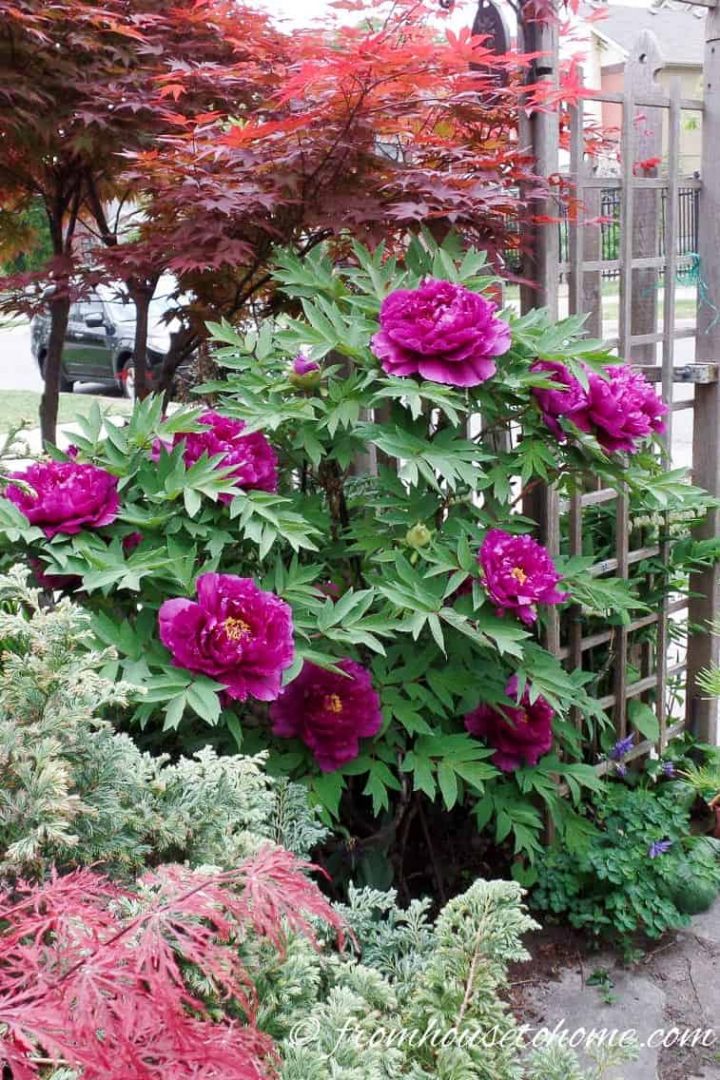
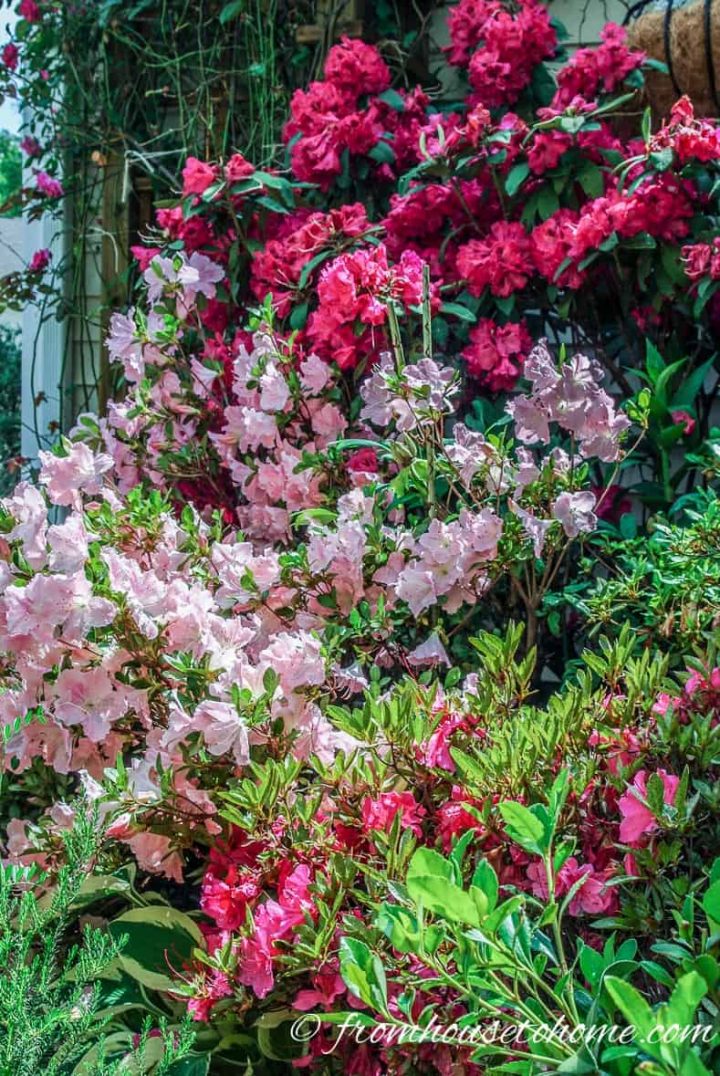
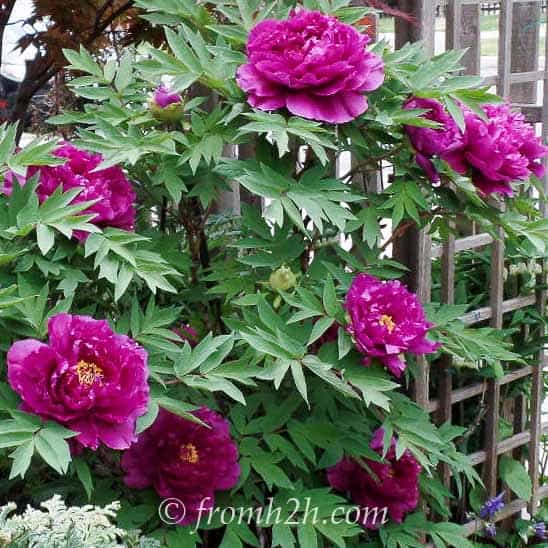

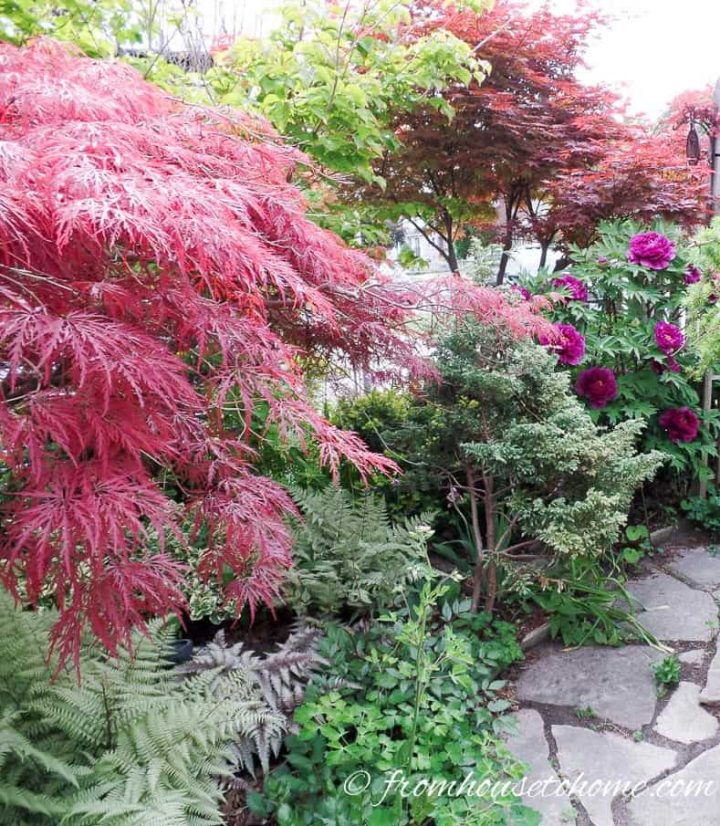
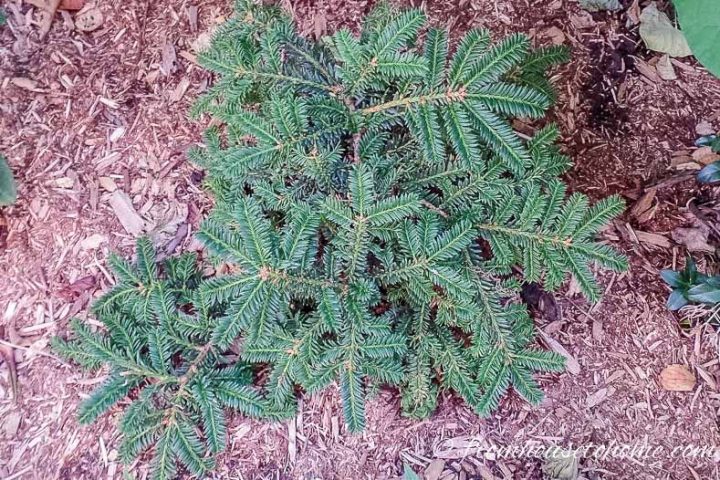
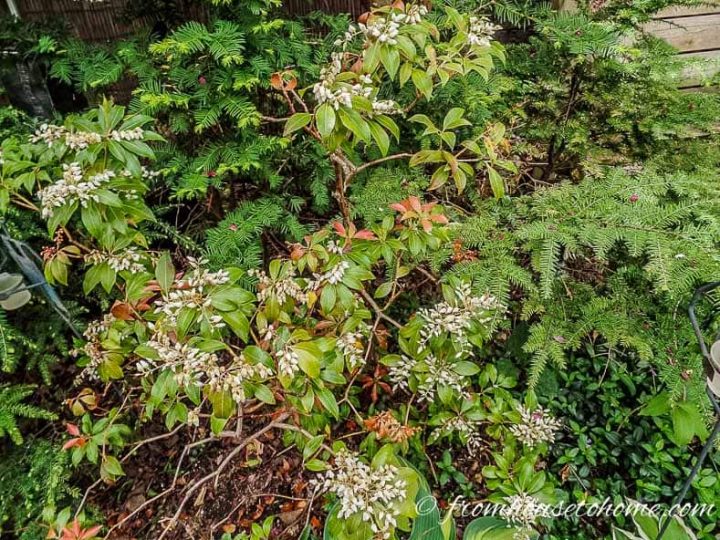
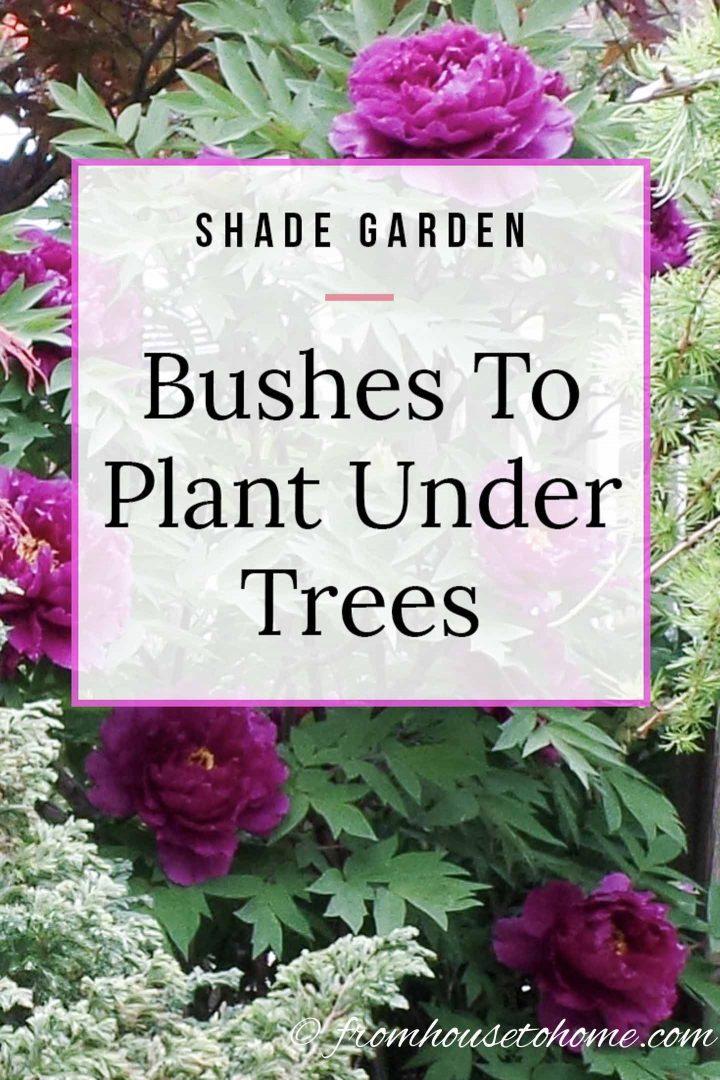
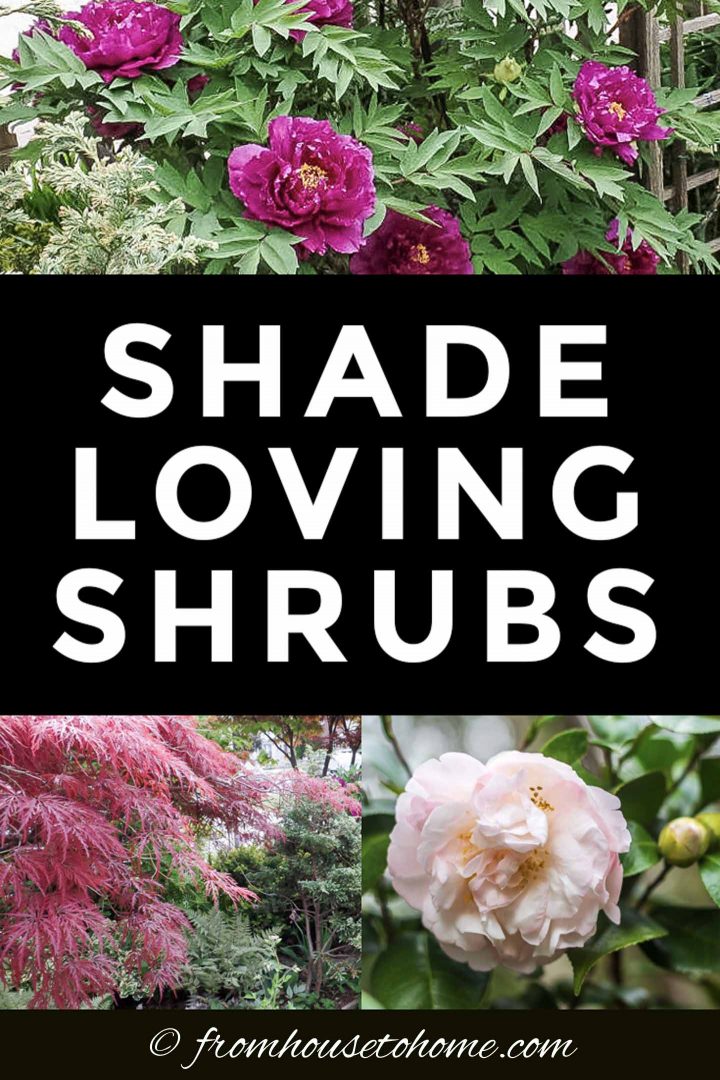
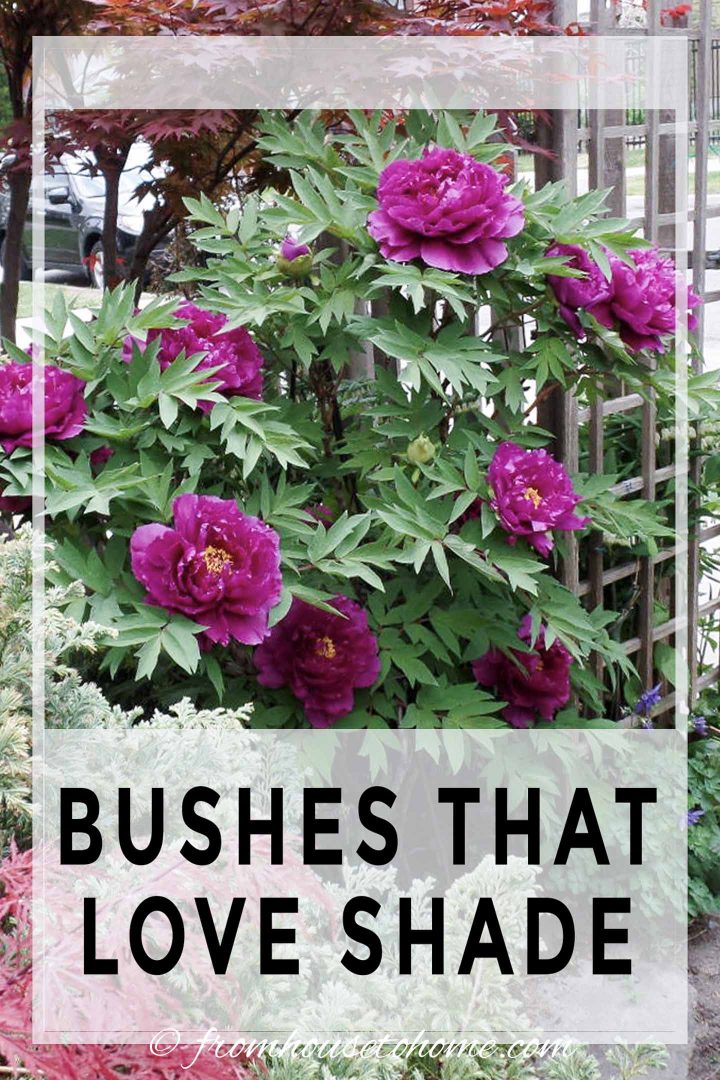
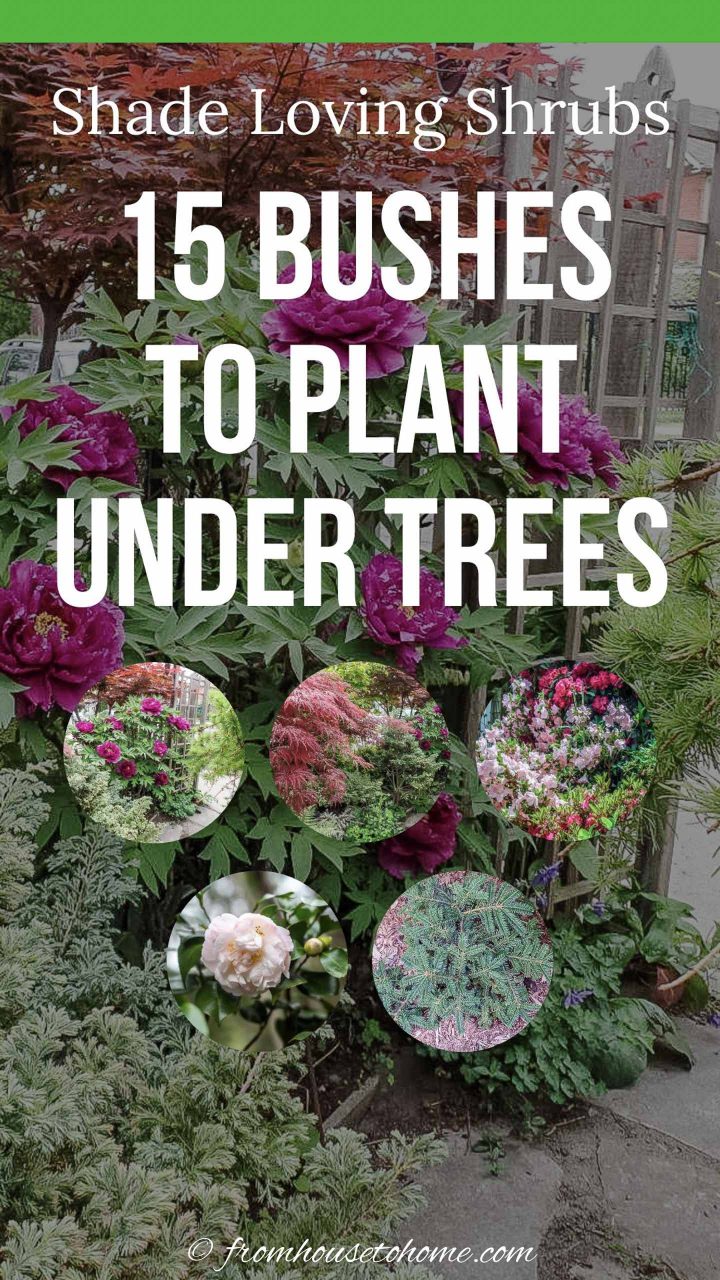
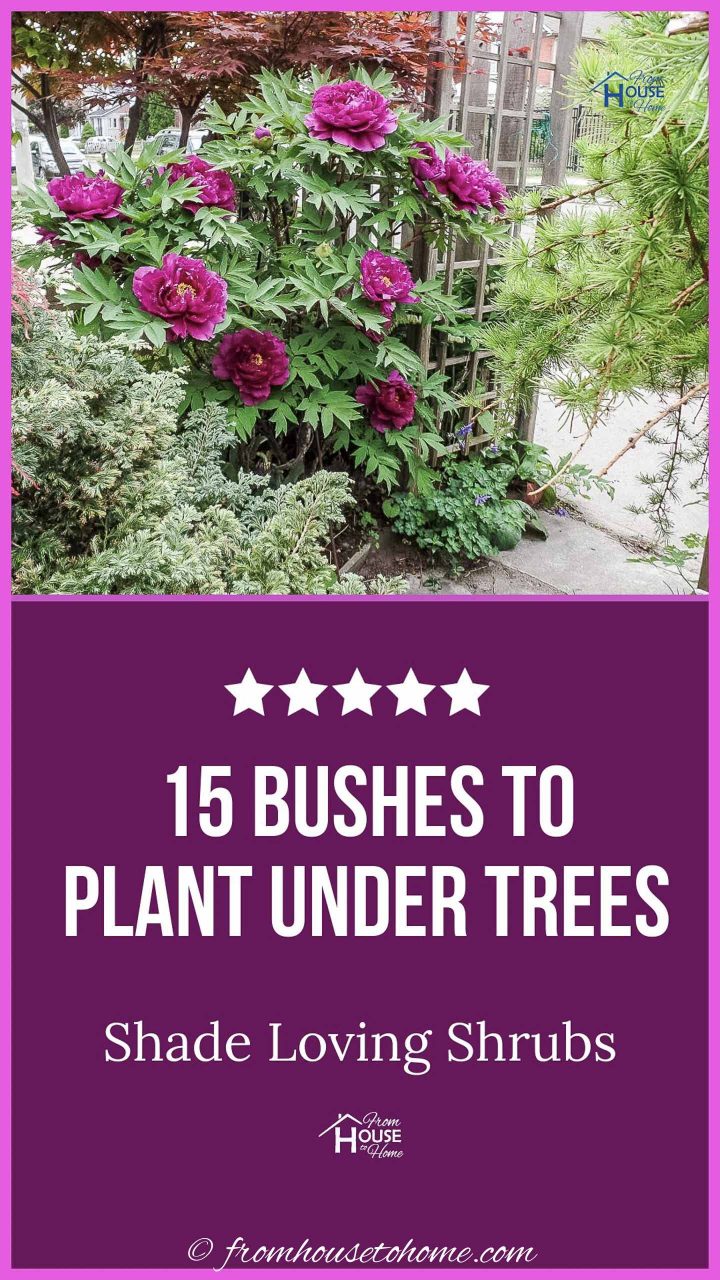
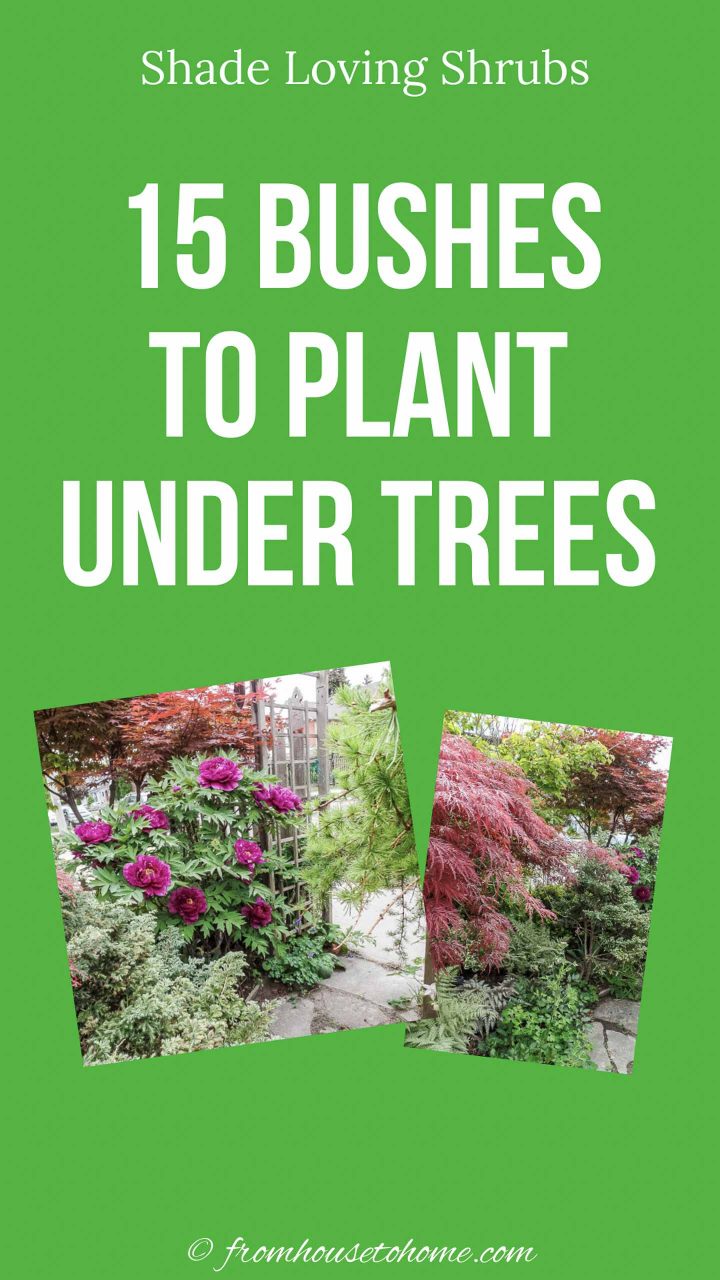
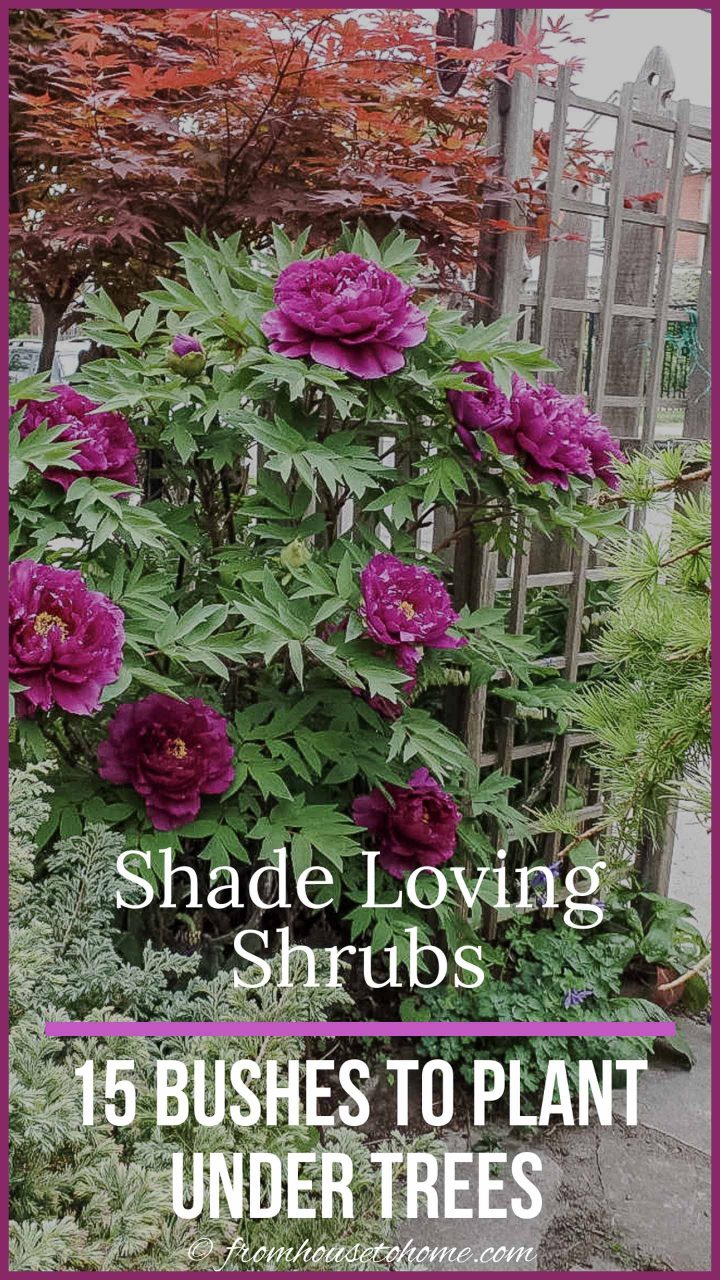
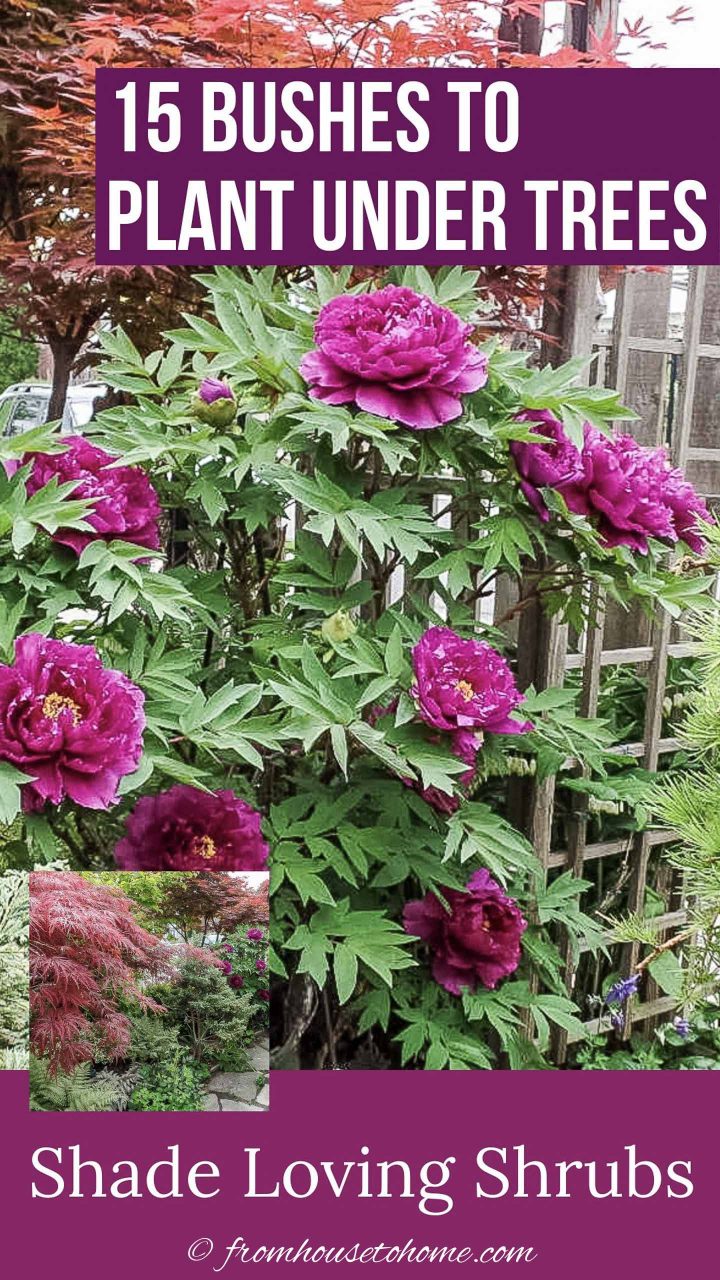
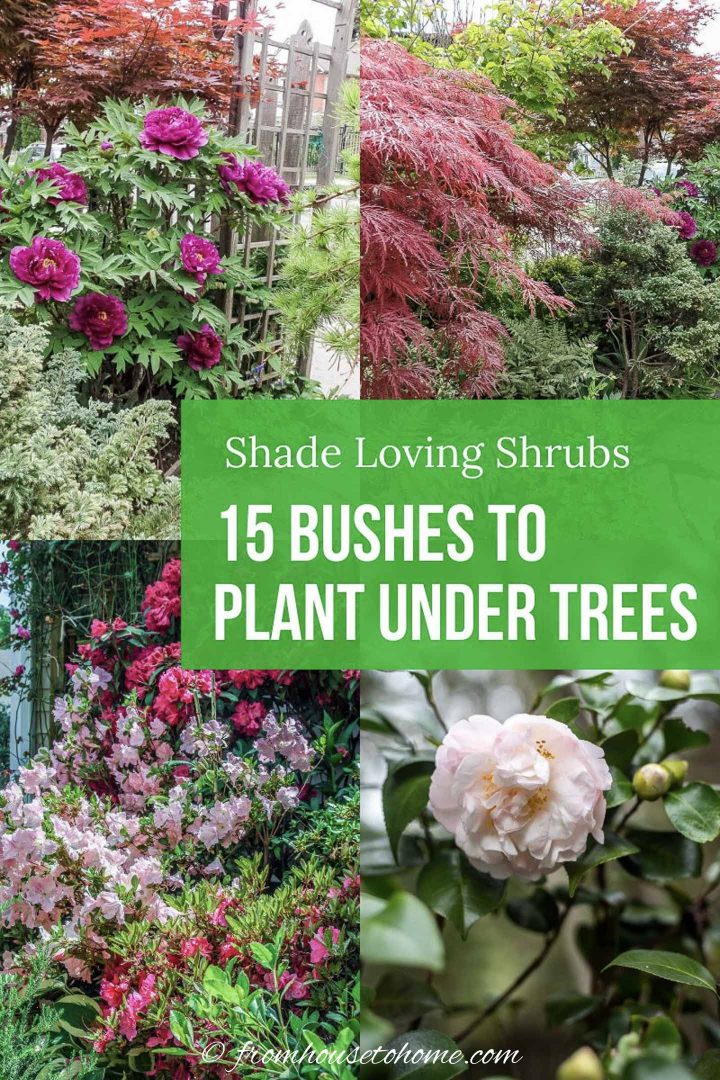
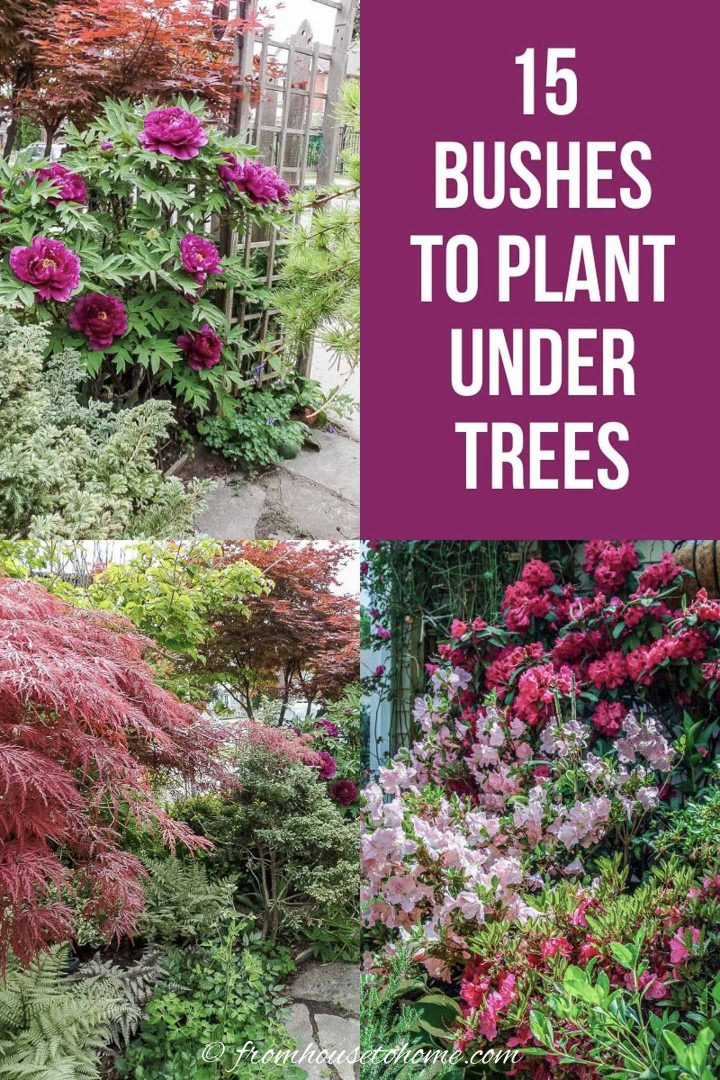
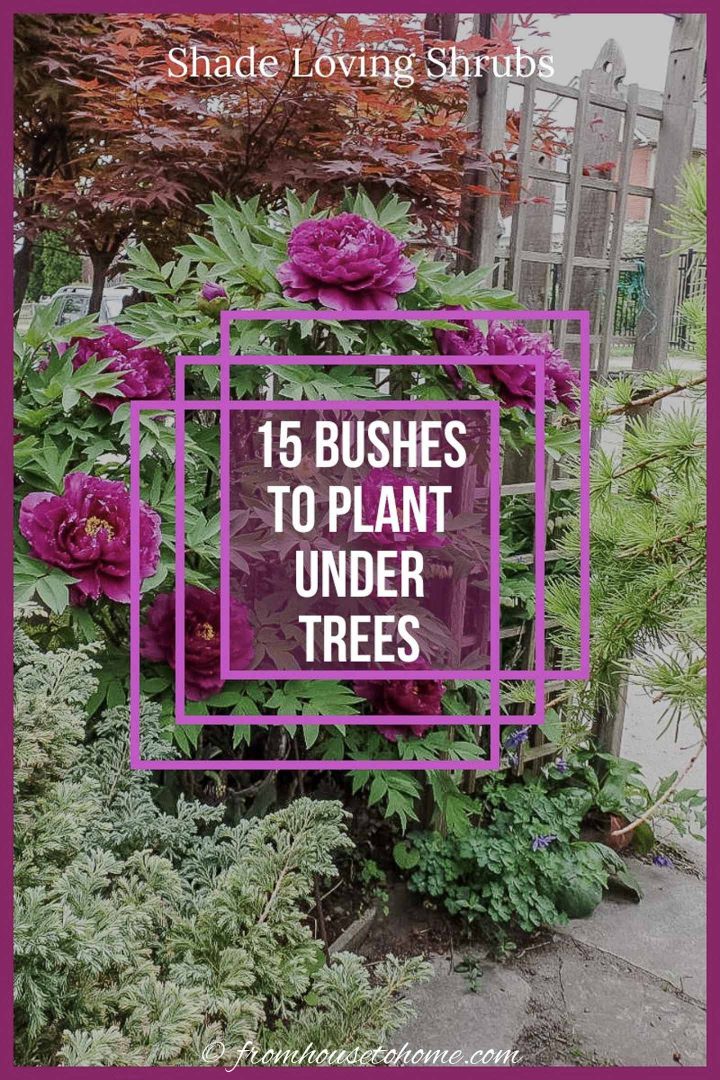
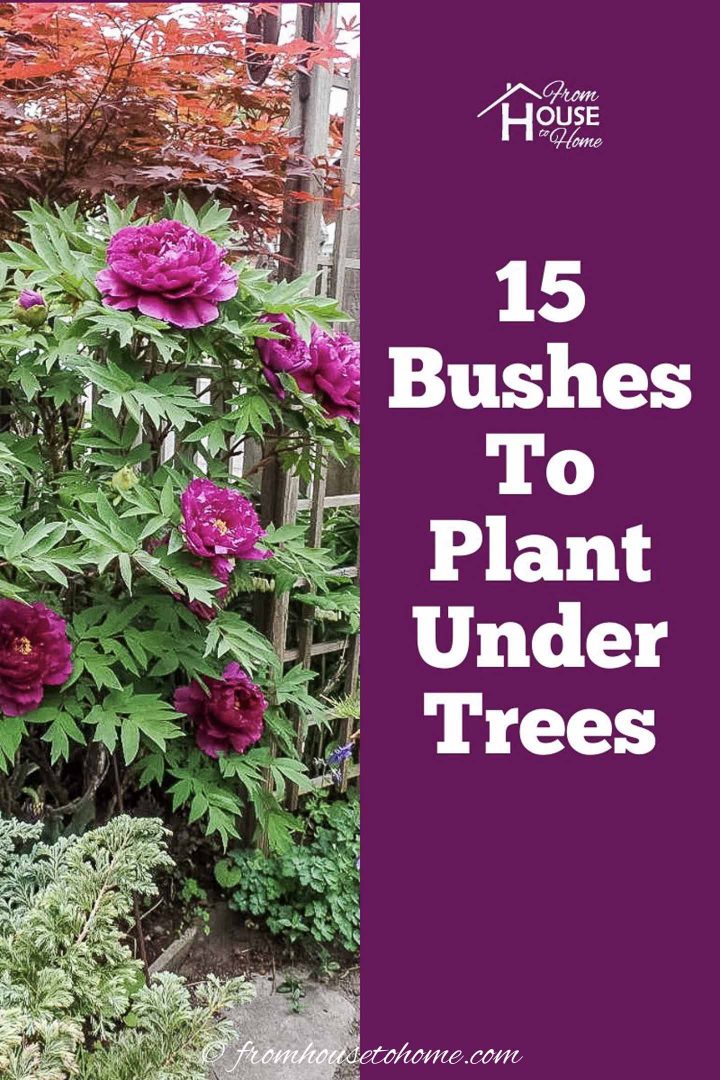
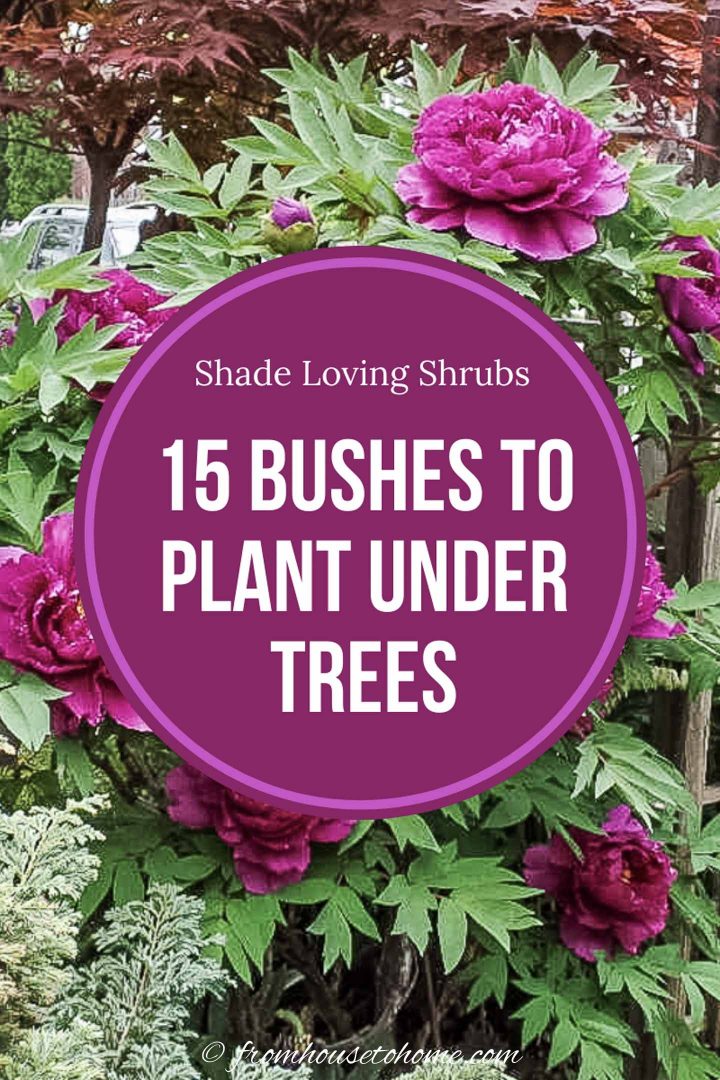
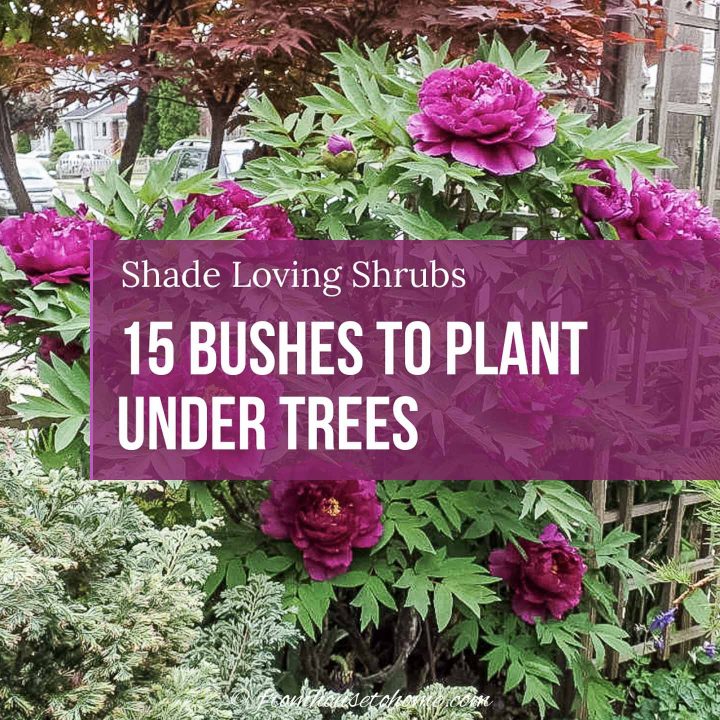
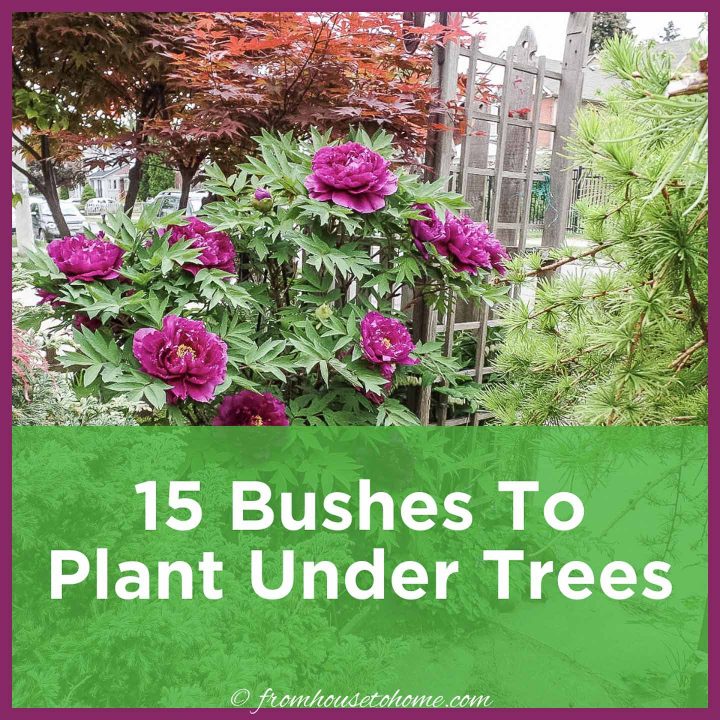
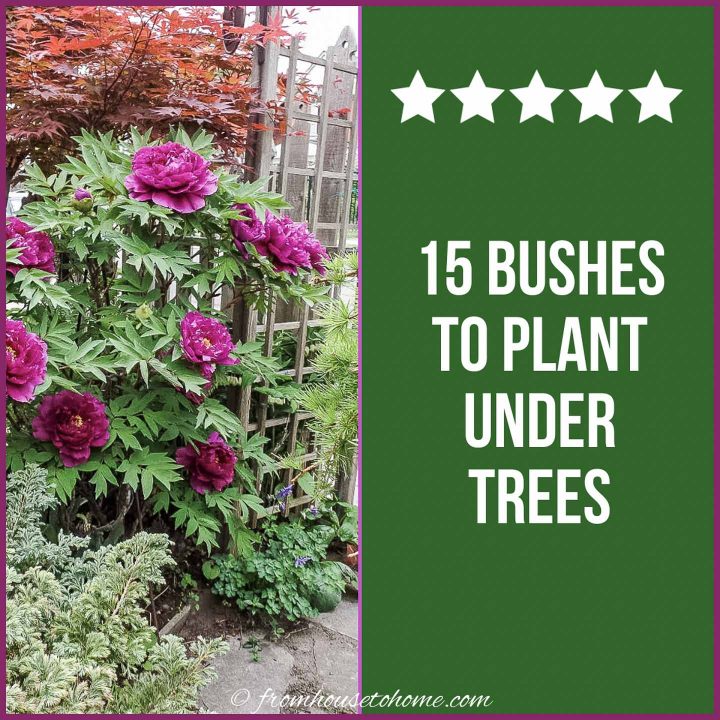
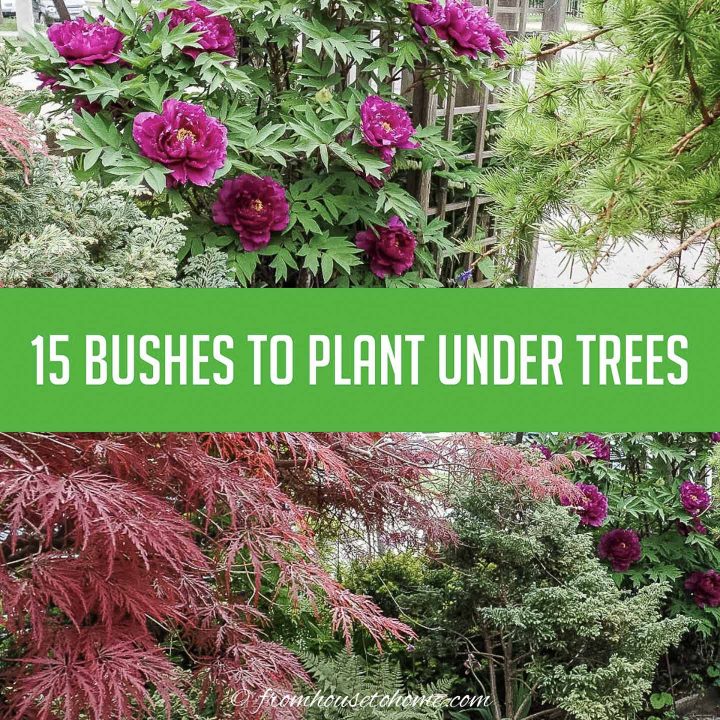
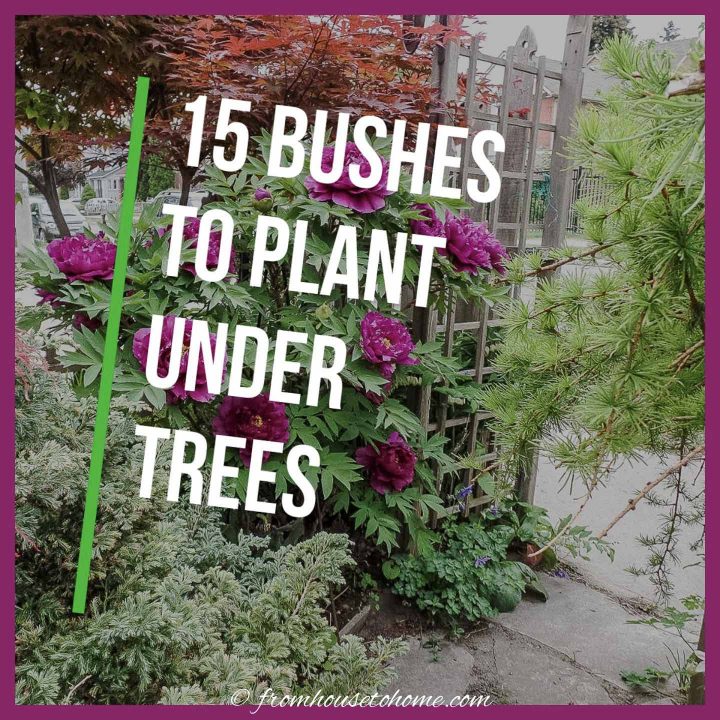
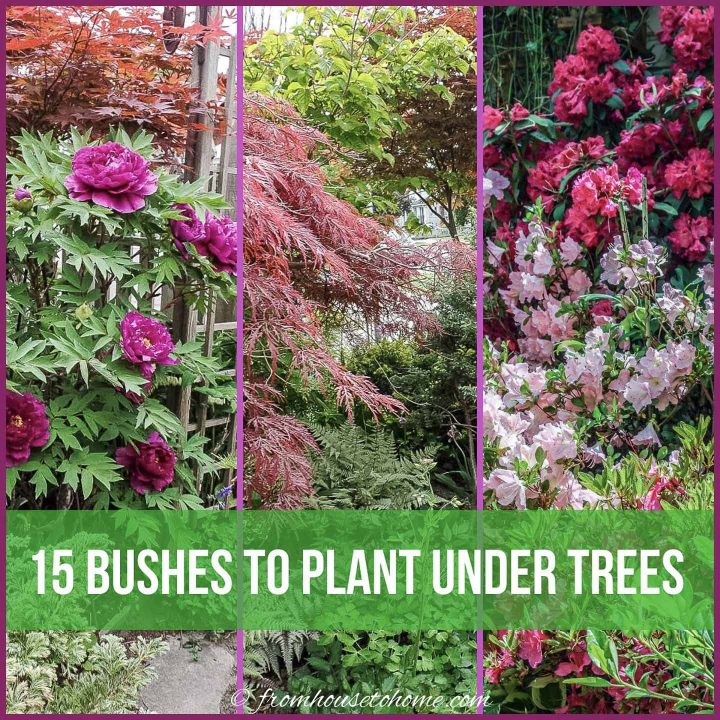
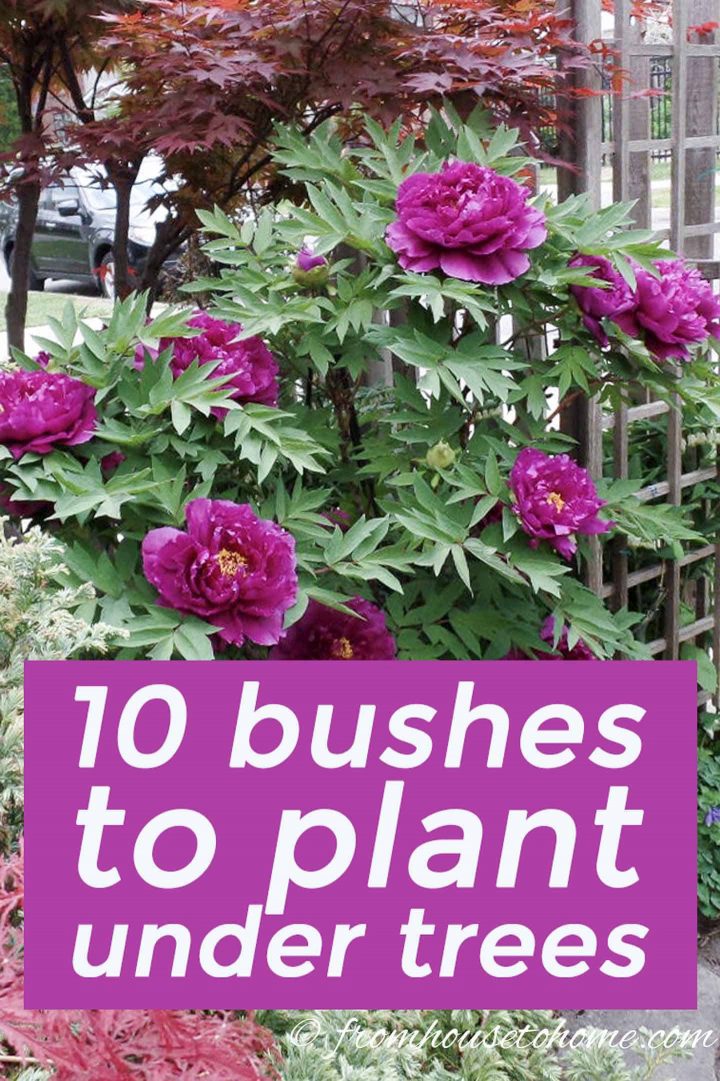
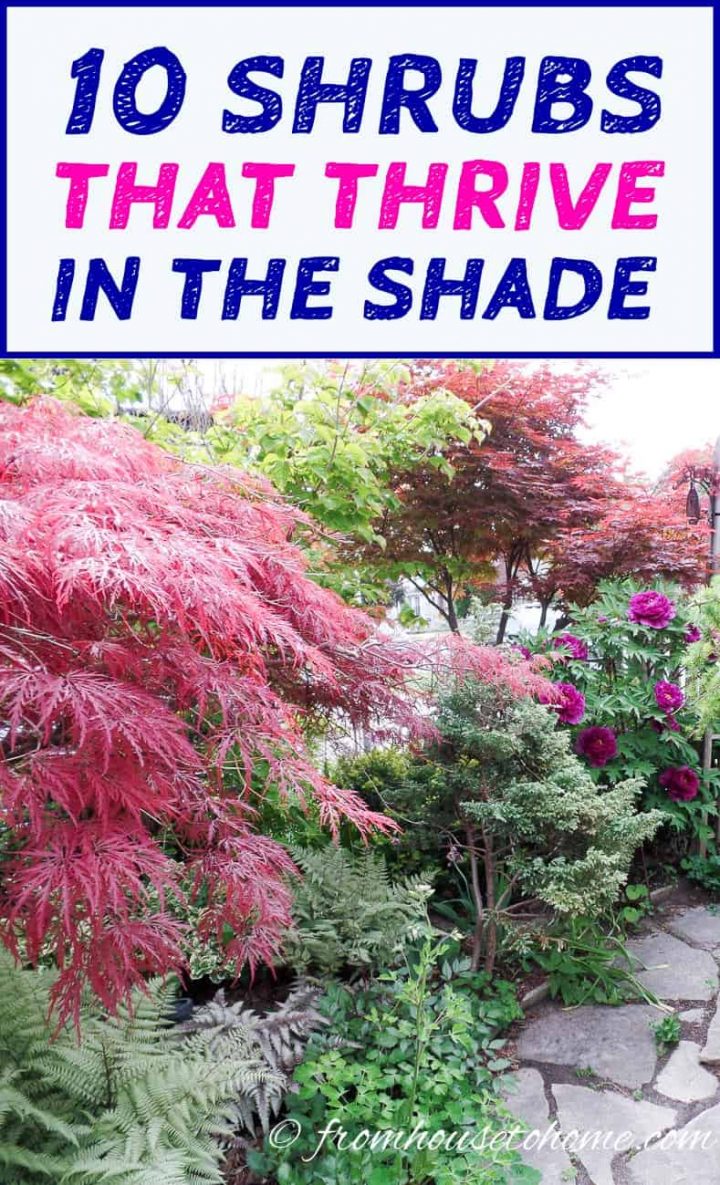
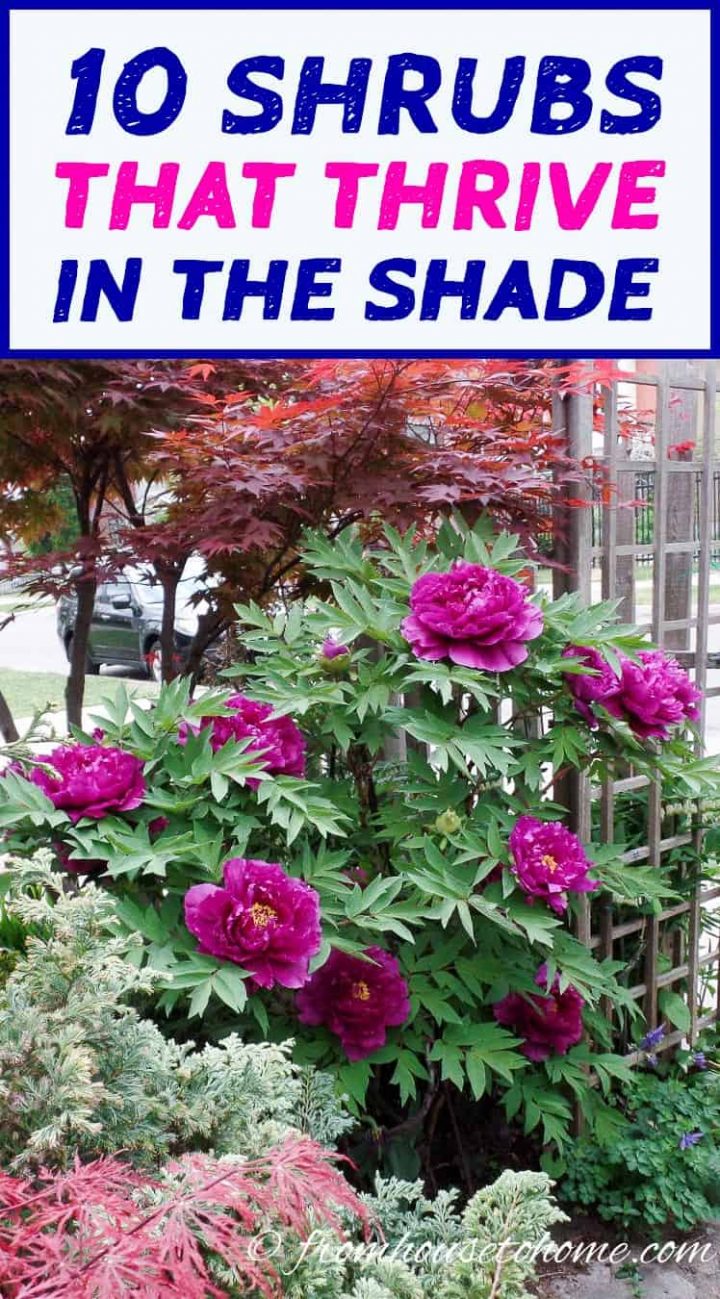

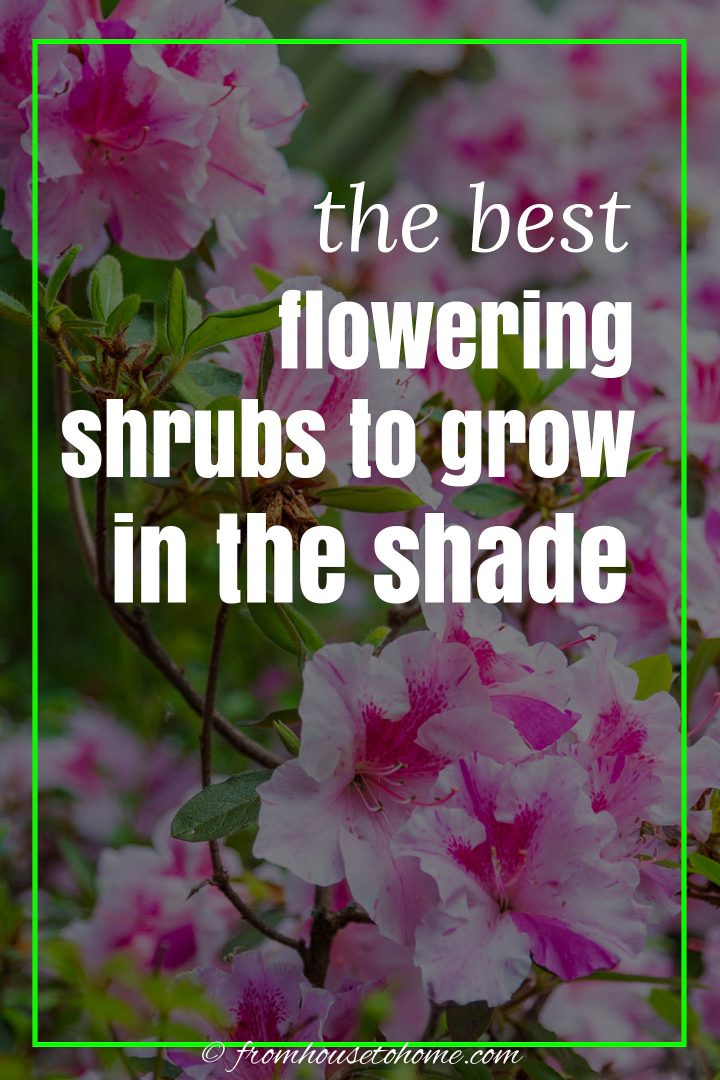
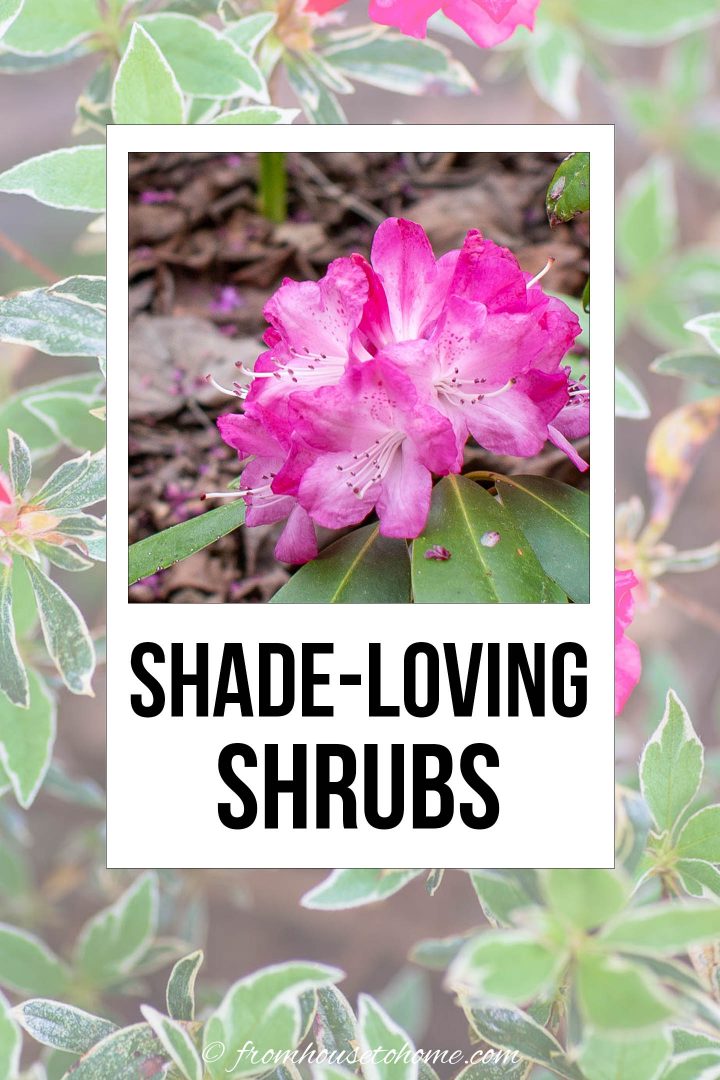
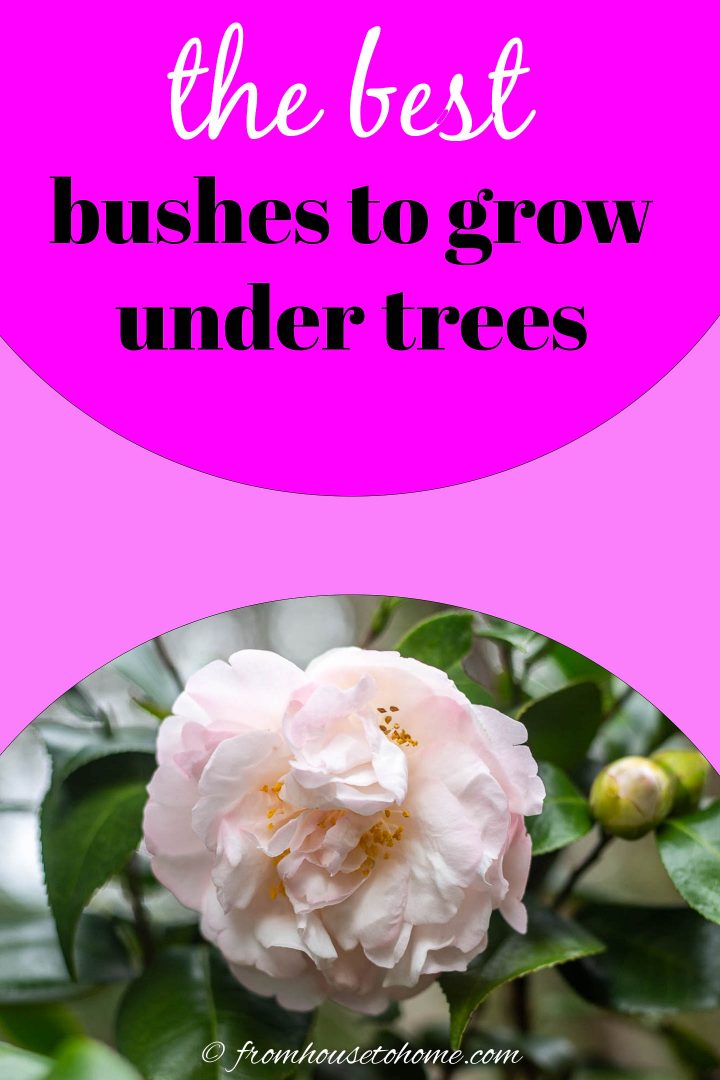
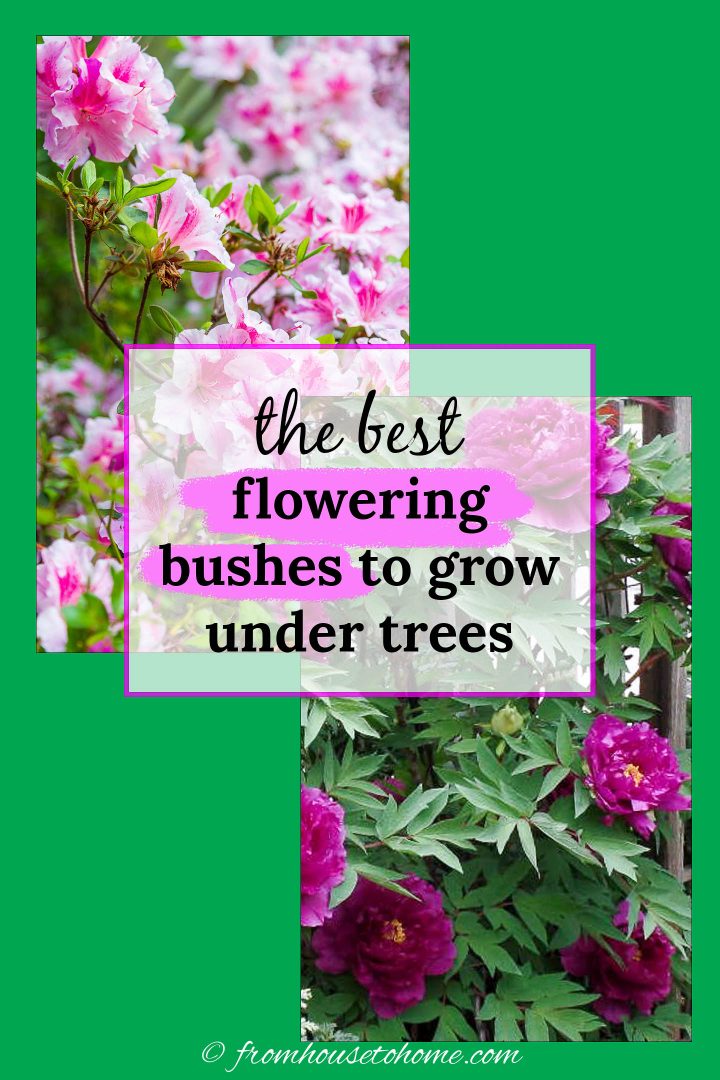
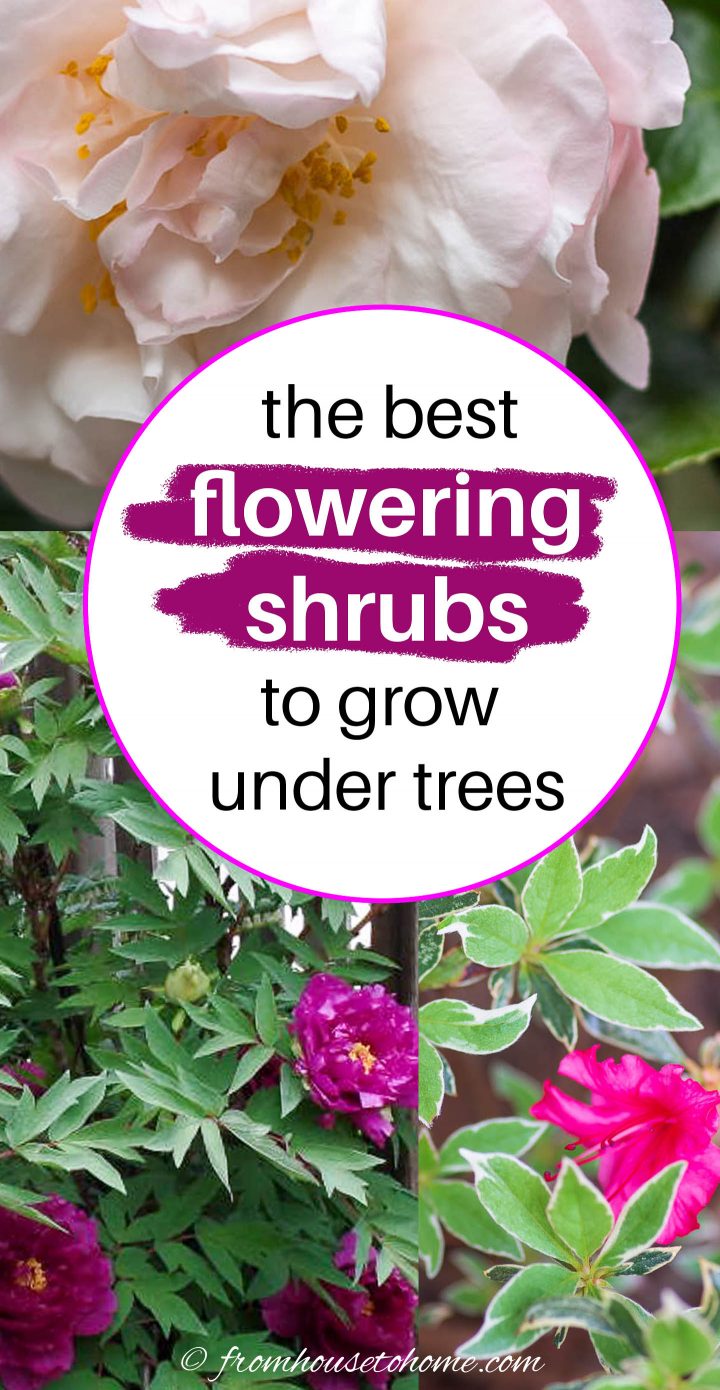
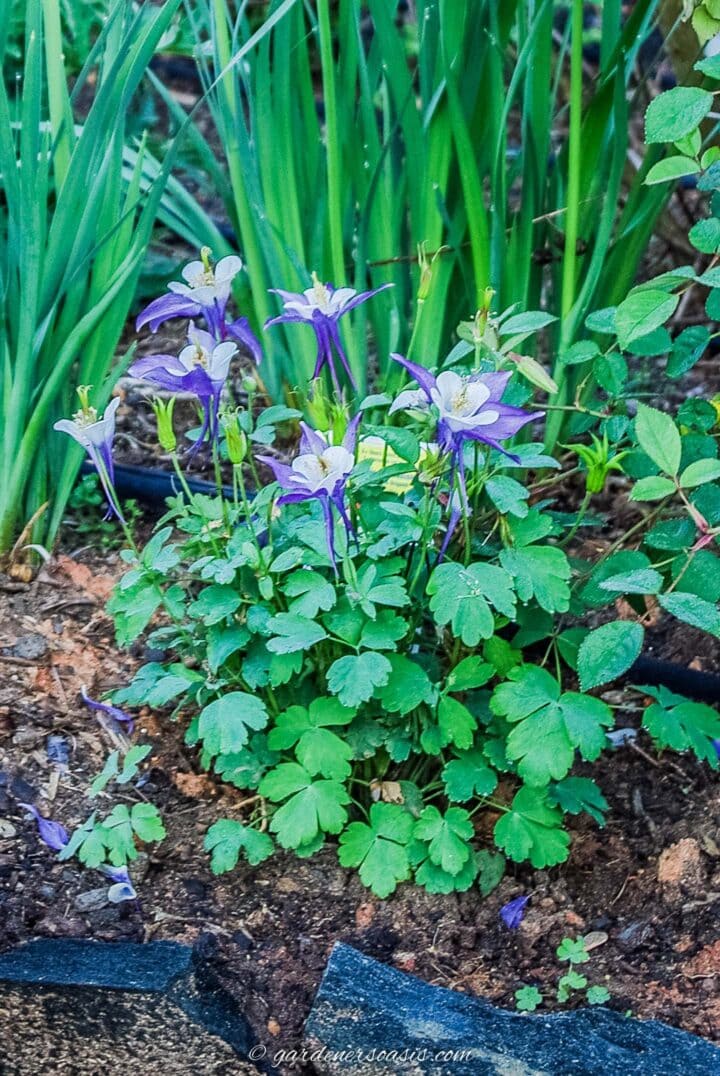
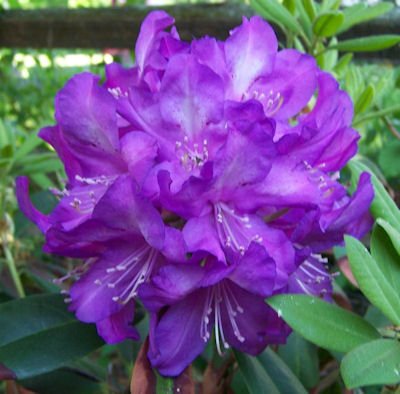

Living in Florida with Live Oak trees is a challenge. Not too much lives under live oaks. Can you give me some ideas? We are in Clearwater.
Hi Tracy…I haven’t had a Live Oak tree in my yard, but I love the look of them! I think you would need to find shade plants with shallow roots that like acid soil. I would try ferns, azaleas and gingers. If you can find native ones, they are usually easier to get growing in tough conditions. Start with small plants…it will probably be easier to get them in the ground without having to dig up too many roots and where you are, I’m guessing it doesn’t take too long for them to get big anyhow 🙂 Hope this helps!
Bluebells grow under walnut trees they will grow under oaks.
Hello Pam, Bluebells do look lovely under trees in the spring. Because they go dormant in the summer, they need to be companion planted with something like hostas and ferns to give all season interest. Happy gardening!
Some walnut trees produce juglone, which inhibits the growth of other plants. Are bluebells resistant to it?
Hello John, Both Spanish and Virginia Bluebells will grow under walnut trees.
I live in Tampa and have had great luck with Bromeliad’s. They are a shallow root and easy to maintain.
Hello Tracy, Your shady areas must look stunning! I can imagine how Bromeliads would bring in color and light.
I am limited to deer resistant varieties. Can you suggest a few I can plant under pines.
English boxwood (Buxus sempervirens) will grow in the shade and is not eaten by deer. Potentilla has dainty foliage and flowers that would look lovely in front of the pines, if you can find a partial sunny location for it.
I live in East Texas with Sugar Sand. It is like beach sand high in acid. I plant air plane plants(spider plants) under my trees. They freeze in the winter but come back in the spring. They do better than ferns or hosta. They were originally from Africa used as a ground cover.
Thanks for the suggestion, Carol. That sounds like it would work well!
I live in southeast central Ohio. My husband and I purchased a new home in the country last spring and are looking for ways to jazz up the 3 acres of cleared land. Thanks for sharing these great suggestions. Looks like we will have our work cut out for us next spring!
Thanks, Tara! I’m glad you got some ideas…it sounds like you will be REALLY busy in your yard next year 🙂
Looks like u posted a deciduous azelia for the mountain laurel.
Thanks, Dot! You are right! Thanks for letting me know…I’ve updated the picture.
I live in Massachusetts and my Annabelle’s do great in the shade.
Thanks, Teri! I haven’t had much luck getting Annabelle to bloom very well in the shade, but it’s good to know it is possible 🙂
Are any of these deer resistant.? I live in NEPA with deer!
Thanks
Hi Susan…Pieris Japonica, Daphne and Boxwood are all deer resistant. You can find more deer-resistant plants for shade HERE. Hope that helps!
Susan, boxwood is definitely deer resistant. My parents’ rhododendrons got eaten by deer this winter, but the boxwood shrubs right next to the rhododendrons were left untouched. Not even nibbled!
They live right across the road from a state park and protected wetland, so they get plenty of deer and other wildlife on their property.
very nice post
thank you
I would love to plant shrubs under my trees but the trees have been there a long time and the limbs grow everywhere. How can I plant bushes under the trees when the limbs get in the way?
Hello Regina, It can be difficult to plant under mature trees. Sometimes, I limb the trees up so that I can plant under. It depends on the shape of the tree and if they can still retain their look. I do this with ornamental pears for example, but not with dogwoods. Most often the tree roots will not allow much room for planting. A root can be pruned to allow space for a bush or a perennial. I augment the soil with triple mix and build the soil up higher to take the new bush. There are times when a well placed pot filled with annuals or perennials is the best option.
People around here add soil to allow for planting around/under trees — and it’s slowly killing many of our village’s old, large trees. A local expert sees decline in as little as 6 months when the tree roots (especially the all-important ‘root flare’) are suffocated with soil. Of course, the same goes for too-thick mulch.
Last year, they treated a 100+ yr old oak, noting that the owners were wise to notice die-back starting at the top and outsides. Arborists excavated nearly a foot of soil before locating the flare!
Thank you Mary Ann for bringing an important point to our attention. I agree that soil depth should not be increased in the root flare area.
Please do a LOT of research before digging into established ground under trees. For sure, stay away from the trunk, but planting anywhere within the ‘drip line’ area can be risky. Our neighbors had a lovely native garden planted well away from the trunk, but the tree is failing now. It’s a magnificent oak — at least 65 yrs old — and it’s so sad to think they’ll lose it. They’re paying $$$ for special treatments now, but huge limbs have already had to be removed, as they could’ve easily fallen onto the sidewalk.
(Understory planting at the same time as the tree is fine — they’ll happily grow together over the years.)
I have a tree line that separates my neighbors yard and mine. His yard is trashy and I’m trying to find something that would grow about 4-5 ft tall to hide it, even in the winter. I’m at a total loss please help.
Hello Rachel,
The classic privacy screen for the property line can be created by planting emerald arborvitae(Thuja occidentalis ‘Smaragd’) every 3 feet on center. They will require minimum pruning and are evergreen. For a lower evergreen hedge, I suggest PGM Rhododendrons. They will put on a gorgeous blooming show in the spring.
In the deciduous category, you might like a row of Bridal wreath spiraea which will be covered in white blossoms in early summer. Another easy to grow spring bloomer is the common lilac. A row of them along the fence would block eyesores. I hope these suggestions help.
Hello, we live south of Lexington,ky
Out place has 60-year-old mature trees in the front and back of her home,
I have wasted so much money on plants nothing ever lives.
It seems unlimited too hostas and Liriope. So boring!!!
I do get color from my impatience on my front porch.i think we are zone 6b
Any suggestions?
Hi Angela…Bushes with shallow roots that are native to wooded areas (like Rhododendrons, Mountain Laurel and Japanese Maples) usually grow pretty well in those conditions. However, to be successful, you will need to make sure they get watered well since those large tree roots usually take a lot of moisture out of the soil.
I’m looking into planting a limelight Hydrangea tree 5 feet out from my house. This is along one side of my house. I already have a boxwood bush that grows up to 5 feet tall along the porch. Also a small round boxwood bush that will grow on the outer side. These two bushes are closer to the house. Allowing one foot of clearance from the house as it grows to maturity. The limelight Hydrangea will be 5 feet out from the house. Will these plantings be compatible? How do you think it will look as a finished design? I appreciate your professional opinion. Thank you! Amy
Hi Amy…I think the Limelight Hydrangea and the Boxwoods will do quite well together. The architectural shape of the Boxwoods will provide structure all year round that contrasts with the form of the Hydrangea, while the Hydrangea adds beautiful flowers in the summer. It sounds very pretty!
Our trees practically impossible due to so many roots. But I so appreciate your reply. I do have an area on the side of my house My husband made a bed and it’s beautiful it’s approximately 15 ft long 4 ft deep it will get maybe less than an hour of sun in the morning. Any suggestions for perennials that would give us color? You do see this as you’re pulling up our driveway
Hi Angela…Yes, if the trees have that many roots, it will be hard to get a lot of things to grow there. For shade perennials, we actually have a list HERE. Many of them will do quite well with very little sun.
Use assorted shade coleus in varying heights. They’re beautiful and come in both Sade and sun combined varies now! Very low maintenance too
I agree Michele — mass planting of coleus is a stunning solution for the shady garden. Thank you for the suggestion.
Thank you for your prompt response.
I live in Ontario, Canada Zone 5. I have a flowering willow shrub that i need to move because it doesn’t like the shade. I also have deer! What would you suggest I repace it with?
Hello Daryl, My first choice would be Doghobble (Leucothoe ‘Rainbow’)– a gorgeous variegated evergreen native to NE United States.
You might also like Japanese Holly (I. crenata), Oregon grape (Mahonia aquifolium), or one of these Evergreen Barberries (B. x stenophylla ‘Corallina Compacta’) or (B. x gladwynensis ‘William Tell’). All are deer resistant.
What small plants wl plant under lrg.lilactrees ??
Hello Grace,
I have Solomon’s seal, Hosta, Bleeding heart and yellow Sedge edging planted under one old lilac. Under my French lilacs, which are limbed up, I have bushes like azalea, rhododendron, a boxwood, and a spirea. These are underplanted with Hosta and Hellebores. I have Cranesbill and Colchicum around the periphery of my Korean lilac. Hope these suggestions help.
Located in Sarasota, FL, I have a large area just off our lanai and around to our master bedroom- shaded like mad from 50 foot live oaks. It’s overgrown from past owners & we want some color & texture variation if possible. About 10 feet of gorgeous ginger will stay but need suggestions for the filtered light.
Hello Joni, I would choose plants native to Florida and have some white or off white leaves in the mix. You may like dwarf azalea, variegated arboricola, star jasmine, underplanted with royal fern, spiderwort and anise. Hope these suggestions are useful.
Thanks for this helpful article on which bushes to plant under trees. Your research and suggestions are much appreciated. Keep up the great work!
You are welcome, Adrienne. We appreciate your thoughtfulness in letting us know your reaction to the post. Happy gardening!
I have very tall Leyland Cyprus trees that were planted for privacy and need to have the bottom 4 to 6 ft trimmed. What can I plant under these for lost privacy? I’m in Maryland, zone 6b.
Hello Suzie, I think any of the bushes in my blog on “Shade Loving Shrubs” would work. If you want evergreens go with Yews or Rhododendrons. Azaleas (make sure you get the evergreen ones) may be easier to plant with their shallow roots. If you have part sun, I am really excited about a new hydrangea called ‘Invincible Ruby’. I looks amazing mass planted and reblooms all summer. Your Leyland Cyprus trees have shallow roots, so you will need to be very careful with any planting around them. Disturbing the roots may cause the trees to blow over in a wind.
Any suggestions for shade-loving bushes (flowering or not) that will grow under or near black walnut trees but are DEER-RESISTANT? We have both black walnut trees and many, many deer in the wooded area just beyond our back yard.
Hello Jane, You could grow Viburnum Arrowwood ‘Chicago luster’ which has white flowers in the summer and blue berries in the fall and beautiful shiny foliage. Or you might like to choose Crimson Pigmy Barberry, with foliage that is pinker depending on the amount of light it gets. While not a bush, I would try to fit in a Kousa Dogwood. Green giant Arborvitae will grow quickly and need to be pruned but would give you an evergreen presence. All are deer resistant except the dogwood which is deer tolerant.
Thank you for the suggestions. We will try them. Hoping they do well near the black walnut tress, which apparently release a toxic chemical of some kind.
Jane
Thanks for this interesting article on which types of bushes to plant under trees. We appreciate having reliable information at our fingertips. Keep up the good work!
I love all the shade plants. What do I plant that gophers and voles do not love? I am in zone 9 They are destroying even the well established bushes.
Joanne, you do have a dilemma. There are biodegradable baskets that you can plant your bushes and trees in or use wire at the bottom of raised beds. The long term solution is to get rid of the gophers and voles by trapping or poisoning them.
Flora, thank you for your response. I do have a gardener working on trapping the gophers, but the moles and voles are even more of a problem. I have purchased the wire collapsible baskets but am concerned that the roots will become too tight in the baskets. They do expand but far enough? They also cost $10.00 for 2-5 gallon and $10 For 4-1 gal. I have a big yard. Even my Cala Lily’s fall over in the first wind because of the tunnel under them where they have eaten most of the roots. I let the neighbors cats use my yard, I put out the sulfur firecrackers, pests control puts bait in their tunnels and granules on top of the ground that supposedly they don’t like. Even my nandina have tunnels to their roots this year and are not doing well. I love flowers but it is disappointing.
Joanne,
I have learned to live with the vole and mole problem although recently we have trapped and neutered two ferral cats that are helping control them. We live in a forested area so it’s a constant challenge. I encourage snakes by importing them from neighbors who don’t like them as well. Vole proof plants we have are are false solomens seal, hellebores, astilbe, monkshood, pulmonarias, sweetbox, lamium, ajuga, asarum splendens, european ginger, sweetwoodruff, japanese forest grass, some hostas ( stay away from fragrant flowering varieties) saxifraga, acanthus, all ferns seem ok, azaleas, pieris, plum yew, phlox divicarta woodland phlox, phlox paniculata , brunerra, corydalis lutea, labrador violets, columbine, blood root, oxalis charm, iris cristata, may apple, jack in the pulpit vinca and pachysandra. good luck
Thank you Mark for sharing your experience and for putting together such a comprehensive list of perennials that can survive moles. Good to know information!
I live in So.Calif. on the Palos Verdes Peninsula and gophers and voles were pests.
How I cured the problem:
I went to Smart and Final and bought the largest and hottest Tabasco sauce.
I found the main tunnels, and with a long screw driver deepen the holes, and with a long funnel ,(used for putting gas in a car ) funnel down holes, sauce into funnels,
Do this consistently, and they died, disappeared, or moved to a better location.
Problem solved.
Oh, and the surrounding plants love the acid from the sauce !
Thank you for sharing your success with eradicating vole and gopher varmints, Glenda. Good information to know.